Category: Agriculture, ignorance, subsidy, marketing
GI Tag for Cumbum Grapes
17, Apr 2023

Why in News?
- Tamil Nadu’s famous Cumbum Panneer Thratchai, also known as Cumbum grapes recently earned the Geographical Indication (GI) tag.
About the Cumbum grapes:
- The Cumbum Valley located at the Western Ghats in Tamil Nadu is known as the ‘Grapes City of South India’ and cultivates the Panneer Thratchai.
- This variety, also known as Muscat Hamburg, is popular for its quick growth and early maturity, ensuring that the crop is available in the market almost throughout the year.
- The Panneer grapes were first introduced in Tamil Nadu by a French priest in 1832 and are rich in vitamins, tartaric acid and antioxidants and reduce the risk of some chronic diseases.
- They are also known for a superior taste apart from the purplish brown-colour.
What is GI Tag?
- A GI or Geographical Indication is a name or a sign given to certain products that relate to a specific geographical location or origins like a region, town or country.
- Using Geographical Indications may be regarded as a certification that the particular product is produced as per traditional methods, has certain specific qualities, or has a particular reputation because of its geographical origin.
- Geographical indications are typically used for wine and spirit drinks, foodstuffs, agricultural products, handicrafts, and industrial products.
- GI Tag ensures that none other than those registered as authorized users are allowed to use the popular product name.
- In order to function as a GI, a sign must identify a product as originating in a given place.
Who accords and regulates Geographical Indications?
- Geographical Indications are covered as a component of intellectual property rights (IPRs) under the Paris Convention for the Protection of Industrial Property.
- At the International level, GI is governed by the World Trade Organisation’s (WTO’s) Agreement on Trade-Related Aspects of Intellectual Property Rights (TRIPS).
- In India, Geographical Indications registration is administered by the Geographical Indications of Goods (Registration and Protection) Act, 1999 which came into force with effect from September 2003.
- The first product in India to be accorded with GI tag was Darjeeling tea in the year 2004-05.
What are the Benefits of GI Tags?
- The Geographical Indication registration confers the following benefits:
- Legal protection to the products
- Prevents unauthorised use of GI tag products by others
- It helps consumers to get quality products of desired traits and is assured of authenticity.
- Promotes the economic prosperity of producers of GI tag goods by enhancing their demand in national and international markets.
What are the Significances of GI Tags?
- A geographical indication right facilitates those who have the right to use the indication to prohibit its usage by a third party whose product does not conform to the applicable standards.
- For example, in the purview in which the Darjeeling geographical indication is protected, producers of Darjeeling tea can omit the term “Darjeeling” for tea not grown in their tea gardens or not produced according to the norms set out in the code of practice for the geographical indication.
- However, a protected GI does not permit the holder to forbid someone from making a product using the same approaches as those set out in the standards for that indication.
- Protection for a GI tag is usually procured by acquiring a right over the sign that constitutes the indication.
Challenges in GI Tags:
- The special treatment to wines and spirits in TRIPS Agreement appears to be developed country centric.
- Developing countries, including India, seek the same higher level of protection for all GIs as was given under TRIPS for wines and spirits.
- The battle for GI tag between states.
- False use of geographical indications by unauthorized parties is detrimental to consumers and legitimate producers.
- Cheap Power loom saris are sold as reputed Banarsi handloom saris, harming both the producers and consumers.
- Such unfair business practices result in loss of revenue for the genuine right-holders of the GI and also misleads consumers.
- Protection of GI has, over the years, emerged as one of the most contentious IPR issues.
Way Forward:
- The benefits of GI tag are realised only when these products are effectively marketed and protected against illegal copying.
- Effective marketing and protection require quality assurance, brand creation, post-sale consumer feedback and support, prosecuting unauthorised copiers, etc.
- For internationally recognised products like Darjeeling tea, international protection is of crucial importance.
- Legal protection to GIs also extends to protection of traditional knowledge and traditional cultural expression contained in the products.
- Hence Intellectual Property is a power tool for economic development and wealth creation particularly in the developing world.
- GIs have the potential to be our growth engine. Policy-makers must pay a heed to this and give Indian GI products their true reward.
Essential Commodities Act
27, Feb 2023

Why in News?
- The Centre has maintained that there is no move to ban the export of onions.
About the Essential Commodities act:
- The Essential Commodities Act, 1955 was enacted to ensure the easy availability of essential commodities to consumers and to protect them from exploitation by unscrupulous traders.
- The Act provides for the regulation and control of production, distribution and pricing of commodities which are declared as essential.
- Essential items under the Act include drugs, fertilisers, pulses and edible oils, and petroleum and petroleum products.
- The Act aim at maintaining/increasing supplies/securing equitable distribution and availability of these commodities at fair prices.
- Centre invokes the ECA Act’s provisions to impose stock limits in case of price/quantity distortions in the market to ensure adequate availability of essential commodities at reasonable prices.
- States are the implementing agencies to implement the EC Act, 1955 and the Prevention of Black marketing & Maintenance of Supplies of Essential Commodities Act, 1980, by exercising powers delegated to them.
- The list of essential commodities is reviewed from time to time with reference to their production and supply and in consultation with concerned Ministries/Departments.
- Currently, the restrictions like licensing requirement, stock limits and movement restrictions have been removed from almost all agricultural commodities.
- Exemptions: Wheat, pulses and edible oils, edible oilseeds and rice are certain exceptions.
- The recent amendment to the Legal Metrology (Packaged Commodities) Rules 2011 is linked to the ECA. The Government can fix the retail price of any packaged commodity that falls under the ECA.
Arguments against ECA:
- An archaic law: Essential Commodities Act has been in existence since 1955, when the economy was very different from what it is today. It was an economy ravaged by famine and food shortages.
- Difference between storage and hoarding: Recently there is evidence of interventions not working. It is because there is a distinction between storage and hoarding.
- As compared to older times, when the economy experiences acute shortages, today many shortage cases are actually that of hoarding.
- Stock limits led to onion price volatility: To control soaring prices of onions over the last few months, centre through ECA imposed stock limits on onions. Instead of decreasing prices, this actually increased price volatility.
- Although the restrictions on both retail and wholesale traders were meant to prevent hoarding and enhance supply in the market, the Survey showed that there was actually an increase in price volatility and a widening wedge between wholesale and retail prices.
- Lower stock limit led traders and wholesalers to immediately offload most of the kharif crop which led to a sharp increase in the volatility.
- Disincentivises storage infrastructure development: With too-frequent stock limits, traders may have no reason to invest in better storage infrastructure in the long run.
- Also, food processing industries need to maintain large stocks to run their operations smoothly. Stock limits curtail their operations. In such a situation, large scale private investments are unlikely to flow into food processing and cold storage facilities.
- Higher prices of medicines: Drug Price Control Order issued under the ECA also distorted the market and actually made medicines less affordable.
- The increase in prices is greater for more expensive formulations than for cheaper ones and for those sold in hospitals rather than retail shops.
- Rent seeking and Low conviction rates: Despite many raids conducted under the ECA in 2019, the conviction rate was abysmally low. The ECA only seems to enable rent-seeking and harassment.
Way Forward:
- Adequate supply: Given that almost all crops are seasonal, ensuring round-the-clock supply requires adequate build-up of stocks during the season.
- Without the ECA the common man would be at the mercy of opportunistic traders and shopkeepers.Genuine shortages: There can be genuine shortages triggered by weather-related disruptions in which case prices will move up.
- So, if prices are always monitored, farmers may have no incentive to farm.
- Difficult to differentiate between hording and shortage: It may not always be possible to differentiate between genuine stock build-up and speculative hoarding.
Delhi HC in trademark infringement claim
28, Dec 2022

Why in News?
- The Delhi High Court granted an interim injunction in favour of Hamdard Laboratories in its plea against Sadar Laboratories Private Limited for infringing its registered trademark.
About the News:
- The Court has restrained the manufacture and sale of sweet beverage concentrate ‘Sharbat Dil Afza’ during the pendency of a lawsuit for alleged trademark infringement by Hamdard Dawakhana which sells ‘Rooh Afza’.
What is a Trademark?
- A trademark is a sign capable of distinguishing the goods or services of one enterprise from those of other enterprises. Trademarks are protected by Intellectual Property Rights (IPR).
- In India, trademarks are governed by the Trade Marks Act 1999, which was amended in 2010.
- It legally differentiates a product or service from all others of its kind and recognizes the source company’s ownership of the brand.
- Although trademarks do not expire, the owner must make regular use of it in order to receive the protections associated with them.
- It serves as a badge of origin exclusively identifying a particular business as a source of goods or services.
- Trademark infringement is the unauthorised usage of a sign that is identical or deceptively similar to a registered trademark.
- A mark is said to be strong when it is well-known and has acquired a high degree of goodwill.
- The degree of the protection of any trademark changes with the strength of the mark; the stronger the mark, the higher the requirement to protect it.
What is the Court’s Verdict?
- The court said Rooh Afza served as the source identifier for Hamdard for over a century and has acquired immense goodwill and it was essential to ensure that the competitors keep a safe distance from the mark.
- It is not difficult to conceive that a person who looks at the label of ‘DIL AFZA’ may recall the label of ‘ROOH AFZA’ as the word ‘AFZA’ is common and the meaning of the words ‘ROOH’ and ‘DIL’, when translated in English, are commonly used in conjunction.
- Both the products have the “same deep red colour and texture” and “structure of the bottles is not materially different” and thus opined that the “commercial impression of the impugned trademark is deceptively similar to the appellants’ trademark”.
GI Status for Kerala’s Five Agricultural Products
19, Dec 2022
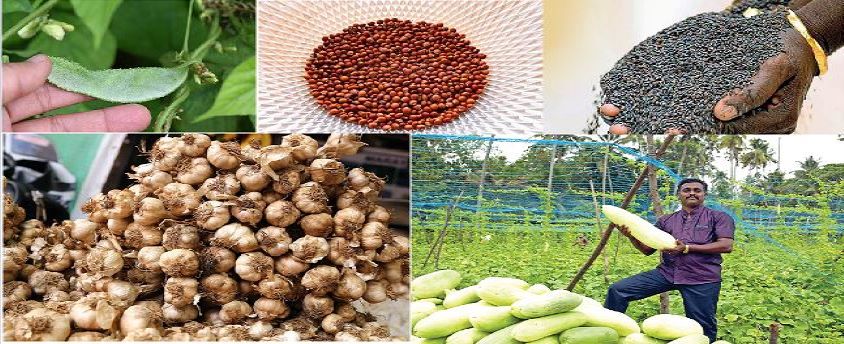
Why in News?
- The Geographical Indications Registry at Guindy, Chennai, has received an application from the Tribal Development Council, Andaman & Nicobar Islands, seeking the Geographical Indication (GI) tag for the Nicobari hodi boat which is the first application from the Union Territory seeking a tag for one its products.
What are the Key Facts about the Latest GIs?
- Attappady Attukombu Avara (Beans):
- It is curved like a goat’s horn as its name indicates.
- Its higher anthocyanin content compared to other dolichos beans imparts violet colour in the stem and fruits.
- Anthocyanin is helpful against cardiovascular diseases along with its antidiabetic properties.
- The higher phenolic content of Attappady Attukombu Avara imparts resistance against pest and diseases, making the crop suitable for organic cultivation.
- Attappady Thuvara (Red Gram):
- It is having seeds with white coat.
- Compared to other red grams, Attappady Thuvara seeds are bigger and have higher seed weight.
- Onattukara Ellu (Sesame):
- Onattukara Ellu and its oil are famous for its unique health benefits.
- Relatively higher antioxidant content in Onattukara Ellu helps in fighting the free radicals, which destroy the body cells.
- Also, the high content of unsaturated fat makes it beneficial for heart patients.
- Kanthalloor-Vattavada Veluthulli (Garlic):
- Compared to the garlic produced in other areas, this garlic contains higher amount of sulphides, flavonoids, proteins and also rich in essential oil.
- It is rich in allicin, which is effective against microbial infections, blood sugar, cancer, etc.
- Kodungalloor Pottuvellari (Snapmelon):
- This snap melon, which is harvested in summer, contains high amount of Vitamin C.
- Compared to other cucurbits, nutrients such as calcium, magnesium, fibre and fat content are also high in Kodungalloor Pottuvellari.
What is GI Tag?
- A GI or Geographical Indication is a name or a sign given to certain products that relate to a specific geographical location or origins like a region, town or country.
- Using Geographical Indications may be regarded as a certification that the particular product is produced as per traditional methods, has certain specific qualities, or has a particular reputation because of its geographical origin.
- Geographical indications are typically used for wine and spirit drinks, foodstuffs, agricultural products, handicrafts, and industrial products.
- GI Tag ensures that none other than those registered as authorized users are allowed to use the popular product name. In order to function as a GI, a sign must identify a product as originating in a given place.
Who accords and regulates Geographical Indications?
- Geographical Indications are covered as a component of intellectual property rights (IPRs) under the Paris Convention for the Protection of Industrial Property.
- At the International level, GI is governed by the World Trade Organisation’s (WTO’s) Agreement on Trade-Related Aspects of Intellectual Property Rights (TRIPS).
- In India, Geographical Indications registration is administered by the Geographical Indications of Goods (Registration and Protection) Act, 1999 which came into force with effect from September 2003.
- The first product in India to be accorded with GI tag was Darjeeling tea in the year 2004-05.
What are the Benefits of GI Tags?
- The Geographical Indication registration confers the following benefits:
- Legal protection to the products
- Prevents unauthorised use of GI tag products by others
- It helps consumers to get quality products of desired traits and is assured of authenticity.
- Promotes the economic prosperity of producers of GI tag goods by enhancing their demand in national and international markets.
What are the Significances of GI Tags?
- A geographical indication right facilitates those who have the right to use the indication to prohibit its usage by a third party whose product does not conform to the applicable standards.
- For example, in the purview in which the Darjeeling geographical indication is protected, producers of Darjeeling tea can omit the term “Darjeeling” for tea not grown in their tea gardens or not produced according to the norms set out in the code of practice for the geographical indication.
- However, a protected GI does not permit the holder to forbid someone from making a product using the same approaches as those set out in the standards for that indication. Protection for a GI tag is usually procured by acquiring a right over the sign that constitutes the indication.
Challenges in GI Tags:
- The special treatment to wines and spirits in TRIPS Agreement appears to be developed country centric.
- Developing countries, including India, seek the same higher level of protection for all GIs as was given under TRIPS for wines and spirits.
- The battle for GI tag between states. False use of geographical indications by unauthorized parties is detrimental to consumers and legitimate producers.
- Cheap Power loom saris are sold as reputed Banarsi handloom saris, harming both the producers and consumers.
- Such unfair business practices result in loss of revenue for the genuine right-holders of the GI and also misleads consumers.
- Protection of GI has, over the years, emerged as one of the most contentious IPR issues.
Way Forward:
- The benefits of GI tag are realised only when these products are effectively marketed and protected against illegal copying.
- Effective marketing and protection require quality assurance, brand creation, post-sale consumer feedback and support, prosecuting unauthorised copiers, etc.
- For internationally recognised products like Darjeeling tea, international protection is of crucial importance.
- Legal protection to GIs also extends to protection of traditional knowledge and traditional cultural expression contained in the products.
- Hence Intellectual Property is a power tool for economic development and wealth creation particularly in the developing world.
- GIs have the potential to be our growth engine. Policy-makers must pay a heed to this and give Indian GI products their true reward.
Essential Commodities Act
06, Dec 2022

Why in News?
- States to set up district-wise price monitoring centres for essential items.
About the Essential Commodities act:
- The Essential Commodities Act, 1955 was enacted to ensure the easy availability of essential commodities to consumers and to protect them from exploitation by unscrupulous traders.
- The Act provides for the regulation and control of production, distribution and pricing of commodities which are declared as essential.
- Essential items under the Act include drugs, fertilisers, pulses and edible oils, and petroleum and petroleum products.
- The Act aim at maintaining/increasing supplies/securing equitable distribution and availability of these commodities at fair prices.
- Centre invokes the ECA Act’s provisions to impose stock limits in case of price/quantity distortions in the market to ensure adequate availability of essential commodities at reasonable prices.
- States are the implementing agencies to implement the EC Act, 1955 and the Prevention of Black marketing & Maintenance of Supplies of Essential Commodities Act, 1980, by exercising powers delegated to them.
- The list of essential commodities is reviewed from time to time with reference to their production and supply and in consultation with concerned Ministries/Departments.
- Currently, the restrictions like licensing requirement, stock limits and movement restrictions have been removed from almost all agricultural commodities.
- Exemptions: Wheat, pulses and edible oils, edible oilseeds and rice are certain exceptions.
- The recent amendment to the Legal Metrology (Packaged Commodities) Rules 2011 is linked to the ECA. The Government can fix the retail price of any packaged commodity that falls under the ECA.
Arguments against ECA:
- An archaic law: Essential Commodities Act has been in existence since 1955, when the economy was very different from what it is today. It was an economy ravaged by famine and food shortages.
- Difference between storage and hoarding: Recently there is evidence of interventions not working. It is because there is a distinction between storage and hoarding.
- As compared to older times, when the economy experiences acute shortages, today many shortage cases are actually that of hoarding.
- Stock limits led to onion price volatility: To control soaring prices of onions over the last few months, centre through ECA imposed stock limits on onions. Instead of decreasing prices, this actually increased price volatility.
- Although the restrictions on both retail and wholesale traders were meant to prevent hoarding and enhance supply in the market, the Survey showed that there was actually an increase in price volatility and a widening wedge between wholesale and retail prices.
- Lower stock limit led traders and wholesalers to immediately offload most of the kharif crop which led to a sharp increase in the volatility.
- Disincentivises storage infrastructure development: With too-frequent stock limits, traders may have no reason to invest in better storage infrastructure in the long run.
- Also, food processing industries need to maintain large stocks to run their operations smoothly. Stock limits curtail their operations. In such a situation, large scale private investments are unlikely to flow into food processing and cold storage facilities.
- Higher prices of medicines: Drug Price Control Order issued under the ECA also distorted the market and actually made medicines less affordable.
- The increase in prices is greater for more expensive formulations than for cheaper ones and for those sold in hospitals rather than retail shops.
- Rent seeking and Low conviction rates: Despite many raids conducted under the ECA in 2019, the conviction rate was abysmally low. The ECA only seems to enable rent-seeking and harassment.
Way Forward:
- Adequate supply: Given that almost all crops are seasonal, ensuring round-the-clock supply requires adequate build-up of stocks during the season.
- Without the ECA the common man would be at the mercy of opportunistic traders and shopkeepers.
- Genuine shortages: There can be genuine shortages triggered by weather-related disruptions in which case prices will move up.
- So, if prices are always monitored, farmers may have no incentive to farm.
- Difficult to differentiate between hording and shortage: It may not always be possible to differentiate between genuine stock build-up and speculative hoarding.
A & N seeks GI Tag for Nicobari hodi Boat
21, Nov 2022

Why in News?
- The Geographical Indications Registry at Guindy, Chennai, has received an application from the Tribal Development Council, Andaman & Nicobar Islands, seeking the Geographical Indication (GI) tag for the Nicobari hodi boat which is the first application from the Union Territory seeking a tag for one its products.
About the Brass and Bell Metal products:
- The hodi is the Nicobari tribe’s traditional craft.
- It is an outrigger canoe, very commonly operated in the Nicobar group of islands.
- The technical skills for building a hodi are based on indigenous knowledge inherited by the Nicobarese from their forefathers.
- The hodi is built using either locally available trees or from nearby islands, and its design varies slightly from island to island.
What is GI Tag?
- A GI or Geographical Indication is a name or a sign given to certain products that relate to a specific geographical location or origins like a region, town or country.
- Using Geographical Indications may be regarded as a certification that the particular product is produced as per traditional methods, has certain specific qualities, or has a particular reputation because of its geographical origin.
- Geographical indications are typically used for wine and spirit drinks, foodstuffs, agricultural products, handicrafts, and industrial products.
- GI Tag ensures that none other than those registered as authorized users are allowed to use the popular product name. In order to function as a GI, a sign must identify a product as originating in a given place.
Who accords and regulates Geographical Indications?
- Geographical Indications are covered as a component of intellectual property rights (IPRs) under the Paris Convention for the Protection of Industrial Property.
- At the International level, GI is governed by the World Trade Organisation’s (WTO’s) Agreement on Trade-Related Aspects of Intellectual Property Rights (TRIPS).
- In India, Geographical Indications registration is administered by the Geographical Indications of Goods (Registration and Protection) Act, 1999 which came into force with effect from September 2003.
- The first product in India to be accorded with GI tag was Darjeeling tea in the year 2004-05.
What are the Benefits of GI Tags?
- The Geographical Indication registration confers the following benefits:
- Legal protection to the products
- Prevents unauthorised use of GI tag products by others
- It helps consumers to get quality products of desired traits and is assured of authenticity.
- Promotes the economic prosperity of producers of GI tag goods by enhancing their demand in national and international markets.
What are the Significances of GI Tags?
- A geographical indication right facilitates those who have the right to use the indication to prohibit its usage by a third party whose product does not conform to the applicable standards.
- For example, in the purview in which the Darjeeling geographical indication is protected, producers of Darjeeling tea can omit the term “Darjeeling” for tea not grown in their tea gardens or not produced according to the norms set out in the code of practice for the geographical indication.
- However, a protected GI does not permit the holder to forbid someone from making a product using the same approaches as those set out in the standards for that indication.
- Protection for a GI tag is usually procured by acquiring a right over the sign that constitutes the indication.
Challenges in GI Tags:
- The special treatment to wines and spirits in TRIPS Agreement appears to be developed country centric.
- Developing countries, including India, seek the same higher level of protection for all GIs as was given under TRIPS for wines and spirits.
- The battle for GI tag between states.
- False use of geographical indications by unauthorized parties is detrimental to consumers and legitimate producers. Cheap Power loom saris are sold as reputed Banarsi handloom saris, harming both the producers and consumers.
- Such unfair business practices result in loss of revenue for the genuine right-holders of the GI and also misleads consumers.
- Protection of GI has, over the years, emerged as one of the most contentious IPR issues.
Way Forward:
- The benefits of GI tag are realised only when these products are effectively marketed and protected against illegal copying.
- Effective marketing and protection require quality assurance, brand creation, post-sale consumer feedback and support, prosecuting unauthorised copiers, etc.
- For internationally recognised products like Darjeeling tea, international protection is of crucial importance.
- Legal protection to GIs also extends to protection of traditional knowledge and traditional cultural expression contained in the products.
- Hence Intellectual Property is a power tool for economic development and wealth creation particularly in the developing world.
- GIs have the potential to be our growth engine. Policy-makers must pay a heed to this and give Indian GI products their true reward.
GI Tag Sought for Kumbakonam Vetrilai, Thovalai Manikka Malai
17, Jan 2022
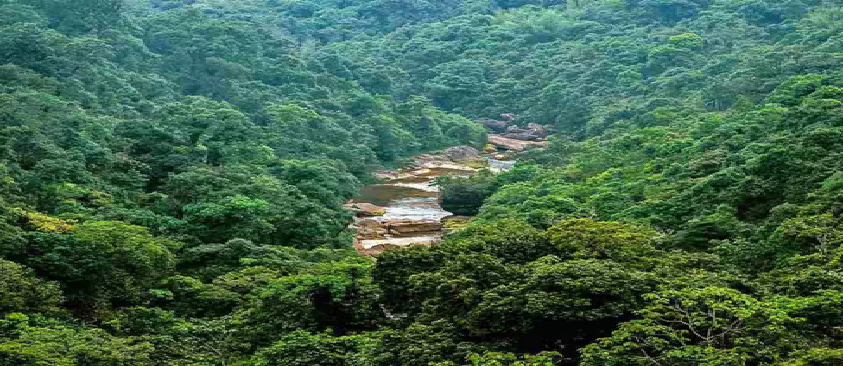
Why in News?
- Geographical Indications Registry in Chennai has received applications seeking GI tag for Two Famous products from Tamil Nadu — Kumbakonam Vetrilai and Thovalai Manikka Malai.
About the News:
- The application for Kumbakonam Vetrilai was filed by the Tamil Nadu Agricultural University, Coimbatore while the application for Thovalai Manikka Malai was given by the Thovalai Manikkamaalai Kaivinai Kalaingargal Nalasangam, Kanniyakumari.
About the Kumbakonam Betel Leaves:
- The Kumbakonam betel leaves were heart shaped and grown in the Cauvery delta region by small and marginal farmers. It is particularly grown in Ayyampettai, Rajagiri, Pandaravadai and Swamimalai in Thanjavur district.
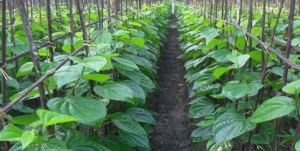
- On an average, about 60-80 lakh betel leaves were harvested annually from a one-hectare plot. A betel leaf cultivator spends ₹10,000 to ₹50,000 to grow these leaves on a one-acre land.
- Harvested leaves are washed, cleaned, and graded according to their size and quality. They were traditionally packed in bamboo baskets but now there are several options such as Plantain Leaves and Cloth Bags.
About the Thovalai Manikka Malai:
- Thovalai Manikka Malai is a special type of garland that is made only in Thovalai, a small village in Kanniyakumari. The flowers used in this particular garland are positioned in a way that when folded they look like a gem.
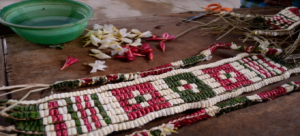
- The flowers are generally arranged in five rows, but at times for other decorations, 20 rows are used. The height ranges from one foot to 24 feet and above.
- Chamba fibre, nochi leaves, oleander and rose flowers are the key materials used for making this garland. Thovalai is famous for its abundance of flowers and most of flowers are procured locally.
What is GI Tag?
- A GI or Geographical Indication is a name or a sign given to certain products that relate to a specific geographical location or origins like a region, town or country.
- Using Geographical Indications may be regarded as a certification that the particular product is produced as per Traditional Methods, has certain specific qualities, or has a particular reputation because of its geographical origin.
- Geographical indications are typically used for wine and spirit drinks, foodstuffs, agricultural products, handicrafts, and industrial products.
- GI Tag ensures that none other than those registered as authorized users are allowed to use the popular product name. In order to function as a GI, a sign must identify a product as originating in a given place.
Who Accords and Regulates Geographical Indications?
- Geographical Indications are covered as a component of intellectual property rights (IPRs) under the Paris Convention for the Protection of Industrial Property.
- At the International level, GI is governed by the World Trade Organisation’s (WTO’s) Agreement on Trade-Related Aspects of Intellectual Property Rights (TRIPS).
- In India, Geographical Indications registration is administered by the Geographical Indications of Goods (Registration and Protection) Act, 1999 which came into force with effect from September 2003.
- The first product in India to be accorded with GI tag was Darjeeling tea in the year 2004-05.
What are the Benefits of GI Tags?
- The Geographical Indication registration confers the following benefits:
- Legal protection to the products
- Prevents unauthorised use of GI tag products by others
- It helps consumers to get quality products of desired traits and is assured of Authenticity.
- Promotes the economic prosperity of producers of GI tag goods by enhancing their demand in national and International Markets.
What are the Significances of GI Tags?
- A geographical indication right facilitates those who have the right to use the indication to prohibit its usage by a third party whose product does not conform to the applicable standards.
- For example, in the purview in which the Darjeeling geographical indication is protected, Producers of Darjeeling tea can omit the term “Darjeeling” for tea not grown in their tea Gardens or not produced according to the norms set out in the code of practice for the Geographical Indication.
- However, a protected GI does not permit the holder to forbid someone from making a product using the same approaches as those set out in the standards for that indication. Protection for a GI tag is usually procured by acquiring a right over the sign that constitutes the Indication.
Challenges in GI Tags:
- The special treatment to wines and spirits in TRIPS Agreement appears to be developed Country Centric.
- Developing countries, including India, seek the same higher level of protection for all GIs as was given under TRIPS for wines and spirits.
- The battle for GI tag between states.
- False use of geographical indications by unauthorized parties is detrimental to consumers and Legitimate Producers.
- Cheap Power loom saris are sold as reputed Banarsi handloom saris, harming both the producers and consumers.
- Such unfair business practices result in loss of revenue for the genuine right-holders of the GI and also misleads consumers.
- Protection of GI has, over the years, emerged as one of the most contentious IPR issues.
Way Forward:
- The benefits of GI tag are realised only when these products are effectively marketed and protected against illegal copying.
- Effective marketing and protection require quality assurance, brand creation, post-sale consumer feedback and support, prosecuting Unauthorised Copiers, etc.
- For internationally recognised products like Darjeeling tea, international protection is of Crucial Importance.
- Legal protection to GIs also extends to protection of traditional knowledge and traditional Cultural Expression contained in the products.
- Hence Intellectual Property is a power tool for economic development and wealth creation particularly in the Developing World.
- GIs have the potential to be our growth engine. Policy-makers must pay a heed to this and give Indian GI products their true Reward.
GI tag sought for Arunachal Pradesh Apatani textile product
31, Dec 2021

Why in News?
- An application seeking Geographical Indication (GI) tag for the Arunachal Pradesh Apatani textile product has been filed by a firm, Zeet Zeero Producer Company Ltd.
About the Apatani Weave:
- The Apatani weave comes from the Apatani tribe living at Ziro, the headquarters of Lower Subansiri district.
- The woven fabric of this tribe is known for its geometric and zigzag patterns and for its Angular Designs.
- The tribe predominantly weaves shawls known as jig-jiro, and jilan or jackets called supuntarii.
- The people use leaves and plant resources for organic dyeing of the cotton yarns in their traditional ways. And only women folk are engaged in weaving.
What is GI Tag?
- A GI or Geographical Indication is a name or a sign given to certain products that relate to a specific geographical location or origins like a region, town or country.
- Using Geographical Indications may be regarded as a certification that the particular product is produced as per traditional methods, has certain specific qualities, or has a particular reputation because of its Geographical Origin.
- Geographical indications are typically used for wine and spirit drinks, foodstuffs, agricultural Products, Handicrafts, and Industrial Products.
- GI Tag ensures that none other than those registered as authorized users are allowed to use the popular product name. In order to function as a GI, a sign must identify a product as originating in a given Place.
Who Accords and regulates Geographical Indications?
- Geographical Indications are covered as a component of intellectual property rights (IPRs) under the Paris Convention for the Protection of Industrial Property.
- At the International level, GI is governed by the World Trade Organisation’s (WTO’s) Agreement on Trade-Related Aspects of Intellectual Property Rights (TRIPS).
- In India, Geographical Indications registration is administered by the Geographical Indications of Goods (Registration and Protection) Act, 1999 which came into force with effect from September 2003.
- The first product in India to be accorded with GI tag was Darjeeling tea in the year 2004-05.
What are the Benefits of GI Tags?
- The Geographical Indication registration confers the following benefits:
- Legal protection to the products
- Prevents unauthorised use of GI tag products by others
- It helps consumers to get quality products of desired traits and is assured of authenticity.
- Promotes the economic prosperity of producers of GI tag goods by enhancing their demand in national and international markets.
What are the Significances of GI Tags?
- A geographical indication right facilitates those who have the right to use the indication to prohibit its usage by a third party whose product does not conform to the applicable standards.
- For example, in the purview in which the Darjeeling geographical indication is protected, producers of Darjeeling tea can omit the term “Darjeeling” for tea not grown in their tea Gardens or not produced according to the norms set out in the code of practice for the Geographical Indication.
- However, a protected GI does not permit the holder to forbid someone from making a product using the same approaches as those set out in the standards for that indication. Protection for a GI tag is usually procured by acquiring a right over the sign that Constitutes the indication.
Challenges in GI Tags:
- The special treatment to wines and spirits in TRIPS Agreement appears to be developed country centric.
- Developing countries, including India, seek the same higher level of protection for all GIs as was given under TRIPS for wines and spirits.
- The battle for GI tag between states.
- False use of geographical indications by unauthorized parties is detrimental to consumers and legitimate producers.
- Cheap Power loom saris are sold as reputed Banarsi handloom saris, harming both the producers and consumers.
- Such unfair business practices result in loss of revenue for the genuine right-holders of the GI and also misleads consumers.
- Protection of GI has, over the years, emerged as one of the most contentious IPR issues.
Way Forward:
- The benefits of GI tag are realised only when these products are effectively marketed and protected against illegal copying.
- Effective marketing and protection require quality assurance, brand creation, post-sale consumer feedback and support, prosecuting unauthorised copiers, etc.
- For internationally recognised products like Darjeeling tea, international protection is of crucial importance.
- Legal protection to GIs also extends to protection of traditional knowledge and traditional cultural expression contained in the products.
- Hence Intellectual Property is a power tool for economic development and wealth creation particularly in the developing world.
- GIs have the potential to be our growth engine. Policy-makers must pay a heed to this and give Indian GI products their true reward.
Cabinet Nod to Extend Irrigation Scheme for Another Five Years
28, Dec 2021
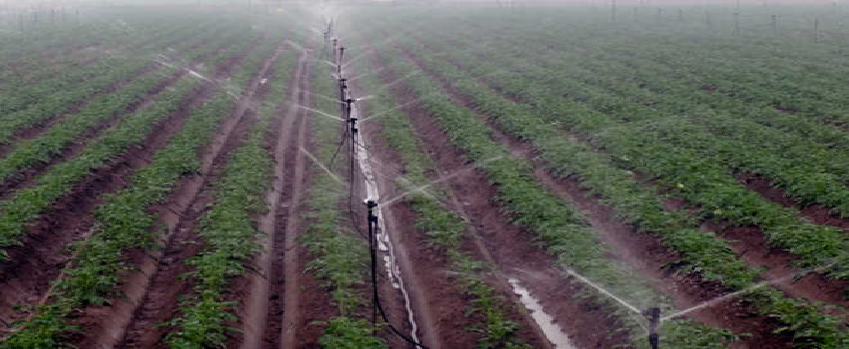
Why in News?
The Cabinet has recently given its approval to extend its umbrella scheme for irrigation, water supply, ground water and watershed development projects for another five years.
About the News:
- According to Jal Shakti Ministry, less than half of identified irrigation projects have been completed since the scheme began in 2015.
- The extension of the Pradhan Mantri Krishi Sinchayee Yojana till 2026 will cost ₹93,068 crore, benefit 22 lakh farmers and fund dams critical for water supply to Delhi and five other States in the upper Yamuna basin.
- In 2015-16, 99 projects were identified which were completed more than 50% but had been pending for years. Of the 99 projects, 46 have been completed. The rest of the projects will be completed by 2024-25.
- Har Khet Ko Pani, another component of the PMKSY, focuses on expanding physical access on farms and increasing the cultivable area under assured irrigation through surface water projects and by restoring water bodies. This is targeted to bring another 4.5 lakh hectares under irrigation by 2026.
- The Cabinet has now expanded inclusion criteria for water body rejuvenation projects, including both urban and rural water bodies, and enhancing Central assistance from 25% to 60%.
About Pradhan Mantri Krishi Sinchayee Yojana (PMKSY):
- Launched in 2015, PMKSY is a centrally sponsored scheme to provide assured irrigation to cultivated areas, reduce wastage of water and improve water-use efficiency.
- It not only focuses on creating sources for assured irrigation but also aims to create protective irrigation by harnessing rainwater at the micro-level through “Jal Sanchay’’ and “Jal Sinchan”.
- The scheme has been formulated by amalgamating other existing schemes like Accelerated Irrigation Benefit Programme (AIBP), Integrated Watershed Management Programme (IWMP), and On Farm Water Management (OFWM).
- Ministries of Agriculture, Water Resources, and Rural Development are the implementing agencies of the scheme.
- PMKSY is being implemented in an area development approach, adopting decentralized state-level planning and projectized execution, allowing the states to draw their irrigation development plans based on district/block plans with a horizon of 5 to 7 years. States can take up projects based on the District/State Irrigation Plan.
- All the States and Union Territories including the North-Eastern States are covered under the program
- The motto of the Scheme is ‘Har Khet Ko Pani’.
- The funding pattern of the Scheme is 60:40 center-state share in the case of States, for the Himalayan and North-Eastern states, the center-state cost-share is 90:10, and for the Union Territories, 100% of the cost is borne by the Central Government.
Focus areas of the Scheme:
- PMKSY will strategize by focussing on end-to-end solutions in the irrigation supply chain, viz. water sources, distribution network, efficient farm level applications, extension services on new technologies & information, etc. The major focus areas include,
- Creation of new water sources; repair, restoration, and renovation of defunct water sources; construction of water harvesting structures, secondary & micro storage, groundwater development, enhancing potentials of traditional water bodies at the village level.Developing/augmenting distribution network where irrigation sources (both assured and protective) are available or Created.
- Promotion of scientific moisture conservation and runoff control measures to improve Groundwater Recharge.
- Promoting efficient water conveyance and field application devices within the farm viz, underground piping system, drip & sprinklers, pivots, rain-guns, and other application devices, etc.
- Encouraging community irrigation through registered user groups/farmer producers’ organizations/NGOs.
- Farmer-oriented activities like capacity building, training and exposure visits, demonstrations, farm schools, skill development in efficient water and crop management practices (crop alignment) including large scale awareness through mass media campaigns, exhibitions, field days, and extension activities through short animation films, etc.
- More focus on irrigation development will be given to deficient states in terms of irrigation coverage.
Components of the Scheme:
- Accelerated Irrigation Benefit Programme (AIBP) focuses on faster completion of ongoing major and medium irrigation projects including national Projects.
- PMKSY (Har Khet ko Pani) focuses on the creation of new water sources through minor Irrigation (both surface and groundwater), repair, restoration, and renovation of water bodies; strengthening carrying capacity of traditional water sources, construction of rainwater harvesting structures; command area development, strengthening and creation of distribution network from source to farm, groundwater development in water-abundant areas, improvement in the water management and distribution system, diversion of water from water-abundant to water-deficient areas and creation and rejuvenation of traditional water storage systems.
- PMKSY (Per Drop More Crop) focuses on maximizing water use efficiency at the farm level through program management, promotion of efficient water conveyance, precision water application devices, and water-lifting devices. Construction of micro-irrigation structures, secondary storage structures, conducting extension activities for the promotion of scientific moisture conservation and agroeconomic measures, capacity building, training, and awareness campaign, and information technology interventions are other measures to promote water use efficiency.
- PMKSY (Watershed Development) focuses on effective management of runoff water and improved soil & moisture conservation activities, construction of water harvesting structures, and convergence with MGNREGS for the creation of a water-source to full potential in identified backward rainfed blocks including renovation of traditional water bodies.
Implementation Framework
- PMKSY follows a “decentralized” three-tiered institutional structure with High-Level Empowered Committee (HLEC) at the Central level, State Level Sanctioning Committee (SLSC) at the State level, and District Level Implementation Committee (DLIC) at the district level besides dynamic involvement of other stakeholders.
- At the national level, National Steering Committee (NSC) and National Executive Committee (NEC) are the key committees that oversee the implementation of programs, allocate resources, undertake monitoring and performance assessment, etc.
- At the State level, the State Department of Agriculture is the nodal department for implementation of the program.
- At the district level, the District Level Implementation Committee (DLIC) oversees the implementation of PMKSY.
ECONOMIC STIMULUS PACKAGE – III
16, May 2020
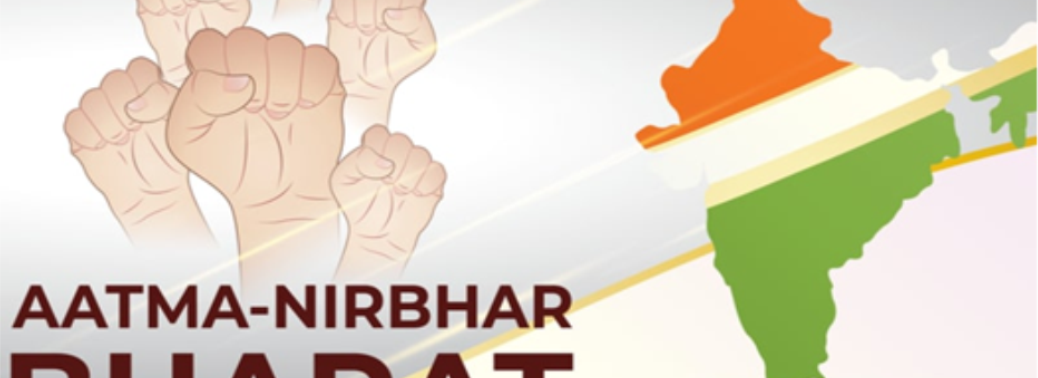
Why in News?
- In the third tranche of the COVID-19 economic package, the government announced a slew of measures for agriculture sector, including a ₹63 lakh crore outlay.
About the News:
- It also amended the stringent Essential Commodities Act to remove cereals, edible oil, oilseeds, pulses, onions and potato from its purview.
- The package would focus on infrastructure and building capacities in the agriculture and allied activities.
- The interest subvention will unlock ₹5,000 crore additional liquidity, benefitting 2 crore farmers.
- This also included ₹7 lakh crore package comprising free food grain and cash to poor for three months announced in March, and ₹5.6 lakh crore stimulus provided through various monetary policy measures by the Reserve Bank of India (RBI).
- Of the remaining, the government has made two tranches of announcements with a cumulative package of ₹1 lakh crore, comprising largely of credit lines to smaller firms, concessional credit to farmers and support to shadow banking and electricity distributors.

Regulating Essential Commodities:
- The government will amend the six-and-a-half-decade old Essential Commodities Act to deregulate food items, including cereals, edible oil, oilseeds, pulses, onion and potato.
- The amendment, besides deregulating production and sale of food products, will provide for no stock limit to be imposed on any produce.
- A stock limit will be imposed only under very exceptional circumstances like national calamities, famine with a surge in prices.
- Also, no stock limit shall apply to processors or value chain participants.
Other Important Announcements:
- ₹15,000 crore Animal Husbandry Infrastructure Development Fund will be set up to support investment in dairy processing, value addition and cattle feed infrastructure.
- To ensure 100 per cent vaccination of all livestock against foot and mouth disease (FMD) ₹13,343 crore will be provided, she said.
- As much as ₹10,000 crore will be provided for fishermen through Pradhan Mantri Matsya Sampada Yojana (PMMSY).
- For promoting herbal cultivation, ₹4,000 crore National Medicinal Plants Fund will be started to help 10 lakh hectares to be covered under herbal cultivation.
- Also, Operation Greens will be extended from tomato, onion and potato to all fruit and vegetables by providing 50 per cent subsidy on transportation and storage of these commodities.
- For beekeepers, a ₹500-crore scheme was announced for infrastructure development and post-harvest facilities.

DIRECT SEEDING OF RICE (DSR)
14, May 2020
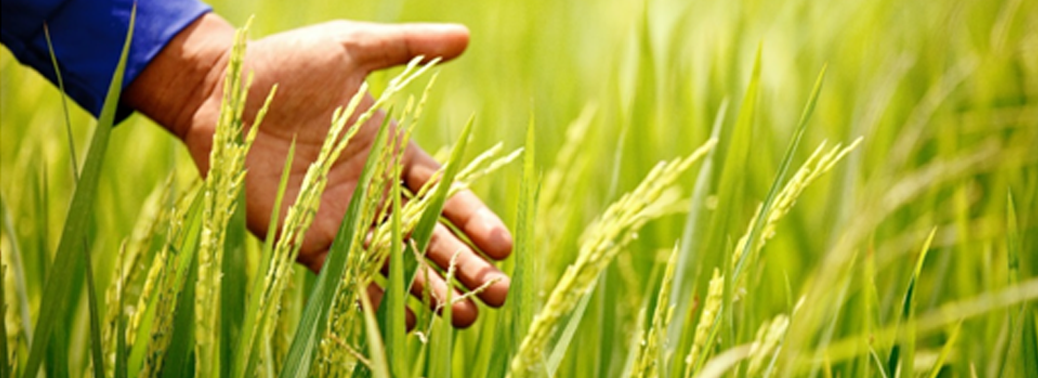
Why in News?
- Recently, the farmers are now being encouraged to adopt Direct Seeding of Rice (DSR) in place of Conventional Transplanting due to the Shortage of Labourers.
About Conventional Transplanting:
- The farmers prepare nurseries where the paddy seeds are first sown and raised into young Plants.
- These seedlings are then uprooted and replanted 25-35 days later in the main field.
- It is transplanted on fields that are “puddled” or tilled in standing water using tractor-drawn disc harrows.
Direct Seeding of Rice (DSR):
- There is no nursery preparation or transplantation. The seeds are instead directly drilled into the field by a tractor-powered machine.
- Conventionally the water act as a herbicide for paddy but in DSR, water is replaced by real chemical herbicides. Farmers have to only level their land and give one pre-sowing irrigation or rauni.
- Once the field has good soil moisture, they need to do two rounds of ploughing and planking (smoothening of soil surface), which is followed by the sowing of the seeds and spraying of herbicides.
Advantages of DSR:
- The most important one is water savings. The first irrigation (apart from the pre-sowing rauni) under DSR is necessary only 21 days after sowing.
- It is unlike in transplanted paddy, where watering has to be done practically daily to ensure submerged/flooded conditions in the first three weeks.
- It saves more number of working labours, which about three labourers are required to transplant one acre of paddy at almost Rs 2,400 Per Acre.
- Here, the cost of herbicides under DSR will not exceed Rs 2,000 per acre.
Disadvantages of DSR:
- The main issue is the Availability of Herbicides.
- The seed requirement for DSR is also higher, at 8-10 kg/acre, compared to 4-5 kg in Transplanting.
- The laser land levelling, which costs Rs 1,000/acre, is compulsory in DSR. This is not so in Transplanting.
- Here, the yields are as good as from normal transplanting, but one need to sow by the first fortnight of June. The plants have to come out properly before the Monsoon Rains Arrive.
- In Transplanting there is no such problem, where the saplings have already been raised in the Nursery.
GUJARAT AMENDS APMC ACT
14, May 2020

Why in News?
- Following the Centre’s directive to States to amend their Agricultural Produce Markets (APMC) Acts, the Gujarat government has promulgated an Ordinance expanding the purview of the Act to include livestock under agricultural produce and to provide better market access to farmers.
What is APMC?
- It is a statutory market committee constituted by a State Government in respect of trade in certain notified agricultural or horticultural or livestock products, under the Agricultural Produce Market Committee Act issued by that state government.
- The Ministry of Agriculture formulated a model law on agricultural marketing, State Agricultural Produce Marketing (Development and Regulation) Act, 2003 and requested the state governments to suitably amend their respective APMC Acts.
- Union Budgets of 2014-15 and 2015-16 had suggested the creation of a National Agricultural Market (NAM) following which e-NAM was launched on April 2016 as a pan-India electronic trade portal to link APMCs across the States.
What are its objectives?
- Ensure transparency in pricing systems and transactions taking place in the market area.
- Provide market-led extension services to farmers.
- Ensure payment for agricultural produce sold by farmers on the same day.
- Promote agricultural processing including activities for value addition in agricultural produce.
- Setup and promote public private partnership in the management of agricultural markets, etc.
Changes Made and Their Implications:
- As per the amendment, the new Act is termed Gujarat Agricultural Produce and Livestock Marketing (Promotion and Facilitation) Act, 1963.
- The Act paves the way for establishment of a livestock market.
- Also, it seeks to have involvement of local authorities, including Panchayati raj institutions that own and operate rural periodical markets such as haats within their area.
- Changed Structure of the market committee of a market yard. It is deemed to be of national importance with increased membership from farmers.
- A single licence will be applicable to the whole of the State for the traders to be granted or renewed by the Director. The existing trader licences granted by the market committees shall be converted into State wide single trader licence by the Director.
- Now, even private entities can set up their own market committees or sub-market yards that can compete and offer the best possible remuneration to farmers for their produce.
- The ordinance also restricts the jurisdiction of the market committees to the physical boundaries of their respective marketing yards. They can levy cess only on those transactions, happening within the boundary walls of their marketing yard.
Significance of these Changes:
- The changes help develop these markets to efficiently function as marketing platform nearest to the farm gate.
- They also ensure that the spirit of competition is encouraged and the principle of ‘farmer first’ is kept in mind.
- Also, the act removes the conventional involvement of middlemen by allowing farmers to sell their crops in a free market. This is a progressive step towards a more robust farm economy.
Concerns from APMC:
- APMCs have not welcomed the decision because it ends their monopoly and allows private players to enter.
- The ordinance will also affect revenues because no cess will be collected on transactions outside the physical boundaries of marketing yards.
- For example, last year, of the ₹5 crore earned as market fees, ₹1.5 crore came from transactions that were conducted outside the marketing yard. With the new ordinance in place, this revenue will be lost.
KASHMIR SAFFRON GETS GI TAG
02, May 2020
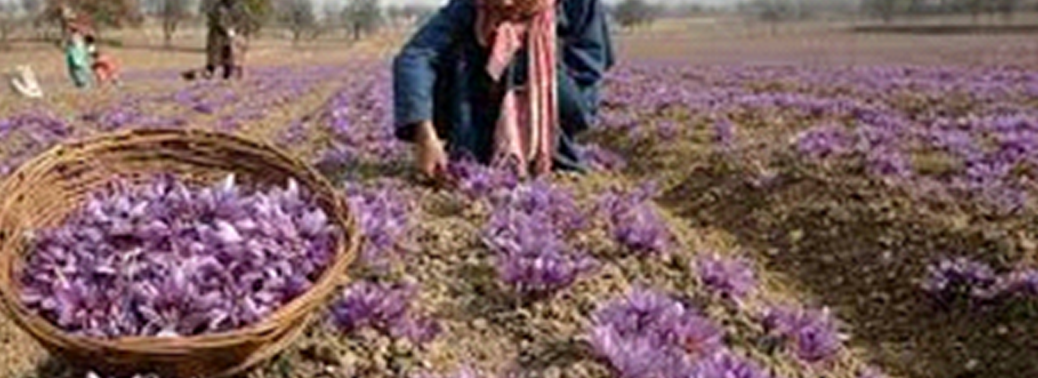
Why in News?
- Kashmir saffron, which is cultivated and harvested in the Karewa (highlands) of Jammu and Kashmir, has been given the Geographical Indication (GI) tag by the Geographical Indications Registry.

About Kashmir Saffron:
- Kashmir saffron is a very precious and costly product renowned globally as a spice.
- It rejuvenates health and is used in cosmetics and for medicinal purposes. It has been associated with traditional Kashmiri cuisine and represents the rich cultural heritage of the region.
- The unique characteristics of Kashmir saffron are its longer and thicker stigmas, natural deep-red colour, high aroma, bitter flavour, chemical-free processing, and high quantity of crocin (colouring strength), safranal (flavour) and picrocrocin (bitterness).
- Iran is the largest producer of saffron and India is a close competitor. With the GI tag, Kashmir saffron would gain more prominence in the export market.
- It is the only saffron in the world grown at an altitude of 1,600 m to 1,800 m AMSL (above mean sea level), which adds to its uniqueness and differentiates it from other saffron varieties available the world over.
What is GI Tag?
- A GI or Geographical Indication is a name or a sign given to certain products that relate to a specific geographical location or origins like a region, town or country.
- Using Geographical Indications may be regarded as a certification that the particular product is produced as per traditional methods, has certain specific qualities, or has a particular reputation because of its geographical origin.
- Geographical indications are typically used for wine and spirit drinks, foodstuffs, agricultural products, handicrafts, and industrial products.
- GI Tag ensures that none other than those registered as authorized users are allowed to use the popular product name. In order to function as a GI, a sign must identify a product as originating in a given place.
Who accords and regulates Geographical Indications?
- Geographical Indications are covered as a component of intellectual property rights (IPRs) under the Paris Convention for the Protection of Industrial Property.
- At the International level, GI is governed by the World Trade Organisation’s (WTO’s) Agreement on Trade-Related Aspects of Intellectual Property Rights (TRIPS).
- In India, Geographical Indications registration is administered by the Geographical Indications of Goods (Registration and Protection) Act, 1999 which came into force with effect from September 2003.
- The first product in India to be accorded with GI tag was Darjeeling tea in the year 2004-05.
What are the Benefits of GI Tags?
- The Geographical Indication registration confers the following benefits:
- Legal protection to the products
- Prevents un-authorised use of GI tag products by others
- It helps Consumers to get quality products of desired traits and is assured of authenticity.
- Promotes the economic prosperity of producers of GI tag goods by enhancing their demand in national and international markets.
What are the Significances of GI Tags?
- A geographical indication right facilitates those who have the right to use the indication to prohibit its usage by a third party whose product does not conform to the applicable standards.
- For example, in the purview in which the Darjeeling geographical indication is protected, producers of Darjeeling tea can omit the term “Darjeeling” for tea not grown in their tea gardens or not produced according to the norms set out in the code of practice for the geographical indication.
- However, a protected GI does not permit the holder to forbid someone from making a product using the same approaches as those set out in the standards for that indication. Protection for a GI tag is usually procured by acquiring a right over the sign that constitutes the Indication.
Challenges in GI Tags:
- The special treatment to wines and spirits in TRIPS Agreement appears to be developed country centric.
- Developing countries, including India, seek the same higher level of protection for all GIs as was given under TRIPS for wines and spirits.
- The battle for GI tag between states.
- False use of geographical indications by unauthorized parties is detrimental to consumers and legitimate producers.
- Cheap Power loom saris are sold as reputed Banarsi handloom saris, harming both the producers and consumers.
- Such unfair business practices result in loss of revenue for the genuine right-holders of the GI and also misleads consumers.
- Protection of GI has, over the years, emerged as one of the most contentious IPR issues.
Way Forward:
- The benefits of GI tag are realised only when these products are effectively marketed and protected against illegal copying.
- Effective marketing and protection require quality assurance, brand creation, post-sale consumer feedback and support, prosecuting unauthorised copiers, etc.
- For internationally Recognised products like Darjeeling tea, International Protection is of crucial importance.
- Legal protection to GIs also extends to protection of Traditional Knowledge and Traditional cultural expression contained in the products.
- Hence Intellectual Property is a Power Tool for economic development and wealth creation particularly in the Developing World.
- GIs have the potential to be our growth engine. Policy-makers must pay a heed to this and give Indian GI Products their True Reward.
COMMODITY MARKETS OUTLOOK
25, Apr 2020

Why in News:
- Recently, the World Bank’s has released Commodity Markets Outlook.
About Commodity Markets Outlook
- It provides market analysis for major commodity groups – energy, metals, agriculture, precious metals, and fertilizers.
- The Report Forecasts Prices for 46 Key Commodities, Including Oil.
Highlights
- Energy and metals commodities:They are the most affected by the sudden stop to economic activity and the serious global slowdown that is anticipated. Commodities associated with transportation, including oil, have experienced the steepest declines.
- Agricultural prices: They are likely to stay broadly stable in 2020 because of relatively stable demand and all-time high levels of staple production and stock. However, supply chain disruptions and government steps to restrict exports or stockpile commodities raise concerns that food security may be at risk in places.
- Gold prices:They were up 6.9% in the last quarter (January- March,2020) – its sixth consecutive quarterly rise. The strong investor demand propped gold up despite weak jewelry demand in India and China.
- Oil Prices:These are expected to average at $35 per barrel in 2020. The decline in crude oil prices has been exacerbated by uncertainty around production agreements among the Organization of the Petroleum Exporting Countries (OPEC) and other oil producers.
- Importers and Exporters:They are likely to see some long-term shifts in their markets due to the pandemic. These include Increasing transport costs due to enhanced border checks and thus impact on supply chains and substituting for imports with domestic goods.
- The Changing consumer behaviour, such as, people may choose to work remotely, travel less, and this could impact permanent drops in demand for oil, favourably impacting the accounts for oil importers.
- This leads to reduction in emissions of the harmful gases caused by the restrictions may also increase public pressure for greener transport and lowered fossil fuel use.
World Bank:
- The Bretton Woods Conference held in 1944, created the International Bank for Reconstruction and Development (IBRD) along with the International Monetary Fund (IMF).
- The IBRD later became the World Bank.
- The World Bank Group is a unique global partnership of five institutions working for sustainable solutions that reduce poverty and build shared prosperity in developing countries.
- It has 189 Member Countries.
Few Important Reports Released by the World Bank are:
- Ease of Doing Business
- Human Capital Index and
- World Development Report
The Development Institutions of the World Bank are:
- International Bank for Reconstruction and Development (IBRD)
- International Development Association (IDA)
- International Finance Corporation (IFC)
- Multilateral Guarantee Agency (MIGA)
- International Centre for the Settlement of Investment Disputes (ICSID)
MASKS, SANITISERS NOW ESSENTIAL COMMODITIES
14, Mar 2020
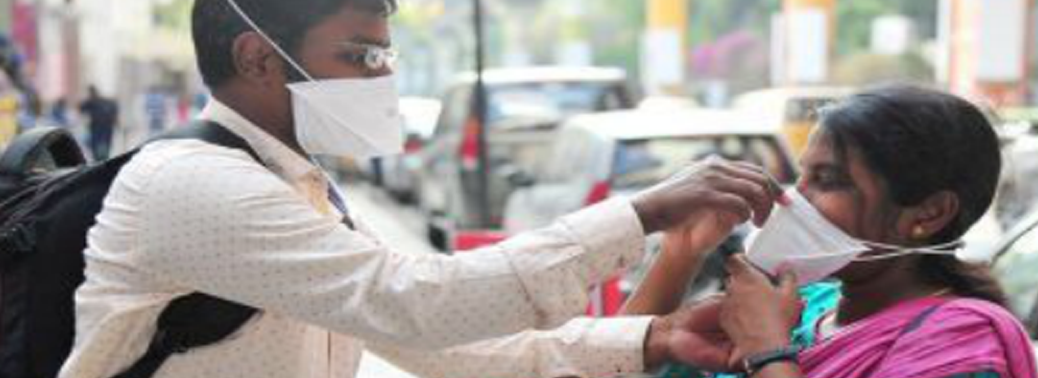
Why in News?
- The Centre recently brought masks and hand sanitisers under the Essential Commodities Act, 1955 (EC Act) in the wake of COVID-19 outbreak.
About the Essential Commodities Act:
- The Essential Commodities Act, 1955was enacted to ensure the easy availability of essential commodities to consumers and to protect them from exploitation by unscrupulous traders.
- The Act provides for the regulation and control of production, distribution and pricing of commodities which are declared as essential.
- Essential items under the Act include drugs, fertilisers, pulses and edible oils, and petroleum and petroleum products.
- The Act aim at maintaining/increasing supplies/securing equitable distribution and availability of these commodities at fair prices.
- Centre invokes the ECA Act’s provisions to impose stock limits in case of price/quantity distortions in the market to ensure adequate availability of essential commodities at reasonable prices.
- States are the implementing agenciesto implement the EC Act, 1955 and the Prevention of Black marketing & Maintenance of Supplies of Essential Commodities Act, 1980, by exercising powers delegated to them.
- The list of essential commodities is reviewed from time to timewith reference to their production and supply and in consultation with concerned Ministries/Departments.
- Currently, the restrictions like licensing requirement, stock limits and movement restrictions have been removed from almost all agricultural commodities.
- Exemptions:Wheat, pulses and edible oils, edible oilseeds and rice are certain exceptions.
- The recent amendment to the Legal Metrology (Packaged Commodities) Rules 2011 is linked to the ECA. The Government can fix the retail price of any packaged commodity that falls under the ECA.
What Masks and Sanitisers under ESA?
- Taking note of the fact that masks (2ply and 3ply surgical masks and N95 masks) and hand sanitisers are not easily available and vendors are charging exorbitant prices for them, the government declared these items as essential commodities till June 30 under the EC Act.
What are its Impact?
- Under this Act, the States and Union Territories can ask manufacturers to enhance their production capacity so that these products are widely available to consumers.
- Under the Act, an offender may be punished with an imprisonment up to seven years.
- The Consumer Affairs Ministry has also invoked the Prevention of Black marketing and Maintenance of Supplies of Essential Commodities Act, 1980 which would carry out action against those involved in overpricing and black marketing of the products.
Arguments against ECA:
- An archaic law:Essential Commodities Act has been in existence since 1955, when the economy was very different from what it is today. It was an economy ravaged by famine and food shortages.
- Difference between storage and hoarding:Recently there is evidence of interventions not working. It is because there is a distinction between storage and hoarding.
- As compared to older times, when the economy experiences acute shortages, today many shortage cases are actually that of hoarding.
- Stock limits led to onion price volatility:To control soaring prices of onions over the last few months, centre through ECA imposed stock limits on onions. Instead of decreasing prices, this actually increased price volatility.
- Although the restrictions on both retail and wholesale traders were meant to prevent hoarding and enhance supply in the market, the Survey showed that there was actually an increase in price volatility and a widening wedge between wholesale and retail prices.
- Lower stock limit led traders and wholesalers to immediately offload most of the kharif crop which led to a sharp increase in the volatility.
- Disincentivises storage infrastructure development:With too-frequent stock limits, traders may have no reason to invest in better storage infrastructure in the long run.
- Also, food processing industries need to maintain large stocks to run their operations smoothly. Stock limits curtail their operations. In such a situation, large scale private investments are unlikely to flow into food processing and cold storage facilities.
- Higher prices of medicines:Drug Price Control Order issued under the ECA also distorted the market and actually made medicines less affordable.
- The increase in prices is greater for more expensive formulations than for cheaper ones and for those sold in hospitals rather than retail shops.
- Rent seeking and Low conviction rates:Despite many raids conducted under the ECA in 2019, the conviction rate was abysmally low. The ECA only seems to enable rent-seeking and harassment.
Way Forward:
- Adequate supply:Given that almost all crops are seasonal, ensuring round-the-clock supply requires adequate build-up of stocks during the season.
- Without the ECA the common man would be at the mercy of opportunistic traders and shopkeepers.
- Genuine shortages:There can be genuine shortages triggered by weather-related disruptions in which case prices will move up.
- So, if prices are always monitored, farmers may have no incentive to farm.
- Difficult to differentiate between hording and shortage:It may not always be possible to differentiate between genuine stock build-up and speculative hoarding.
MICRO-IRRIGATION HIT BY LACK OF FUNDS
11, Mar 2020

Why in News?
- The prevailing economic slowdown appears to have affected the implementation of the projects to provide drip and sprinkler implements to farmers in state of Telangana.
Highlights:
- For providing the drip and sprinkler implements to the targeted extent of land, an amount of Rs 669 crore is required, including RS 270 crore contribution of the Centre and about Rs 400 crore share of the State.
Micro-irrigation:
- Drip irrigation is a type of micro-irrigation system that has the potential to save water and nutrients by allowing water to drip slowly to the roots of plants, either from above the soil surface or buried below the surface.
- The goal is to place water directly into the root zone and minimize evaporation. Drip irrigation systems distribute water through a network of valves, pipes, tubing, and emitters.
- Depending on how well designed, installed, maintained, and operated it is, a drip irrigation system can be more efficient than other types of irrigation systems, such as surface irrigation or sprinkler irrigation.
Advantages:
- Fertilizer and nutrient loss is minimized due to a localized application and reduced leaching.
- Water application efficiency is high if managed correctly. Field leveling is not necessary.
- Fields with irregular shapes are easily accommodated. Recycled non-potable water can be safely used.
- Moisture within the root zone can be maintained at field capacity. Soil erosion is lessened.
- Weed growth is lessened. Water distribution is highly uniform, controlled by the output of each nozzle.
- Labour cost is less than other irrigation methods.
Disadvantages:
- Initial cost can be more than overhead systems.
- The sun can affect the tubes used for drip irrigation, shortening their lifespan.
- If the water is not properly filtered and the equipment not properly maintained, it can result in clogging or bio clogging.
- Drip tape causes extra clean-up costs after harvest. Users need to plan for drip tape winding, disposal, recycling or reuse.
- In lighter soils subsurface drip may be unable to wet the soil surface for germination. Requires careful consideration of the installation depth.
- The PVC pipes often suffer from rodent damage, requiring replacement of the entire tube and increasing expenses.
MADRAS HC DISMISSES M. P’S PLEA ON GI TAG FOR BASMATI RICE
10, Mar 2020
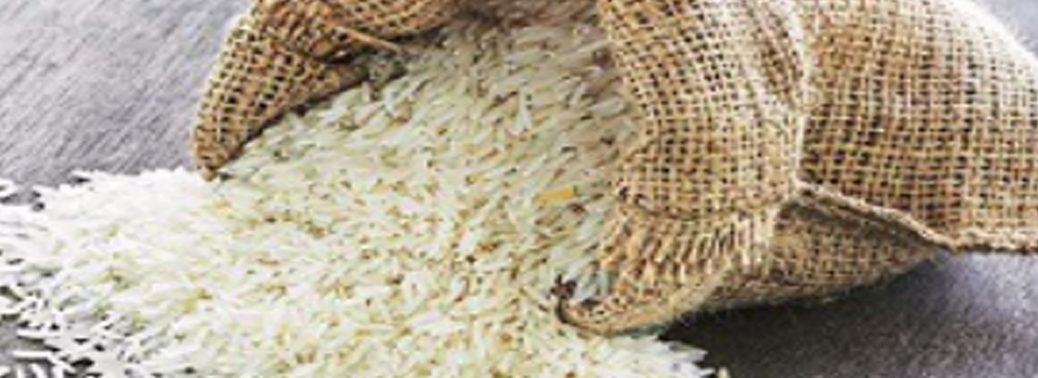
Why in News?
- The Madras High Court has set aside the State of Madhya Pradesh and the Madhya Shetra Basmati Growers Association plea to restrict the production of Basmati rice to certain regions in the Indo-Gangetic plain.
About Basmati Rice:
- It is one of the best known varieties of rice all across the globe.
- It is a long grain rice which has its origin from India and some parts of Pakistan.
- It has a unique position in the rice world due to its price, fragrance, grain morphology as well as quality.
- Basmati rice has a unique fragrance and flavour caused due to the presence of a chemical called 2-acetyl-1-pyrroline.
- This chemical is found in basmati rice at about 90 parts per million (ppm) which is 12 times more than non-basmati rice varieties.
- Basmati rice needs specific climatic conditions to grow which is why it is cultivated in selected regions of India.
- It is cultivated in the states of Himachal Pradesh, Punjab, Haryana, Delhi, Uttarakhand, Madhya Pradesh, Jammu and Kashmir and western Uttar Pradesh (Indo Gangetic Plains).
Production of Basmati Rice in India:
- India is the largest producer of Basmati rice with about 70 per cent share in global production.
- Basmati rice constitutes one of India’s significant exports both in terms of soft power and hard money.
- India is leading exporter of Basmati rice in the global market.
- During 2016-17, India exported 40, 00,471.56 MT of Basmati Rice.
- Major Export Destinations in 2016-17 included Saudi Arabia, Iran, United Arab Emirates, Iraq and Kuwait.
- According to a report, the Indian Basmati rice industry is on the verge of clocking its highest ever export of around 30,000 crore rupees in the financial year 2019.
- India has always been involved in protecting the name Basmati as a geographic indicator. In other words, Basmati is a term that should be restricted to the product from its geographic location.
About the Issue:
- Agricultural and Processed Food Products Export Development Authority (APEDA) had initiated steps to protect and get GI recognition for Basmati cultivated in the IGP.
- It had applied for registration of GI basmati rice in its favour in May 2010.
- APEDA was established by the Government of India under the Agricultural and Processed Food Products Export Development Authority Act, passed by the Parliament in December, 1985.
- It is a statutory body under the Ministry of Commerce and Industry and is the apex organization engaged in work related to the development of export of agricultural products and processed food from India.
- It is responsible for putting in place a system for administration of GI and authentication of the product in India and abroad.
About Geographical Indication (GI):
- Geographical Indication is an insignia on products having a unique geographical origin and evolution over centuries with regards to its special quality or reputation attributes.
- It is a mark of authenticity and ensures that registered authorised users (or at least those residing inside the geographic territory) are allowed to use the popular product name.
- GI registration confers:(i) Legal protection to the products (ii) Prevents unauthorised use of a GI tags by others (iii) Helps consumers to get quality products of desired traits (iv) Promotes economic prosperity of producers of GI tag goods by enhancing their demand in national and international markets.
- Legal Authorities:At international level, GI is governed by World Trade Organisation’s (WTO’s) Agreement on Trade-Related Aspects of Intellectual Property Rights (TRIPS).
- In India, GI registration is governed by the Geographical Indications of goods (Registration and Protection) Act, 1999. Darjeeling tea was the first product in India accorded with GI tag.
- Presently, there are total 218 GI tag products from India. Some of them are Mysore Silk, Mysore Pak, Thanjavaur Veena, etc.
DAIRY SECTOR IN INDIA
29, Feb 2020
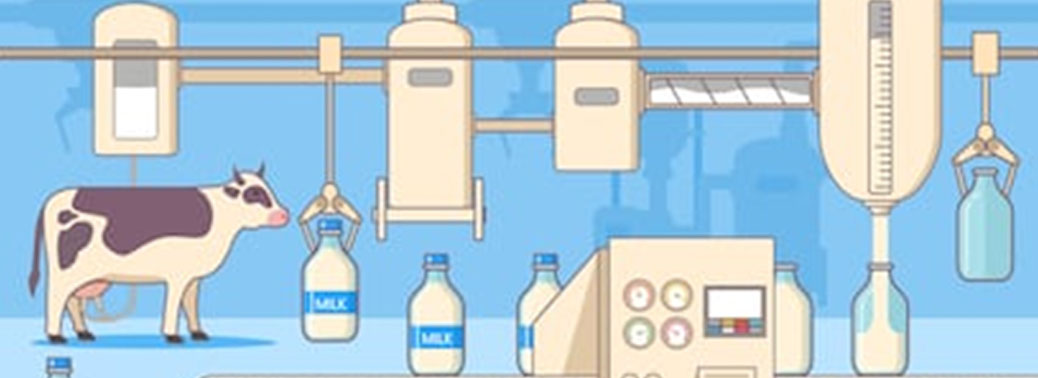
Context:
- The Cabinet Committee on Economic Affairs, has given its approval for upward revision of interest subvention to 2.5% per annum under the scheme Dairy Processing and Infrastructure Development Fund with the revised outlay of Rs 11,184 Cr.
Key Facts – Dairy Sector in Budget 2020-21:
- The government aims to “facilitate” doubling of India’s annual milk processing capacity from 53.5 million tonnes (mt) to 108 mt by 2025.
- Building a seamless national cold supply chain for perishables, inclusive of milk, meat and fish, by setting up of a “Kisan Rail” – through PPP arrangements.
- There shall be refrigerated coaches in Express and Freight trains as well.
- Eliminating Foot and Mouth disease, brucellosis in cattle and also peste des petits ruminants (PPR) in sheep and goats by 2025.
- Increasing the coverage of artificial insemination from the present 30% to 70%.
- NREGA would be dovetailed to develop fodder farms.
- The Budget Estimates for the Department of Animal Husbandry and Dairying stands at 3,289 in the Budget 2020-21.
- Recently, the Ministry of Science and Technology has launched the “Scientific Utilization through Research Augmentation-Prime Products from Indigenous Cows” (SUTRA-PIC India).
- It is one of the research programmes into indigenous cattle announced during the 2019-20 Union Budget, which aims to develop products as well as improve the genetic quality of indigenous cattle breeds.
Dairy Sector in India:
- Over the span of three decades, India has transformed from a country of acute milk shortage to the world’s leading milk producer, with estimated production of milk in 2018-19 at 187 million tonnes.
- Milk production in India has been growing at over 4% annually and its share in milk production in the world has also been increased.
- This phenomenal success is attributed to the programme ‘Operation Flood’ (1970–1996) and its intense focus on dairy development activities.
- Now, India is the leading producer and consumer of dairy products globally with sustained growth over the years.
- The dairy industry and milk hold equal importance to farmers and consumers.
Major Programmes:
- Department of Animal Husbandry And Dairying, Government of India has been supplementing the efforts of State Governments by implementing following dairy development schemes for creation/ strengthening of infrastructure for production of quality milk, procurement, processing and marketing of milk and milk products across the country:
- 1.National Programme for Dairy Development (NPDD)
- 2.Dairy Entrepreneurship Development Scheme (DEDS)
- 3.National Dairy Plan-I (NDP-I)
- 4.Dairy Processing and Infrastructure Development Fund (DIDF)
- 5.Supporting Dairy Cooperatives and Farmer Producer Organizations engaged in dairy activities (SDCFPO)
Challenges Faced by the Indian Dairy Sector:
- Milk is a source of liquidity for the farmers. It provides them with ready cash whereas crops fetch them cash only 2-3 times a year. The Indian dairy sector is different from other dairy producing countries as emphasis is placed on both cattle and buffalo milk.
- Indian dairy sector faces the following challenges:
- Productivity of Indian dairy animals is lower compared to other countries.
- Lack of scientific livestock feeding practice.
- Inadequacy and unavailability of livestock healthcare.
- Improper milk marketing facilities and uncertain price of milk for producers.
- Lack of infrastructure for milk collection, transportation, processing.
- Lack of veterinary and extension services.
- Milk losses due to lack of cold chain facilities.
- Lack of milk production standards and clean milk production practices.
Suggestions by NITI Aayog’s ‘Strategy for New India @ 75’
- Breed indigenous cattle with exotic breeds:
- Breeding of indigenous cattle with exotic breeds needs to be encouraged to arrest the issue of inbreeding.
- This will enable greater gene coverage, reduced diseases and greater resilience to climate change.
- Promote and develop Bull Mother Farms:
- Employing multiple ovulation and embryo transfer technologies, these farms can significantly enhance milk productivity through the supply of cattle with enhanced milk potential to farmers.
- Village Level Procurement Systems:
- Installing of bulk milk chillers and facilities for high value conversion of milk are needed to promote dairy in states.
- The private sector should be incentivized to create a value chain for HVCs and dairy products at the village level.
The Way Forward:
- Milk is highly perishable, therefore value addition such as processing, packaging, and conversion to long life products such as sterilized milks (UHT) is more a necessity than a luxury.
- India needs to achieve a balance between free trade and import restriction.
- Bring down the cost of production to the farmers and improve the quality and quantity of milk. This can help farmers stabilise their milk prices.
- Expand domestic demand for higher milk consumption through concerted campaigns, especially in the 115 aspirational districts where malnutrition is high.
- Indian dairy industry needs to be mechanised and modernised to achieve sustainability in the export competitive environment.
- Apart from that, the focus should also be on increasing the yields so that India can be a major player in milk and milk products’ exports.
- After the fulfilment of supplies, extra milk and milk powder can be subsidised and distributed to BPL farmers and families.
- Dairy is mainly a women-led industry so strengthening it would mean more opportunities for women and more avenues for their growth and development.
RESTRUCTURING CROP INSURANCE SCHEMES
21, Feb 2020
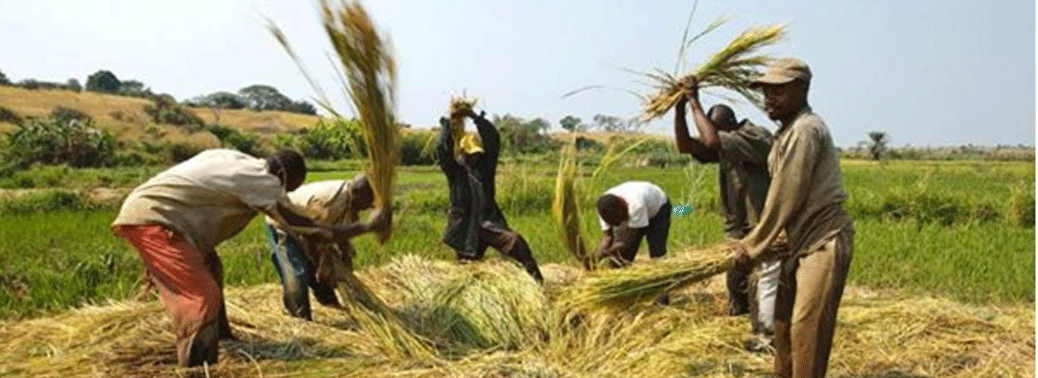
Why in News?
- Recently, the Union Cabinet has approved the revamp of the Pradhan Mantri Fasal Bima Yojana (PMFBY)and the Restructured Weather Based Crop Insurance Scheme (RWBCIS) which will be effective from 2020 Kharif season.
About Pradhan Mantri Fasal Bima Yojana (PMFBY):
- The Pradhan Mantri Fasal Bima Yojana was launched in 2016 and is being administered by the Ministry of Agriculture and Farmers Welfare.
- It provides a comprehensive insurance cover against the failure of the crop thus helping in stabilizing the income of the farmers.
- All food & oilseed crops and annual commercial/horticultural crops for which past yield data is available.
- The prescribed premium is 2% to be paid by farmers for all Kharif crops and 1.5% for all Rabi crops. In the case of annual commercial and horticultural crops, the premium is 5%.
- The scheme is implemented by empanelled general insurance companies. The selection of the Implementing Agency (IA) is done by the concerned State Government through bidding.
About Restructured Weather Based Crop Insurance Scheme:
- Restructured Weather Based Crop Insurance Scheme(RWBCIS) was launched in 2016 and is being administered by the Ministry of Agriculture and Farmers Welfare.
- It aims to mitigate the hardship of the insured farmers against the likelihood of financial loss on account of anticipated crop loss resulting from adverse weather conditions relating to rainfall, temperature, wind, humidity etc.
- WBCIS uses weather parameters as “proxy”for crop yields in compensating the cultivators for deemed crop losses.
What are the Key Changes Made?
- Reduced Share of the Centre:
- The Centre has slashed its share of the premium subsidy from the current 50% to just 25% in irrigated areas and 30% for unirrigated areas.
- Farmers pay a fixed share of the premium: 2% of the sum insured for Kharif crops, 1.5% for Rabi crops and 5% for cash crops.
- Currently, the Centre and State split the balance of the premium equally. However, the revamp now reduces the burden on the Centre and increases the share of States.
- Central Share in Premium Subsidy to be increased to 90% for North Eastern States from the existing sharing pattern of 50:50.
- Voluntary Enrollment:
- The enrolment in these schemes has been made voluntary for all farmers, including those with existing crop loans.
- When the PMFBY was launched in 2016, it was made mandatory for all farmers with crop loans to enroll for insurance cover under the scheme.
- Flexibility to Select Risk Cover:
- It has also allowed states the flexibility to select varied additional risk covers, with or without opting for the base PMFBY cover.
- Andhra Pradesh, West Bengal and Bihar had decided to exit the scheme citing high costs and the need to customise it based on geographical diversities.
- Cut-off Dates for State to Release its Share:
- It has also introduced cut-off dates for states to release its share of premium subsidy.
- If states don’t release their share before March 31 for the Kharif season and September 30 for Rabi, they won’t be allowed to implement the scheme.
- Data shows a large number of states that participate in the scheme don’t release their share on time, which leads to a delayed compensation paid to farmers.
- Compulsory Serving Time Period for Insurance Firms:
- The government has made it compulsory for the States to allow crop insurance firms to operate for three years.
- Currently, the tenders floated by the States are for one-year, two-year or three-year periods.
What are the Benefits?
- With these changes it is expected that farmers would be able to manage risk in agriculture production in a better way and will succeed in stabilizing the farm income.
- Further, it will increase coverage in north eastern region enabling farmers of NER to manage their agricultural risk in a better way.
- These changes will also enable quick and accurate yield estimation leading to faster claims settlement.
BLUE REVOLUTION
13, Feb 2020
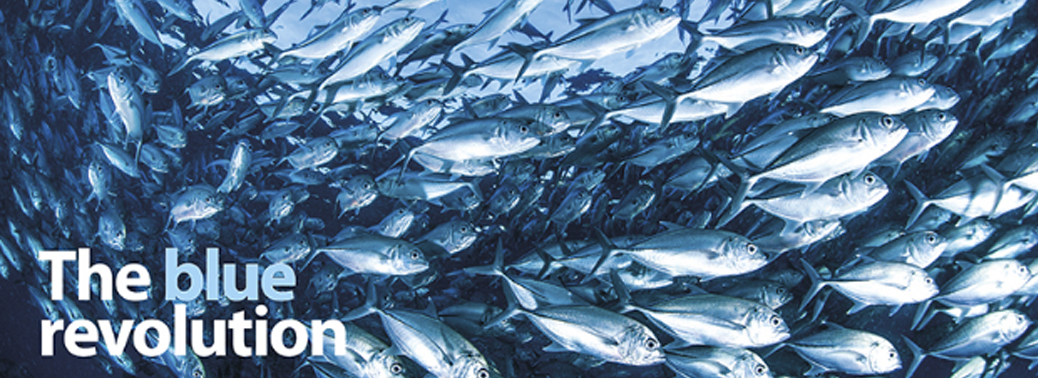
Why in News?
- Realizing the immense scope for the development of fisheries and aquaculture, the Government of India has restructured the Central Plan Schemes under an umbrella of the Blue Revolution.
Highlights:
- The major components of the CSS on Blue Revolution scheme are as under:
- Development of Inland Fisheries and Aquaculture
- Development of Marine Fisheries, Infrastructure and Post-harvest Operations
- National Scheme for Welfare of Fishermen.
- Monitoring, Control and Surveillance and other need-based Interventions (MCS).
- Institutional Arrangement for Fisheries Sector
- Strengthening of Database & Geographical Information System of the Fisheries Sector (SoDGIS).
- National Fisheries Development Board and its activities (NFDB).
Outcomes:
- The Blue Revolution in India along with the Fish Farmers Development Agency (FFDA) brought an improvement in the aquaculture and fisheries sector with the introduction of new techniques of rearing, marketing, exporting and fish breeding.
- Some of the major outcomes of the Blue Revolution in India are mentioned below:
- Currently, the Indian Fisheries Sector reached a production of 4.7 million tonnes of fish from a limit of 60,000 tonnes including 1.6 million tonnes of fish from freshwater aquaculture.
- India is recorded to achieve an average annual growth of 14.8% as compared to the global average percentage of 7.5 in the production of fish and fish products.
- The fishery has become India’s largest agricultural export over the last five years with a growth rate of 6% – 10%.
- India has become the world’s second-largest producer of fish with exports worth more than 47,000 crore rupees.
- The Fisheries and aquaculture production contributes 1% and 5% to India’s GDP and Agricultural GDP respectively.
OIL SEEDS PRODUCTION
13, Feb 2020
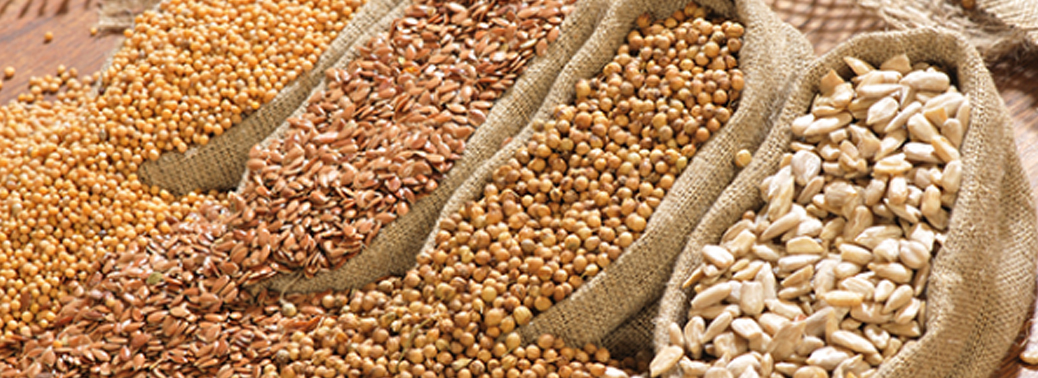
Why in News?
- Country needs 25 million tonnes of edible oils to meet its requirement at current consumption level of 19 kg per person per year.
- Out of the total requirement, 10.50 million tonnes are produced domestically from primary (Soybean, Rapeseed & Mustard, Groundnut, Sunflower, Safflower & Niger) and secondary sources (Oil palm, Coconut, Rice Bran, Cotton seeds & Tree Borne Oilseeds) and remaining 60%, is met through import. The oilseed production of the country has been growing impressively.
- Despite this, there exists a gap between the demand and supply of oilseeds, which has necessitated sizeable quantities of imports.
Challenges:
- The major challenges in oilseed production is largely rain-fed conditions (70% area), high seed cost (Groundnut and Soybean), small holding with limited resources, low seed replacement rate and low productivity.
Govt. Intervention:
- To increase domestic availability and reduce import dependency, a National Mission on Edible Oils (NMEO) is proposed for next five years (2020-21 to 2024-25).
- NMEO covering three Sub-Missions to increase production of oilseeds and edible oils from
- Primary Sources (Annual Crops, Plantation Crops and Edible TBOs)
- Secondary Sources (Rice bran oil and Cotton seed oil)
- Consumer Awareness for maintaining edible oil consumption constant at 19.00 kg per person per annum.
- The proposed mission will aim to increase production from 30.88 to 47.80 million tonnes of oilseeds which will produce 7.00 to 11.00 million tonnes of edible oils from Primary Sources by 2024-25.Similarly, edible oils from secondary sources will be doubled from 3.50 to 7.00 million tonnes.
Action Points to Increase Production:
- The following action point will be initiated for increasing production and productivity of oilseeds and promotion of Secondary Sources of Edible oils:
- Increasing seed replacement rate and varietal replacement rate
- Promotion of oilseed in rice fallow/ potato areas
- Promotion of oilseeds through intercropping
- Extending oilseed cultivation in non-traditional area
- Targeting 100 low productivity districts
- Crop diversification in different reasons
- Promotion of community-based oil Extraction Unit
- Value addition and promotion of Export
- Promotion of rice bran and cotton seed oil
- Consumer awareness for judicious consumption of oils for good health
- The above strategies will deliberate the following output by the end of 2024-25:
- Oilseed production will be increased from 30.88 to 47.80 million tonnes
- Productivity will be increase from 1263 to 1587 kg per ha
- Reduction in import dependence from 60% to 45%
- Edible oil production will be 18.00 Million Tonne from 10.50 Million Tonnes.
PROTECTED SPECIAL AGRICULTURE ZONE
10, Feb 2020

Why in News?
- Chief Minister of Tamil Nadu recently announced that the Cauvery delta regionwould be declared as Protected Special Agriculture Zone.
What is a Protected Agriculture Zone?
- Declaring as the Protected Special Agriculture Zone ensures that particular region will not be granted permission for any new projects like those related to hydrocarbons.
- Only Agro based Industries would be given permission to be built.
What are the regions declared as Protected Zones?
- To guard the delta areas and end farmers’ ordeals, the special protection will be bestowed on Cauvery Delta districtssuch as Thanjavur, Tiruvarur, Nagappattinam, Pudukottai, Cuddalore, Ariyalur, Karur and Tiruchirappalli districts.

Why such protection is essential?
- The Cauvery Delta Region is an important agricultural region in Tamil Naduand farmers continue to do agriculture, despite climate changes.
- It is just and reasonable that projects like hydrocarbon exploration have raised concerns among farmers and other agriculture-based labourers.
- Since the delta region is close to the sea, there is a need to safeguard the region.
What would be the benefits of this declaration?
- The benefits that have accrued for farmers are manifold.
- Drilling for extraction of oil and gas in these regions that hampers agriculture and posing much environmental impact or health hazards will be stopped immediately.
- Whatever the project introduced by the centre, it cannot be implemented without the NOC from that state.
SOIL HEALTH CARD SCHEME
07, Feb 2020

Why in News?
- In the second phase of the scheme’s implementation, 11.69 crore Soil Health Cards were distributed to farmers in Two Years.
Soil Health Card Scheme:
- The scheme was launched in 2014 with a view to addressing the decline of soil nutrients.
- The scheme has helped farmers to understand the soil health parameters and improve its productivity by judicious application of soil nutrients.
- Under this scheme, farmers can know the major and minor nutrients available in their soils which will ensure judicious use of fertiliser application and reduce the cost of inputs and improve soil fertility.
- A Soil Health Card is used to assess the current status of soil health and, when used over time, to determine changes in soil health that are affected by land management.
- It displays soil health indicators and associated descriptive terms. The indicators are typically based on farmers’ practical experience and knowledge of local natural resources.
- The card lists soil health indicators that can be assessed without the aid of technical or laboratory equipment.
- A study conducted by the National Productivity Council (NPC) says the application of Soil Health Card recommendations has led to a decline of 8-10% in the use of chemical fertilizers and also raised productivity by 5-6%.
- A pilot project “Development of Model Villages” is being implemented under which the sampling and testing of cultivable soil are being encouraged in partnership with the farmers.
- Under the project, a Model Village has been selected for aggregation of soil samples and analysis of each agricultural holding.
- The scheme provides for the analysis of soil composition by the State Governments once in every two years so that remedial steps can be taken to improve soil nutrients.
- Farmers can track their soil samples and also obtain their Soil Health Card report.
- The scheme also aids in creating employment for Rural Youth.
- Under the scheme, village youth and farmers up to 40 years of age are eligible to set up Soil Health Laboratories and undertake testing.
- A laboratory costs up to Rs Five Lakhs, 75% of which can be funded by the Central and State Governments.
- The same provisions apply to Self Help Groups, Farmers’ Cooperative Societies, Farmers Groups and Agricultural Producing Organisations.
CHEMICAL RIPENING FRUITS-POISONING
01, Feb 2020
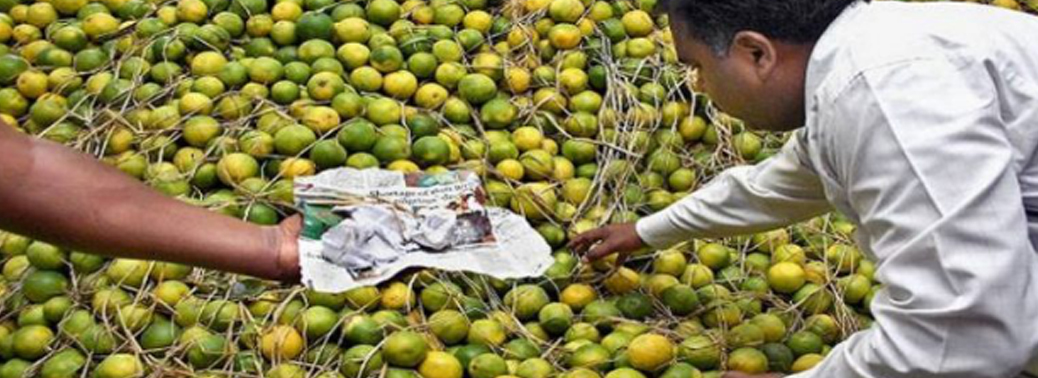
Context:
- Recently, the Delhi High Court has observed that use of chemicals to ripen fruits amounts to poisoning the somebody.
Artificial Ripening of Fruits:
- Ripening is associated with change in composition i.e. conversion of starch to sugar.
Food Safety and Standards (Prohibition and Restriction on sales) regulations, 2011 Prohibits:
- Prohibition of use of carbide gas in ripening of fruits: No person shall sell or offer or expose for sale or have in his praises for the purpose of sale under any description, fruits which have been artificially ripened by use of acetylene gas, commonly known as Carbide Gas.
- Provided that fruits may be Artificially Ripened by use of ethylene gas at a concentration up to 100 ppm (100µl/L) depending upon the crop, variety and maturity.
What are the Health problems caused by Calcium Carbide?
- Calcium Carbide is a colourless chemical or greyish white to black in colour. It is cheap and easily available chemical.
- Acetylene is believed to affect the nervous system by reducing oxygen supply to brain. Calcium carbide, once dissolved in water, produces acetylene which acts as an artificial ripening agent.
- It breaks down the organic composition of vitamins and other Micronutrients.
- Industrial-grade calcium carbide usually contains traces of arsenic and Phosphorus.
- Arsenic and phosphorus are toxic and exposure may cause severe Health Hazards
- It causes Vomiting, Diarrhoea, Weakness, Burning Sensation in the chest and abdomen, thirst, problem in swallowing, burning of eyes, permanent eye damage, ulcers on the skin, mouth, nose and throat.
- It damages the mucosal tissuein the stomach and disrupts the intestinal function. If a person is exposed to the chemicals for a long time, they can cause Peptic Ulcers.
Is there any Other Techniques for Ripening of Fruits?
- There are Several Simple Methods Available Today for Farmers for Proper Ripening.
- A simple techniques practiced in households to trigger ripening is to keep unripened and ripened fruits together inside an air tight container.
- Another method is to place the fruits intended for ripening inside an air tight room and induce ripening through smoking inside smoke chambers. Smoke emanates acetylene gas.
- Several fruit traders follow this technique to achieve uniform ripening especially in edible fruits like banana and mango. But the major drawback of this method is that the fruits do not attain uniform colour and flavour. In addition, the persistence of smoke odour on the product impairs its quality
- Spreading of unripe fruits as layers over paddy husk or wheat straw for a week to ripen is an another alternative.
- Another practice is that some farmers dip unripe mature fruits in 0.1 per cent ethrel solution (1 ml of ethrel solution in 1 litre of water) and wipe it dry. The fruits are then spread over a newspaper without touching each other and a thin cotton cloth is covered over this. In this method, the fruits will ripen within two days.
- In one of the simple and harmless techniques, 10 ml of ethrel and 2 gm of sodium hydroxide pellets are mixed in five litres of water taken in a wide mouthed vessel. This vessel is placed inside the ripening chamber near the fruits and the room is sealed air tight. About a third of the room is filled with fruits leaving the remaining area for air circulation.
- Ripening of fruits takes place in about 12 to 24 hours. In order to reduce the cost of chemical, some ethylene releasing fruits such as papaya and banana can also have kept in the same room.
NATIONAL FOOD SECURITY MISSION (NFSM) – OILSEEDS AND OIL PALM
21, Dec 2019

Why in News?
- The Government is implementing the National Food Security Mission (NFSM) – Oilseeds and Oil Palm to increase production of oilseeds and domestic availability of Edible Oils.
NFSM – Oilseeds and Oil Palm:
- This scheme is under implementation in 29 States and has three subcomponents namely, Oilseeds, Oil palm and Tree Borne Oilseeds (TBOs).
- The main objective is to increase oilseeds production & productivity and area expansion under oil palm & TBOs cultivation.
Objectives of NFSM:
- Increasing the production of rice, wheat, pulses, coarse cereals (maize and barley) and nutri-cereals through area expansion and productivity enhancement in a sustainable manner in the identified districts of the country.
- Restoring soil fertility and productivity at the individual farm level.
- Enhancing farm level economy (i.e. farm profits) to restore confidence amongst the Farmers.
Oilseeds Agriculture in India:
- India is one of the major oilseeds grower and importer of edible oils.
- India’s vegetable oil economy is the world’s fourth-largest after USA, China & Brazil.
- Oilseeds account for 13% of the Gross Cropped Area, 3% of the Gross National Product and 10% value of all agricultural commodities.
- The diverse agro-ecological conditions in the country are favourable for growing 9 annual oilseed crops, which include 7 edible oilseeds (groundnut, rapeseed & mustard, soybean, sunflower, sesame, safflower and niger) and two non-edible oilseeds (castor and linseed).
- Oilseeds cultivation is undertaken across the country in about 27 million hectares mainly on marginal lands, of which 72% is confined to rain-fed farming.
- During the last few years, the domestic consumption of edible oils has increased substantially and has touched the level of 18.90 million tonnes in 2011-12 and is likely to increase further.
- A substantial portion of our requirement of edible oil is met through import of palm oil from Indonesia and Malaysia.
MISSION FOR INTEGRATED DEVELOPMENT OF HORTICULTURE (MIDH)
11, Dec 2019
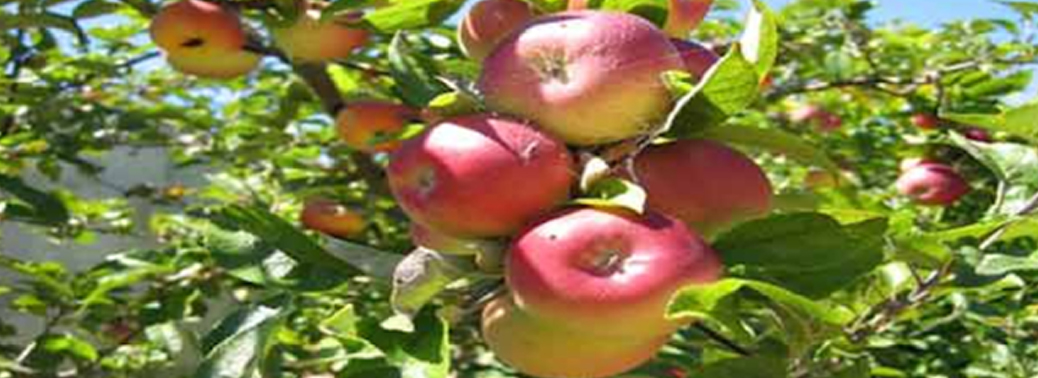
Why in News?
- Information about the MIDH was provided by the Union Minister of Agriculture and Farmers’ Welfare in the Lok Sabha.
MIDH:
- The MIDH is a centrally sponsored scheme for the holistic growth of the horticulture sector covering fruits, vegetables, root & tuber crops, mushrooms, spices, flowers, aromatic plants, coconut, cashew, cocoa and bamboo.
- Under MIDH, the Government of India contributes 60% of the total outlay for developmental programmes in all the states except states in the North East and the Himalayas. 40% share is contributed by State Governments. In the case of North Eastern and Himalayan States, GOI contributes 90%.
- MIDH also provides technical advice and administrative support to State Governments/State Horticulture Missions (SHMs) for the Saffron Mission and other horticulture-related activities like the Rashtriya Krishi Vikas Yojana (RKVY).
- The Mission was started in 2014.
Objectives of the MIDH:
- To promote the holistic growth of horticulture sector, including coconut through area-based regionally differentiated strategies which include research, technology promotion, extension, post-harvest management, processing and marketing in consonance with comparative advantage of each State/region and its diverse agri-climatic features.
- To encourage aggregation of farmers into farmer groups like FIGs/FPOs and FPCs to bring economy of scale and scope.
- To enhance horticulture production.
- To augment farmers’ income.
- To strengthen nutritional security.
- To improve productivity by way of quality germ-plasm, planting material and water use efficiency through micro-irrigation.
- To support skill development and create employment generation opportunities for the rural youth in horticulture and post-harvest management, especially in the cold chain sector.
MIDH Sub-Schemes:
- National Horticulture Mission (NHM)
- Horticulture Mission for North East & Himalayan States (HMNEH)
- National Horticulture Board (NHB)
- Coconut Development Board (CDB)
- Central Institute for Horticulture (CIH), Nagaland
Major interventions of MIDH:
- Setting up of nurseries, tissue culture units for production of quality seed and planting material.
- Area expansion i.e., the establishment of new orchards and gardens for fruits, vegetables, and flowers.
- Rejuvenation of unproductive, old, and senile orchards.
- Protected cultivation, i.e. poly-house, green-house, etc., to improve productivity & grow off-season high value vegetables and flowers.
- Organic farming and certification.
- Creation of water resources structures and watershed management.
- Bee-keeping for pollination.
- Horticulture mechanization.
- Creation of post-harvest management and marketing infrastructure.
GOVERNMENT PROCURED ONLY 3% OF OILSEEDS AND PULSES UNDER PM-AASHA
05, Dec 2019
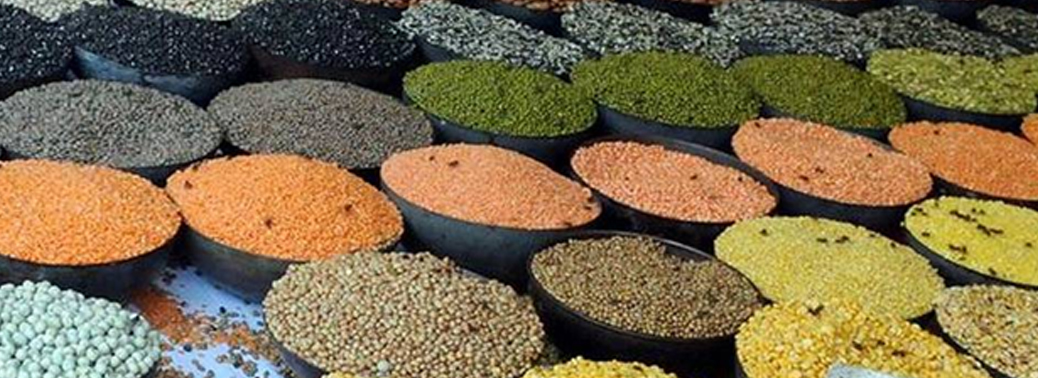
Why in News?
- Data from Agriculture Ministry has indicated that only less than 3% of this season’s sanctioned amount of pulses and oilseeds have actually been procured so far under the once-hyped PM-AASHA scheme.
About PM-AASHA:
- The PM-AASHA or Pradhan Mantri Annadata Aay Sanrakshan Abhiyan was announced with great fanfare in September 2018, as an effort to ensure that farmers growing pulses, oilseeds and copra actually get the minimum support prices they are promised for their crops each year.
- Apart from initiatives to allow cash payment to farmers or procurement by private traders, PM-AASHA’s main feature was a price support scheme whereby Central agencies would procure pulses and oilseeds directly from farmers.
- The three schemes that are part of AASHA are:
- The Price Support Scheme (PSS)
- The Price Deficiency Payment Scheme (PDPS)
- The Pilot of Private Procurement and Stockist Scheme (PPPS)
- PSS – Under the PSS, physical procurement of pulses, oilseeds and copra will be done by Central Nodal Agencies.
- Besides, NAFED and Food Cooperation of India will also take up procurement of crops under PSS.
- The expenditure and losses due to procurement will be borne by the Centre.
- PDPS – Under the PDPS, the Centre proposes to cover all oilseeds.
- The difference between the MSP and actual selling/modal price will be directly paid into the farmer’s bank account.
- Farmers who sell their crops in recognised mandis within the notified period can benefit from it.
- PPSS – In the case of oilseeds, States will have the option to roll out PPSSs in select districts.
- Under this, a private player can procure crops at MSP when market prices drop below MSP.
- The private player will then be compensated through a service charge up to a maximum of 15% of the MSP.
- The Centre had budgeted ₹15,053 crore over two years to implement the scheme apart from an additional government credit guarantee of ₹16,550 crore for agencies undertaking procurement.
- It was launched as increasing MSP was not adequate and it is more important that farmers should get full benefit of the announced MSP.
- Crops covered under the Scheme for this Season:
- The main crops covered under the scheme this season are moong, urad, arhar, and groundnut and soya bean.
- The late arrival of the monsoon means that harvests and crop arrivals also began slightly later than expected, especially for arhar or tur dal, so procurement is likely to continue, though tapering, until February.
Issues Associated with the MSP Scheme:
- The scheme provides little to strengthen the procurement mechanism infrastructure in the country which largely only works for two crops – wheat and rice.
- According to a survey conducted by the National Sample Survey Office (NSSO) in the 70th round in 2013, only 6% of farmers are able to sell their produce at MSP.
- A 2017 study found that only 24% households were aware about the MSP of crops grown by them.
- Further, the study found, although MSP is announced for the whole of India, the operation is limited only to few states where the designated government agencies procure the produce from farmers and except for crops like rice and wheat, quantity procured is very limited leading to low level of awareness.
- According to a 2016 NITI Aayog evaluation report 79% farmers were dissatisfied with the MSP regime.
- Some of the reasons for their dissatisfaction were delay in payments, lack of infrastructure at procurement centres, distance to procurement centres and delayed announcement of MSP rates.
- NITI Aayog’s evaluation also found that there were several states where the procurement infrastructure facilities were ‘inadequate’.
What is the Current Issue regarding the PM-AASHA?
- Procurement is still lagging badly in most States.
- The highest sanctioned procurement is in Maharashtra, where 10 lakh tonnes of soya bean procurement were sanctioned, apart from 58,000 tonnes of moong and urad dal. However, barely 1,709 tonnes have been procured in the State so far, including just 14 tonnes of soya bean.
- The highest procurement so far has taken place in Rajasthan, where more than 51,000 tonnes of moong and groundnut have been procured, against a total sanctioned amount of 9.6 lakh tonnes.
- While almost 5 lakh tonnes had been sanctioned in Madhya Pradesh, and 1.18 lakh tonnes in Uttar Pradesh, procurement has not yet begun in either State.
WHO IS A FARMER?
02, Dec 2019
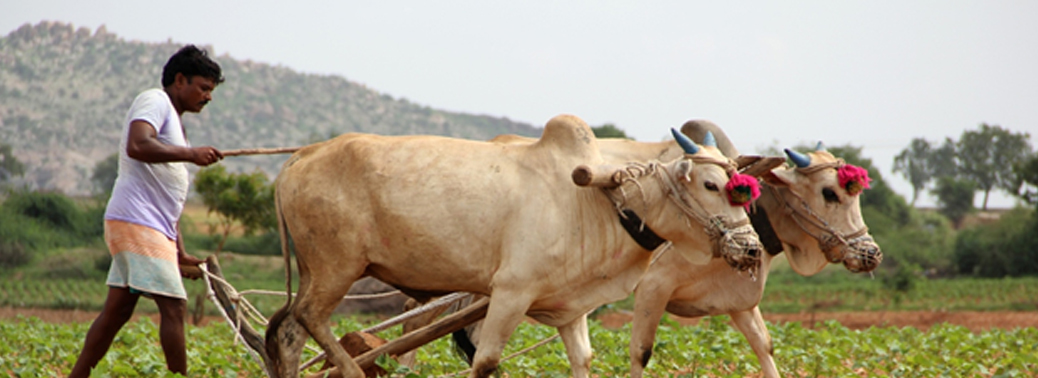
Why in News?
- Union Agriculture Minister has failed to answer the question regarding the definition of farmer, when it was asked in Parliament last week. This has raised a debate in the parliament regarding the issue.
Background:
- In the discussion last week in parliament, MPs pointed out that the number of land holdings do not necessarily equate with the number of farming households.
- It was noted that dairy farmers, fisher-folk, fruit and flower growers, as well as landless agricultural workers who cultivate the land belonging to others, would not fit into a narrow definition where farmers are linked to ownership of land alone.
- The government’s ambiguity has serious implications for the design and beneficiaries of the schemes meant to help them, including its flagship PM-KISAN (Pradhan Mantri Kisan Samman Nidhi).
Definition as per National Policy for Farmers:
- There is a clear and comprehensive definition available in the National Policy for Farmers, which was drafted by the National Commission of Farmers headed by M.S. Swaminathan and officially approved by the Centre in 2007 following consultations with the States.
- As per the Policy, the term ‘FARMER’ will refer to a person actively engaged in the economic and/or livelihood activity of growing crops and producing other primary agricultural commodities and will include all agricultural operational holders, cultivators, agricultural labourers, sharecroppers, tenants, poultry and livestock rearers, fishers, beekeepers, gardeners, pastoralists, non-corporate planters and planting labourers, as well as persons engaged in various farming related occupations such as sericulture, vermiculture and agro-forestry.
- The term will also include tribal families / persons engaged in shifting cultivation and in the collection, use and sale of minor and non-timber forest produce.
Impact of Ambiguity:
- The definition of a farmer is not merely a philosophical or semantic question, but rather has practical implications.
- Most of the schemes meant for farmers’ welfare, including the procurement of wheat and paddy at minimum support prices, are effectively available only for land owners.
- Even in death, those who work on the land may not be identified as farmers for the purposes of counting farmer suicides.
- In practice, those who cultivate or work on the land but do not own it are excluded from access to agricultural credit and interest subvention for farm loans.
- Crop insurance and loan waivers go to loaners so they are left out of that as well.
- Access to subsidised crop inputs is difficult without identification as farmers. In the event of crop failure, compensation is only given to owners.
- Direct income support schemes such as PM-KISAN are limited to owners
- Tax exemption is usually claimed by owners who give an unverified affidavit that they cultivate the land.
Way Ahead:
- S. Swaminathan Commission’s definition should be converted into a legal and actionable tool for identification.
- Already, the revenue department is supposed to annually record who is actually cultivating each piece of land. So, the above step will be useful for this exercise too.
- Apart from adding inclusion criteria other than land-ownership, the Centre must add exclusion criteria so absentee landlords are left out. Otherwise, the farmer who actually takes the risk gets no support, but those who treat land as an investment or speculation get all the benefits.
WORLD COTTON DAY
07, Oct 2019
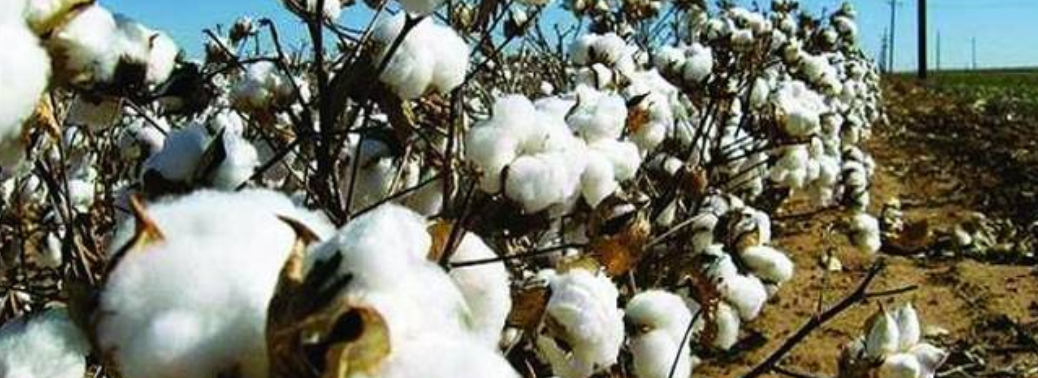
Why in News?
- The Ministry of Textiles, Government of India, is participating in the World Cotton Day event being observed from 7th October to 11th October 2019 in Geneva.
World Cotton Day:
- It is being organised by the World Trade Organisation (WTO) in collaboration with the Secretariats of the United Nations Food and Agriculture Organization (FAO), the United Nations Conference on Trade and Development (UNCTAD), the International Trade Centre (ITC) and the International Cotton Advisory Committee (ICAC).
- WTO is hosting the event at the request of the Cotton – 4 countries – Benin, Burkina Faso, Chad and Mali to celebrate their official application for the recognition of 7th October as World Cotton Day by the United Nations.
- World Cotton Day will celebrate the many advantages of cotton, from its qualities as a natural fibre, to the benefits people obtain from its production, transformation, trade and consumption.World Cotton Day will also serve to shed light on the challenges faced by cotton economies around the world because cotton is important to least developed, developing and developed economies worldwide.
- Cotton occupies just 2.1 % of the world’s arable land, yet it meets 27% of the world’s textile need.
- In addition to its fibre used in textiles and apparel, food products are also derived from cotton, like edible oil and animal feed from the seed.
- Cotton is a drought-resistant crop ideal for arid climates.
- A sculpture of Mahatma Gandhi made out of cotton will be displayed to commemorate the 150th birth anniversary of Mahatma Gandhi, at the event.
- The Cotton Textiles Export Promotion Council (TEXPROCIL) will be displaying India’s high-quality cotton textiles at the exhibition.
- Between 2011 and 2018, India implemented a Cotton Technical Assistance Programme (Cotton TAP-I) of about USD 2.85 million for seven African countries namely Benin, Burkina Faso, Mali and Chad and also Uganda, Malawi and Nigeria.
- The technical assistance focused on improving the competitiveness of the cotton and cotton-based textiles and apparel industry in these countries through a series of interventions that had significant outcomes leading to a demand for a follow on project
CAPACITY BUILDING OF SUSTAINABLE FOOD VALUE CHAINS
23, Aug 2019
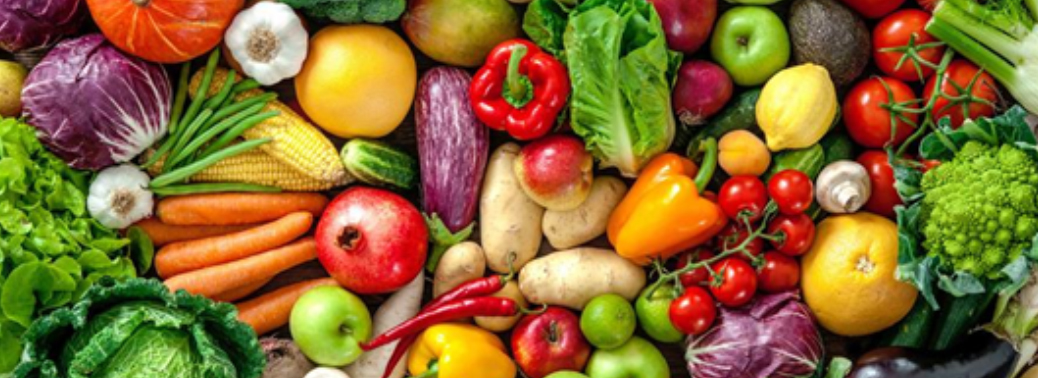
Why in News?
- A National Conference on Capacity Building of Sustainable Food Value Chains for Enhanced Food Safety and Quality was organized by National Productivity Council (NPC) in collaboration with the Asian Productivity Organization, Tokyo, Japan.
National Productivity Council (NPC):
- NPC is a national level organization to promote productivity culture in India.
- Established by the Ministry of Industry, Government of India in 1958, it is an autonomous, multipartite, non-profit organization with equal representation from employers’ & workers’ organizations and Government, apart from technical & professional institutions and other interests.
- NPC is a constituent of the Tokyo-based Asian Productivity Organisation (APO), an Inter-Governmental Body, of which the Government of India is a founder member.
- NPC teams up with its clients to work out solutions towards accelerating productivity, enhancing competitiveness, increasing profits, augmenting safety and reliability and ensuring better quality.
- It provides a reliable database for decision-making, improved systems and procedures, work culture as well as customer satisfaction both internal & external.
- The solutions can be all-encompassing or specific depending on the nature of the problem. The council also helps monitor, review and implement the identified strategies. Promotional and catalytic in nature, NPC’s services have bearings on economic growth and quality of life.
- The Council promotes a comprehensive view of productivity-focused on improving the triple bottom line – economic, environmental and social and adds value for all the stakeholders through generation & application of advanced knowledge for inclusive Growth.
HOW FORESTS CAN HELP IN DOUBLING FARMERS’ INCOME
21, Aug 2019

Background
- The Government of India is working out a plan to double farmers’ income by 2022.
- The government plans to take up a number of measures and expand into allied sectors, promote zero-budget farming, organic farming, etc to double the income of the exiting farmers.
What Prime Minister’s Economic Advisory Council, said:
- “One of the best ways to double farmers’ income is to halve the number of farmers.”
Importance of Agriculture in Indian economy
- Agriculture is the mainstay of the Indian economy even though it contributes less than 15 per cent of the Gross Domestic Product.
Almost 50 per cent of Indian families are dependent on farms for their livelihood and they have made India a food-surplus country.
Surplus food production issue
- surplus production in some of the irrigated pockets — by canals, lift irrigation from rivers and groundwater — has not only made farming unsustainable for the small segment of farmers who have attained some sort of a success and achieved a good amount of income, but has also destroyed ecology and local food diversity.
Issue with cost of production
- At this point of time, while the so-called ‘successful’ farmers are struggling to maintain their income, which essentially means putting in more and more investment, the other farmers are busy struggling for subsistence.
Shift to other sectors:
-
- The small and marginal land-holders should shift to other sectors as wage labourers as their farms are fit only for subsistence and their land holding is so small and fragmented that it is difficult to go for intensive agriculture.
- That is the reason the youth in the villages are no more interested in farming. According to the 2011 Census figures, 2,000 farmers are giving up farming each day. In 2016, the average age of an Indian farmerwas 50.1 years and that’s worrying.
Issue of Food Security
- If the trend of farmers moving out of their original occupation continues like this, it will be a great challenge to meet our food requirements by the year 2050 when the food demand is expected to double than what it is now as because our population is expected to touch 1.9 billion, more than two thirds of which will be in the middle-income group.
- Food imports will be too costly and if farm distress continues the way it is, we can’t anyway keep all farmers in villages and in their farms anyway.
- Whether they will be gainfully employed in other sectors is another big question and we are not dealing with that at this moment.
Farming class
- While average statistical figures don’t actually tell us as to which category of farmers — the intensive agriculture segment or the subsistence segment — is gradually vanishing from the farms, experience tells us that the small farmers are more vulnerable to migration. And that’s exactly where we have a big problem.
- Stats
- We have about 83 per cent rural people who are either entirely landless or own less than one hectare (ha) of land.
- Another 14 per cent own less than three ha, and that is as good as a small and non-profitable farm holding depending on the irrigation status and other factors.
- Only about 0.25 per cent of rural households own more than 10 ha of land and a minuscule 0.01 per cent own over 20 ha.
- In terms of national per capita income parameters, the majority of small farmers — let’s say more than 80 per cent — cannot stick to agriculture if they are not provided with other supports and social security measures.
- Their younger generations would have no motivation to stay with farming anyway and will gradually move out.
Farmers are also forest protectors
- There is a specific segment of farmers who live in and with forests. Most of these small and marginal farmers, including the indigenous communities, who live in and around our forests, do another big job for all of us.
- They protect our natural forests, besides adding to the country’s food security.
- There are thousands of villages in India that are protecting local natural forests for various reasons.
- Many of these indigenous communities consider the forests as their ancestors, part of their family; and protect them for fuelwood, household timber, food, nutrition, medicinal plants and various other profits which they derive.
- Stats
- In fact, globally, such communities are said to own or manage at least a quarter of the world’s land surface.
- While a recent global study says that as much as 22 per cent of income for the rural people living in and around forests comes from timber and non-timber forest resources, my own assessment from several villages spread across India’s central highlands finds out this to be up to 50 per cent or even more.
Benefits of people staying in forest
- They help absorb a huge amount of our carbon emission.
- New analysisreveals that indigenous peoples and local communities manage 300,000 million metric tons of carbon in their trees and soil — 33 times the energy emissions from 2017.
Doubling of income for this section of farmer
- For this segment of farmers, therefore, the doubling of income would need different strategies.
- Rights to the forests, better systems to support them for the ecosystem services — including water conservation through forestry — they are providing, improved market and augmented price for the various forest produce they market as a major livelihood support system, and provide them with better amenities.
Way forward
- In her budget speech, India’s Finance Minister said the government is considering zero budget farming as a key tool in their strategy to double farmers’ income.
- These communities can take a lead in organic farming and even zero budget farming as most of them are still practicing low external input farming in their rain-fed farms.
INDIAN LIVESTOCK
19, Aug 2019

Context: India’s Livestock Export Potential Can’t Be Realised Till We Eradicate Foot-and-Mouth Disease
Stats-
- In India, livestock contributes over 4% to the country’s total GDP. As per estimates of the Central Statistics Office (CSO), the value of output from livestock and fisheries is estimated to be close to Rs 5 lakh crore.
Livestock in India
- India has the privilege of having the largest population of livestock in the world.
- India’s milk production is highest in the world.
- And yet, the sector has been neglected for years.
Issue with foot-and-mouth disease (FMD) and brucellosis.
- It is actually the presence of FMD in India that has stopped us from realising the true potential of this sector.
- Trade barriers are put using this as an excuse, while totally putting aside the fact the OIE (The World Organisation for Animal Health) has endorsed our FMD vaccination programme.
- While Andhra Pradesh and Telangana have reported no outbreak of FMD in the last few years, states like UP, Maharashtra and Punjab need extra focus as major trade emanates from there.
What is Foot and mouth disease (FMD)
- Foot and mouth disease (FMD) is a severe, highly contagious viral disease of livestock that has a significant economic impact. The disease affects cattle, swine, sheep, goats and other cloven-hoofed ruminants.
- Intensively reared animals are more susceptible to the disease than traditional breeds. The disease is rarely fatal in adult animals, but there is often high mortality in young animals due to myocarditis or, when the dam is infected by the disease, lack of milk.
Importance of Livestock to Indian Farmer
- In India, 75% of the poor control the country’s livestock, which in turn becomes a major source of their income.
- The direct losses to a farmer due to these diseases comes from a loss in milk production and reduction in the working ability of the animals.
- Export issue
- The bigger economic losses, however, are the non-acceptance of our milk and milk products, meat and its products in certain parts of the world, making the value realisation of our agri exports not at par with countries like Brazil, Australia, New Zealand and so on. Hence, it’s important that we as a nation give top priority for the control, prevention and eradication of this disease.
- Income:
- Livestock is a source of subsidiary income for many families in India especially the resource poor who maintain few heads of animals.
- Cows and buffaloes if in milk will provide regular income to the livestock farmers through sale of milk.
- Animals like sheep and goat serve as sources of income during emergencies to meet exigencies like marriages, treatment of sick persons, children education, repair of houses etc.
- The animals also serve as moving banks and assets which provide economic security to the owners.
- Employment:
- A large number of people in India being less literate and unskilled depend upon agriculture for their livelihoods.
- But agriculture being seasonal in nature could provide employment for a maximum of 180 days in a year.
- The land less and less land people depend upon livestock for utilizing their labour during lean agricultural season.
- Food:
- The livestock products such as milk, meat and eggs are an important source of animal protein to the members of the livestock owners.
- The per capital availability of milk is around 355 g / day; eggs is 69 / annum;
- Social security:
- The animals offer social security to the owners in terms of their status in the society.
- The families especially the landless which own animals are better placed than those who do not. Gifting of animals during marriages is a very common phenomenon in different parts of the country.
- Rearing of animals is a part of the Indian culture. Animals are used for various socio religious functions.
- Cows for house warming ceremonies; rams, bucks and chicken for sacrifice during festive seasons; Bulls and Cows are worshipped during various religious functions. Many owners develop attachment to their animals.
- Draft :
- The bullocks are the back bone of Indian agriculture. The farmers especially the marginal and small depend upon bullocks for ploughing, carting and transport of both inputs and outputs.
- Dung:
- In rural areas dung is used for several purposes which include fuel (dung cakes), fertilizer (farm yard manure), and plastering material (poor man’s cement).
Government intervention
- First cabinet meeting of sanctioning Rs 13,500 crore towards the eradication of this disease in the next five years is commendable and praise worthy.
- or years, this problem has kept our dairy and meat products on the back foot in the global markets.
Past eradication of disease
- In the past, India has successfully eradicated
- We must learn from this and have an exclusive set-up on the same lines to ensure, monitor and set timelines.
- We have experts in the country who have vast experience of FMD control, whom the government should engage for initiating an effective beginning.
What need to be done
- Establishing of adequate check posts to monitor animal movement, and identification of animals will be important and will have tremendous benefits.
- Farm holdings also need to be registered and monitored.
- Keeping in mind the size and scale of our country, the low hanging fruit would be to establish disease-free zones in some prospective economic zones like Andhra-Telangana, Maharashtra-Punjab, Gujarat-MP-Delhi, Haryana and UP.
- The advantages of setting up of these zones will be near elimination of losses on account of FMD morbidity and mortality of livestock, increase in superior quality milk production, skill development of farmers through awareness and competence building programmes, increased contribution to national economy from dairy, meat sectors, more market access options, better and higher utilisation of existing infrastructure.
- The unique strength of India’s livestock market economy need to be achieved positively and effectively by reaching FMD-free status.
- We already do not import any FMD-susceptible animals from countries that could pose possible risk. The only risk from outside the country is the illegal movement of pigs from Myanmar to Northeastern region, but with effective check posts, this can be controlled easily .
Vaccination issue
- It is extremely critical to keep a check on the quality of vaccine as the requirement will be in hundreds of millions per annum.
- It has to meet Indian Pharmacopeia and OIE standards, and it will be important to have an expert committee to monitor, visit and track the manufacturing facilities of the same.
Conclusion
- Eradication of FMD will be a giant step towards doubling of farmers income, better value realisation of dairy and meat and effective utilisation of the privilege of having the largest livestock population in the world.
- It will all depend on how well we use these funds, and how much of established timelines we follow or else this will be another scheme which came and went.
PRADHAN MANTRI KISAN MAAN-DHAN YOJANA (PM-KMY)
11, Aug 2019

Context: The PM-KMY was launched by Agriculture Minister which entitles eligible farmers for monthly pension of ₹3,000 per month on attaining the age of 60.
About PM-KMY:
- Aim: Welfare of small and marginal farmers across the country.
Key Highlights of the Scheme:
- It is a voluntary and contributory scheme for farmers and the entry age is between 18 to 40 years.
- Eligible farmers will be provided with a monthly pension of Rs. 3000/- per month on attaining the age of 60 years.
- The farmers will have to make a monthly contribution of Rs.55 to Rs.200, depending on their age of entry, in the Pension Fund till they reach the retirement date i.e. the age of 60 years.
- The Central Government will also make an equal contribution of the same amount in the pension fund.
- The spouse is also eligible to get a separate pension of Rs.3000/- upon making separate contributions to the Fund.
- The Life Insurance Corporation of India (LIC) shall be the Pension Fund Manager and responsible for Pension pay out.
- In case of death of the farmer before retirement date, the spouse may continue in the scheme by paying the remaining contributions till the remaining age of the deceased farmer.
- If the spouse does not wish to continue, the total contribution made by the farmer along with interest will be paid to the spouse.
- If there is no spouse, then total contribution along with interest will be paid to the nominee.
- If the farmer dies after the retirement date, the spouse will receive 50% of the pension as Family Pension.
- After the death of both the farmer and the spouse, the accumulated corpus shall be credited back to the Pension Fund.
- The beneficiaries may opt voluntarily to exit the Scheme after a minimum period of 5 years of regular contributions.
- On exit, their entire contribution shall be returned by LIC with an interest equivalent to prevailing saving bank rates.
- The farmers, who are also beneficiaries of PM-Kisan Scheme, will have the option to allow their contribution debited from the benefit of that Scheme directly.
- In case of default in making regular contributions, the beneficiaries are allowed to regularize the contributions by paying the outstanding dues along with prescribed interest.
- The initial enrollment to the Scheme is being done through the Common Service Centres in various states.
- Later on, alternative facility of enrollment through the PM-Kisan State Nodal Officers or by any other means or online enrollment will also be made available.
- The enrollment is free of cost. The Common Service Centres will charge Rs.30/- per enrolment which will be borne by the Government.
- There will be appropriate grievance redressal mechanism of LIC, banks and the Government. An Empowered Committee of Secretaries has also been constituted for monitoring, review and amendments of the Scheme.
SULPHUR BASED FERTILIZER
01, Aug 2019
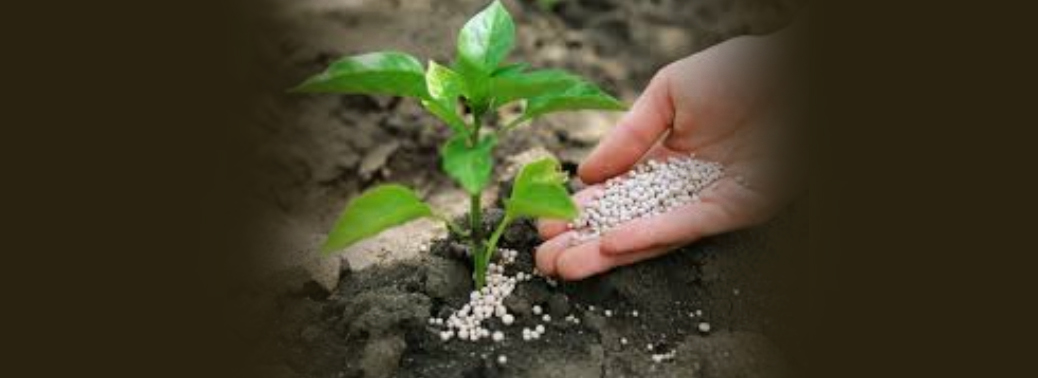
Context:
- The Cabinet Committee on Economic Affairs (CCEA), gave its nod for raising the subsidized prices of sulphur-based fertilizers.
Purpose:
- The move is aimed at discouraging rampant use of nitrogen-phosphorous-potassium (NPK) fertilizers, which impacts soil quality.
Sulphur fertilizer contains:
- Sulphur: Amino acids, vitamins. Imparts dark green color.
- Stimulates seed production.
Fertilizer Basics:
- 15 of the essential nutrients are supplied by the soil to plants. Out of them, Nitrogen, Phosphorus and Potassium are called primary nutrients or macronutrients.
- Three more elements viz. Calcium, Magnesium and Sulphur are known as secondary nutrients because the deficiency of them is less likely to be a growth limiting factor. Calcium and Magnesium are generally added to soil to adjust soil pH.
- Sulphur generally gets added to soil via rain and release from organic matter in soil.
Indiscriminate use of Fertilizers in India:
- Indiscriminate use of synthetic fertilizers can result in soil contamination by heavy metals; reduction in the nutritional value of crops, reduction in soil fertility etc.
- Fertilizers contaminate the soil with impurities, which come from the raw materials used for their manufacture.
- Over use of NPK fertilizers reduce quantity of vegetables and crops grown on soil over the years.
- It also reduces the protein content of wheat, maize, grams, etc., grown on that soil.
- The carbohydrate quality of such crops also gets degraded.
- Excess potassium content in soil decreases Vitamin C and carotene content in vegetables and fruits.
- The vegetables and fruits grown on overfertilized soil are more prone to attacks by insects and disease.
What are the major issues of Fertilizer Subsidies?
- The objective of the government is to support the farmers but the question is exactly how much of that really goes to the pocket of the farmers and how much is siphoned by the companies.
- It has been debated that the beneficiaries have been the large farmers and not small & marginal farmers.
- While deciding on the subsidy regime, it has to be kept in mind that Urea accounts for almost 50 per cent of fertiliser application and India is NOT self-sufficient in Urea production. At the same time, distorted subsidy regime may deplete the NPK use ratio. The normally accepted ratio is 4:2:1.
ZERO BUDGET NATURAL FARMING
28, Jul 2019
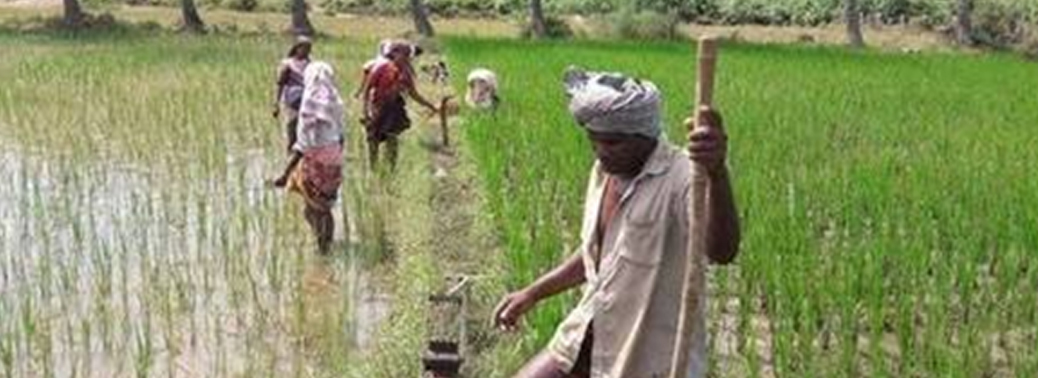
Why in News:
- Finance Minister in her budget speech referred to “back to basics “approach while speaking about Zero Budget Natural Farming.
What is Zero Budget Natural Farming?
- Zero budget natural farming (ZBNF) is a method of chemical-free agriculture drawing from traditional Indian practices.
- It was originally promoted by Maharashtrian agriculturist and Padma Shri recipient Subhash Palekar, who developed it in the mid-1990s as an alternative to the Green Revolution’s methods driven by chemical fertilizers and pesticides and intensive irrigation.
- It is argued that the rising cost of the external inputs was a leading cause of indebtedness and suicide among farmers, while the impact of chemicals on the environment and on long-term fertility was devastating.
- Without the need to spend money on these inputs — or take loans to buy them — the cost of production could be reduced and farming made into a “zero budget” exercise, breaking the debt cycle for many small farmers.
- Instead of commercially produced chemical inputs, the ZBNF promotes the application of jeevamrutha — a mixture of fresh desi cow dung and aged desi cow urine, jaggery, pulse flour, water and soil — on farmland. This is a fermented microbial culture that adds nutrients to the soil, and acts as a catalytic agent to promote the activity of microorganisms and earthworms in the soil.
- A similar mixture, called bijamrita, is used to treat seeds, while concoctions using neem leaves and pulp, tobacco and green chillis are prepared for insect and pest management.
- The ZBNF method also promotes soil aeration, minimal watering, intercropping, bunds and topsoil mulching and discourages intensive irrigation and deep ploughing.
Why does it Matter?
- According to National Sample Survey Office (NSSO) data, almost 70% of agricultural households spend more than they earn and more than half of all farmers are in debt.
- In States such as Andhra Pradesh and Telangana, levels of indebtedness are around 90%, where each household bears an average debt of ₹1 lakh.
- In order to double farmers income by 2022, one aspect being considered is natural farming methods such as the ZBNF which reduce farmers’ dependence on loans to purchase inputs they cannot afford. Meanwhile, inter-cropping allows for increased returns.
- The Economic Survey has also highlighted the ecological advantages.
Is it Effective?
- A limited 2017 study in Andhra Pradesh claimed a sharp decline in input costs and improvement in yields.
- However, reports also suggest that many farmers, have reverted to conventional farming after seeing their ZBNF returns drop after a few years, in turn raising doubts about the method’s efficacy in increasing farmers’ incomes.
- ZBNF critics, including some experts within the Central policy and planning think tank NITI Aayog, note that India needed the Green Revolution in order to become self-sufficient and ensure food security.
- They warn against a wholesale move away from that model without sufficient proof that yields will not be affected.
- Sikkim, which has seen some decline in yields following a conversion to organic farming, is used as a cautionary tale regarding the pitfalls of abandoning chemical fertilizers.
Which are the States with big plans?
- According to the Economic Survey, more than 1.6 lakh farmers are practising the ZBNF in almost 1,000 villages using some form of state support, although the method’s advocates claim more than 30 lakh practitioners overall.
- The original pioneer was Karnataka, where the ZBNF was adopted as a movement by a State farmers’ association. Large-scale training camps were organised to educate farmers in the method.
- In June 2018, Andhra Pradesh rolled out an ambitious plan to become India’s first State to practise 100% natural farming by 2024. It aims to phase out chemical farming over 80 lakh hectares of land, converting the State’s 60 lakh farmers to ZBNF methods.
- Himachal Pradesh, Chhattisgarh, Kerala, Karnataka and Uttarakhand have also invited Mr. Palekar to train their farmers.
Is the Budgetary Support Enough?
- Despite the ZBNF buzz caused by the Budget speech, the Finance Minister did not actually announce any new funding to promote it.
- Last year, the Centre revised the norms for the Rashtriya Krishi Vikas Yojana- Remunerative Approaches for Agriculture and Allied sector Rejuvenation (RKVY-RAFTAAR), a flagship Green Revolution scheme with an allocation of ₹3,745 crore this year, and the Paramparagat Krishi Vikas Yojana, which has an allocation of ₹325 crore and is meant to promote organic farming and soil health.
- Under the revised guidelines, both Centrally-sponsored schemes now allow States to use their funds to promote the ZBNF, vedic farming, natural farming, cow farming and a host of other traditional methods.
- Andhra Pradesh says it has utilised ₹249 crore from these schemes to promote the ZBNF over a two-and-a-half-year period.
- The State estimates it will need ₹17,000 crore to convert all of its 60 lakh farmers to the ZBNF over the next 10 years.
- However, this is only a fraction of the spending on Central government subsidies for fertilizers, pesticides and mass irrigation that has driven the Green Revolution model.
Way Ahead:
- NITI Aayog has been among the foremost promoters of ZBNF method.
- However, its experts have also warned that multi-location studies are needed to scientifically validate the long-term impact and viability of the model before it can be scaled up and promoted country-wide.
- The Indian Council of Agricultural Research is studying the ZBNF methods practised by basmati and wheat farmers in Modipuram (Uttar Pradesh), Ludhiana (Punjab), Pantnagar (Uttarakhand) and Kurukshetra (Haryana), evaluating the impact on productivity, economics and soil health including soil organic carbon and soil fertility.
- If found to be successful, an enabling institutional mechanism could be set up by NITI Aayog to promote the technology.
- The Andhra Pradesh experience is also being monitored closely to judge the need for further public funding support.
FAIR AND REMUNERATIVE PRICE’ OF SUGARCANE
25, Jul 2019

Why in News?
- The Cabinet Committee on Economic Affairs (CCEA) has approved the proposal in respect of Determination of ‘Fair and Remunerative Price’ of sugarcane payable by sugar mills to the cane growers.
- Price of sugarcane is fixed by the centre/State, while the price of sugar is market determined.
FRP:
- Fair and remunerative price (FRP) is the minimum price at which rate sugarcane is to be purchased by sugar mills from farmers.
- The FRP is based on the recommendation of the Commission of Agricultural Costs & Prices (CACP).
- The approval will ensure a guaranteed price to cane growers. The ‘FRP’ of sugarcane is determined under Sugarcane (Control) Order.
- This will be uniformly applicable all over the country. Determination of FRP will be in the interest of sugarcane growers keeping in view their entitlement to a fair and remunerative price for their produce.
- Fair and remunerative price (FRP) is the minimum price at which rate sugarcane is to be purchased by sugar mills from farmers.
Sugar buffer stock:
- The Cabinet has also approved the creation of buffer stock of 40 lakh Metric Tonnes of sugar for one year from the 1st of next month.
- The decision will lead to an improvement in the liquidity in sugar inventories and stabilization in sugar prices.
SAGARMALA PROJECT
15, Jul 2019

- The Sagarmala is a series of projects to leverage the country’s coastline and inland waterways to drive industrial development.
- It was originally mooted by the Vajpayee government in 2003 as the waterways equivalent of the Golden Quadrilateral.
- Sagarmala, integrated with the development of inland waterways, is expected to reduce cost and time for transporting goods, benefiting industries and export/import trade.
Four Broad Areas:
- 1. Modernise port infrastructure, add up to six new ports and enhance capacity.
- 2. Improve port connectivity through rail corridors, freight-friendly expressways and inland waterways.
- 3. Create 14 coastal economic zones or CEZs and a special economic zone at Jawaharlal Nehru Port Trust in Mumbai with manufacturing clusters to enable port-led industrialisation.
- 4. Develop skills of fishermen and other coastal and island communities.
Features:
- Supporting and enabling Port-led Development
- Port Infrastructure Enhancement, including modernization and setting up of new ports
- Efficient Evacuation to and from hinterland.
Why is it important?
- India is located along key international trade routes in the Indian Ocean and has a long coastline of over 7,000 km. Yet, capacity constraints and lack of modern facilities at Indian ports tremendously elongates the time taken to ship goods in and out of the country and has held back India’s share in world trade.
- Developing rivers as inland waterways can also help save domestic logistics costs too. Transport costs are high in India – 18 per cent of GDP, compared to less than 10 per cent in China.
- Port infrastructure and linkages have been frankly a sinking ship and initiatives such as Make in India cannot take off without better port infrastructure. This has led to expectations that Sagarmala could boost India’s merchandise exports to $110 billion by 2025 and create an estimated 10 million new jobs (four million in direct employment).
The Administrative Framework:
- National Sagarmala Apex Committee
- At apex level, a National Sagarmala Apex Committee (NSAC) will be created to provide overall policy guidance. It will be headed by shipping minister
- Sagarmala Development Company (SDC)
- Under Companies Act, 2013.
- This company will serve as a special purpose vehicle {SPV)
- Sagarmala Coordination and Steering Committee
- At national level, the government will constitute a Sagarmala Coordination and Steering Committee (SCSC) under Cabinet Secretary with Secretaries other ministeries
National Perspective Plan
- National Perspective Plan (NPP) for the entire coast of India integrating the Industrial Corridors, Dedicated Freight Corridors, National Highway Development Programme, Industrial Clusters and so on
- The coastal states have been suggested to set up State Sagarmala Committee to be headed by Chief Minister/Minister in Charge of Ports with members from relevant Departments and agencies.
KISAN SUVIDHA MOBILE APP
11, Jul 2019
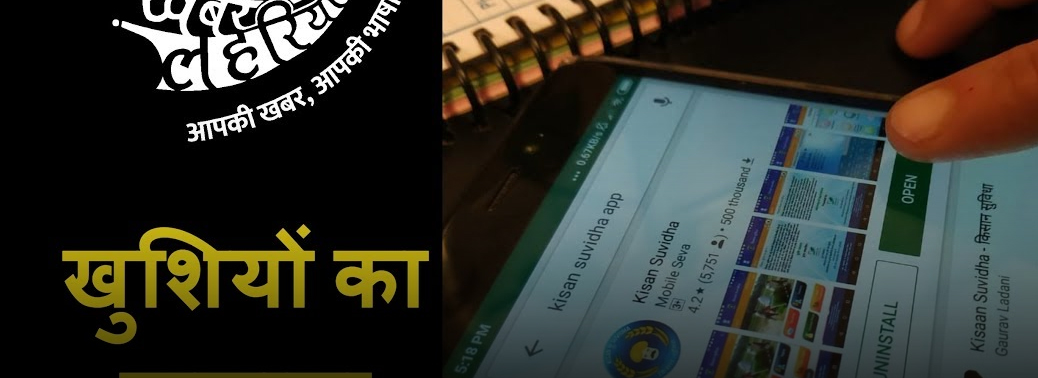
Why in News?
- Kisan Suvidha is an omnibus mobile app developed by Department of Agriculture & Cooperation, Ministry of Agriculture and Farmers Welfare to help farmers by providing relevant information to them quickly.
- The app is available in multiple Indian languages.
Facilities available on Kisan Suvida App:
- Weather – provides weather report for that day and weather forecast for next five days of a selected district. Extreme weather alerts are also provided.
- Dealers – Name, Mobile number and Address of the dealers of Seeds, Pesticides, Fertilizer and Farm Machinery are provided.
- Market Prices – information about rates of various crops in different mandies are provided.
- Plant Protection – Crop specific information related to pest management are provided. If the condition of crop is not normal, farmers can upload a picture/photo of the crop and send it through kisan suvidha app to agriculture experts for advice.
- Agro Advisories – Information from agriculture experts of districts regarding the advisories about activities to be undertaken and precaution to be taken staring from sowing to harvesting.
- Contact KCC – This option provides facility to speak to Kisan Call Centre (KCC).
- Soil Heath Card – option gives information about Soil Health Card, so that farmers can use fertilizer and pesticides judiciously having regard to minerals available in a particular land/farm.
- Cold Storage and gowdowns – information about warehouse and cold storage available in the district like warehouse / cold storage, name of manager, address, storage capacity and phone number etc are provided.
ETHANOL AND SUGAR MILLS
08, Jul 2019
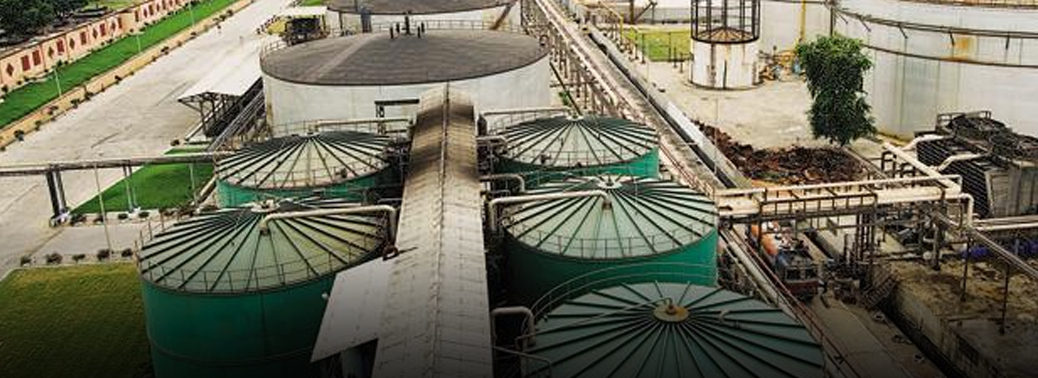
Context- Recently Union Minister for Road Transport & Highways exhorted sugar mills to switch to producing ethanol.
Issues:
- The surplus production of sugar is a major problem.
- It is not possible to reduce it, and it is also hard to change crop patterns.
- Sugar mills must decide whether they want to make sugar or ethanol from sugar cane juice. In Brazil, the price of sugar is ₹22 per kg while in India; we have fixed Rs 32-34 per Kg. Hence in the world market, nobody is willing to buy our sugar and as a result, we are making losses.”
Benefits:
- Would prove beneficial for tackling the problems stemming from surplus production and falling prices.
- Steady rise in ethanol blending is set not only to save import of crude oil thus saving of precious foreign currency reserves, but also encourage use of additional cane juice and other raw materials efficiently in addition to protect environment from release of motor vehicle obnoxious gas.
Maharashtra Sugar Mills:
- Maharashtra is slow in giving permission to sugar factories for converting sugar cane juice to ethanol and B class molasses to ethanol.
- As a result, a number of sugar factories could not start adopting this policy.
Ethanol Blended Petrol (EBP) Programme:
- The 5% mandatory ethanol blending with petrol
- The EBP Programme is presently being implemented in a total of 13 States with blending level of about 2% against a mandatory target of 5%.
- A stable EBP programme would ensure sustainable benefits for the sugarcane farmers across the nation. It will ensure an alternative market for the farmers who frequently get adversely affected in case of bumper crop of sugarcane and lack of its demand in the market. It will also provide an incentive to small and medium farmers to increase efforts towards sugarcane crop as better returns would be ensured.
COTTON CROP
08, Jul 2019
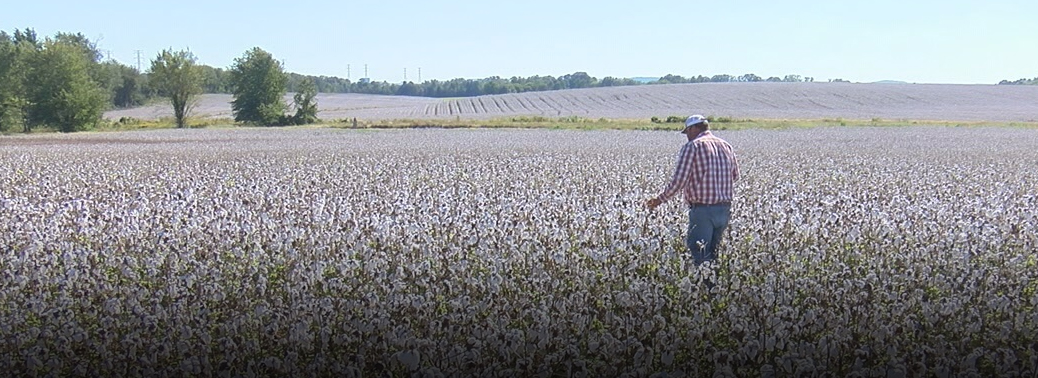
About
- It is Kharif Crop.
- The research system of India has also developed some varieties having three basic colours in naturally coloured cotton -brown, grey and green belong to Gossypium hirsutum and Gossypium arboreum species.
Condition for Growing Cotton:
- Long vegetation periods (175 to 225 days) without frost.
- Constant temperatures between 18 and 30°.
- Ample sunshine and fairly dry conditions.
- A minimum of 500 mm of water between germination and boll formation.
Deep, well-drained soils with a good nutrient content.
Benefits of Cotton:
- Edible oil for human consumption
- de-oiled cake as an animal feed
- Fabric Making Fibre.
- Cotton is the backbone of textile industry, which consumes 59 % of the country’s total fibre production.
Major Constraints in Cotton Production:
- Non availability of Canal Water at the optimum sowing time (North Zone)
- Salinity and Water logging in irrigated areas (North Zone)
- Acute Moisture stress during flowering and boll formation mainly in central and south zones.
- Cotton crop is highly prone to insect pests and diseases due to green succulent leaves, Long duration crop, Hot and humid weather, more fruiting bodies, Open flowers and soft Bolls.
- Inadequate efficient use of irrigation water through Micro irrigation devises.
Lack of awareness among the farmers about proper spraying of Pesticides / Bio pesticides. - Non availability of standardized package of practices of Bt. cotton and organic cotton cultivation
Pink Bollworm:
- The Pink Bollworm is an insect known for being a pest in cotton farming.
ZERO BUDGET NATURAL FARMING
07, Jul 2019
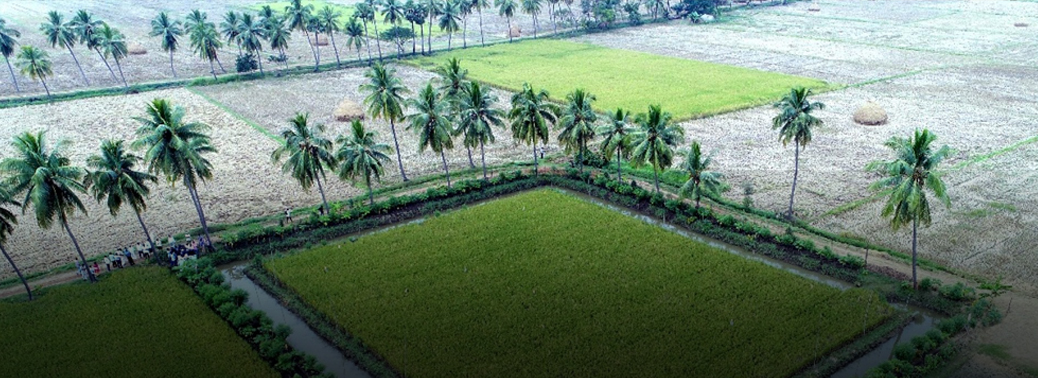
Why in News?
- The Finance Minister Nirmala Sitharaman announced a proposal of Zero Budget Natural Farming in budget 2019 for doubling farmer’s income in the country
Zero Budget Natural Farming:
- “Zero budget” stands for no production cost in farming and “Natural Farming” stands for doing farming without any aided chemical fertilizer or external seed and only using natural resources
- Aim to pull farmers out of the debt trap, cutting production cost and make small scale farming a viable option
- ZBNF involves no use of chemical fertilizers and assures zero credit for agriculture
- This type of farming was successfully initiated in Karnataka and was replicated as a role model in other states
- It cut down the farming expenditure and ends farmer’s reliance on loans
Highlights:
- Practice only natural growth of crops
- Bijamrita, Jiwamrita, Mulching and Waaphasa are the processes of ZBNF
- Intercropping of crops is one of the features of ZBNF
- The required materials are cow dung, cow urine, water, neem pulp, etc.
- The insects are removed by using neem pulp and chillies
KISAN CREDIT CARD SCHEME
06, Jul 2019
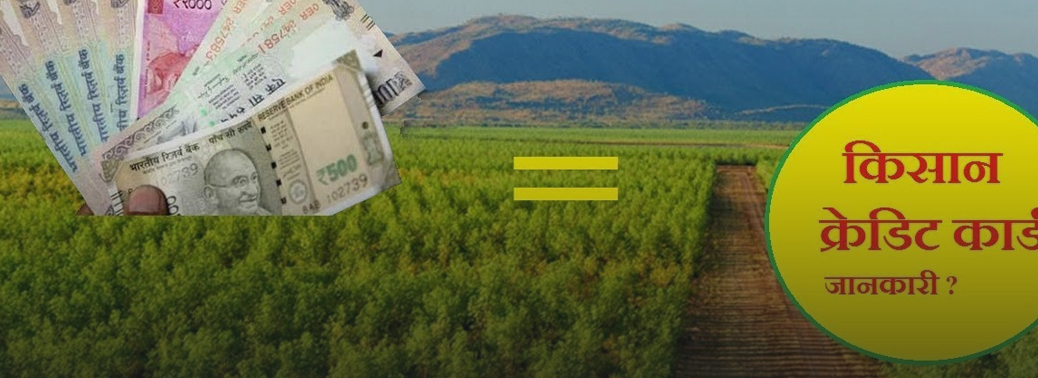
Why in News?
- The Government of India has extended the facility of Kisan Credit Card (KCC) to fisheries and animal husbandry farmers to help them meet their working capital needs.
Kisan Credit Card Scheme:
- The Kisan Credit Card (KCC) scheme was announced in the Budget speech of 1998-99 to fulfil the financial requirements of the farmers at various stages of farming through institutional credit.
- The model scheme was prepared by the National Bank for Agriculture and Rural Development (NABARD) on the recommendation of V Gupta committee.
- The KCC scheme is being implemented by the all Co-operative banks, Regional Rural Banks and Public Sector Banks throughout the country.
- Scheme covers risk of KCC holders against death or permanent disability resulting from accidents.
Objectives:
- To provide adequate and timely credit support from the banking system to the farmers at the cheap rate of interest.
- To provide credit at the time of requirement.
- To support post-harvest expenses.
- To provide Working capital for maintenance of farm assets and activities allied to agriculture.
- Investment credit requirement for agriculture and allied activities (land development, pump sets, plantation, drip irrigation etc.)
- Consumption requirements of farmers.
Salient features of the Scheme:
- Revolving cash credit facility involving any number of withdrawals and repayments within the limit.
- Limit to be fixed on the basis of operational land holding, cropping pattern and scale of finance.
- Card valid for 5 years subject to annual review. As an incentive for good performance, credit limits could be enhanced to take care of increase in costs, change in cropping pattern, etc.
- Conversion/reschedulement of loans also permissible in case of damage to crops due to natural calamities.
- Crop loans disbursed under KCC Scheme for notified crops are covered under Crop Insurance Scheme, to protect the interest of the farmers against loss of crop yield caused by natural calamities, pest attacks etc.
AGRICULTURAL EXPORT POLICY
06, Jul 2019
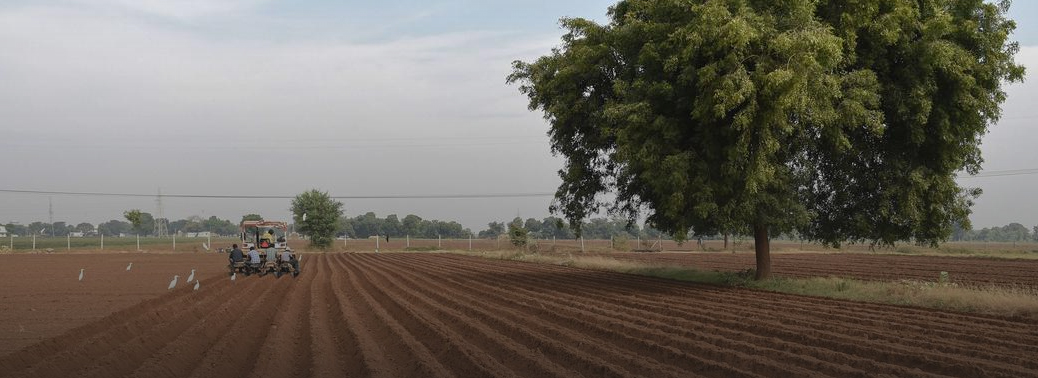
Why in News?
- The Union Cabinet approved the Agriculture Export Policy, 2018. The Cabinet has also approved the proposal for establishment of Monitoring Framework at Centre with Commerce as the nodal Department with representation from various line Ministries/Departments and Agencies and representatives of concerned State Governments, to oversee the implementation of Agriculture Export Policy.
Highlights:
- The Government has come out with a Policy to Double Farmers’ Income by 2022. Exports of agricultural products would play a pivotal role in achieving this goal. In order to provide an impetus to agricultural exports, the Government has come out with a comprehensive “Agriculture Export Policy” aimed at doubling the agricultural exports and integrating Indian farmers and agricultural products with the global value chains.
- The Agriculture Export Policy has the following vision: “Harness export potential of Indian agriculture, through suitable policy instruments, to make India global power in agriculture and raise farmers’ income.”
Objective of the Agriculture Export Policy:
- To double agricultural exports from present ~US$ 30+ Billion to ~US$ 60+ Billion by 2022 and reach US$ 100 Billion in the next few years thereafter, with a stable trade policy regime.
- To diversify our export basket, destinations and boost high value- and value-added agricultural exports including focus on perishables.
- To promote novel, indigenous, organic, ethnic, traditional and non-traditional Agri products exports.
- To provide an institutional mechanism for pursuing market access, tackling barriers and deal with sanitary and Phyto-sanitary issues.
- To strive to double India’s share in world agri exports by integrating with global value chain at the earliest.
- Enable farmers to get benefit of export opportunities in overseas market.
Elements of Agricultural Export Policy:
Strategic Policy Measure:
- 1. Infrastructure and logistics support
- 2. Holistic approach to boost exports
- 3. Greater involvement of State Governments in agri exports
Operational Policy Measure:
- 1. Focus on Clusters
- 2. Promoting value-added exports
- 3. Marketing and promotion of “Brand India
- 4. Attract private investments into production and processing
- 5. Establishment of strong quality regimen
- 6. Research & Development
- 7. Miscellaneous
Minimum Support Price
04, Jul 2019
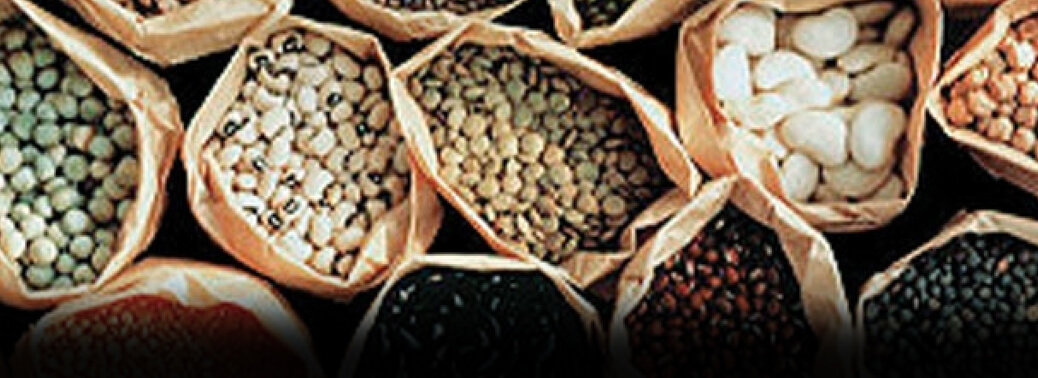
Context:
Recently cabinet has announced MSP for 14 Kharif crops
What is MSP?
- Minimum Support Price (MSP) is a form of Market Intervention by the Government of India to insure agricultural producers against any sharp fall in farm prices.
- The MSP is announced by the Government of India at the Beginning of the Sowing Season for certain crops on the basis of the recommendations of the Commission for Agricultural Costs and Prices (CACP).
- MSP is a Guarantee Price for their produce from the Government.
- The major objectives are to Support the Farmers from Distress Sales and to Procure Food Grains for Public Distribution.
- In case the market price for the commodity falls below the announced minimum price due to bumper production and glut in the market, government agencies purchase the entire quantity offered by the farmers at the announced minimum price.
Factors Determining the MSP:
- Cost of production
- Changes in input prices
- Input-output price parity
- Trends in market prices
- Demand and supply
- Inter-crop price parity
- Effect on industrial cost structure
- Effect on cost of living
- Effect on general price level
- International price situation
- Parity between prices paid and prices received by the farmers.
- Effect on issue prices and implications for subsidy.
AGRICULTURAL & PROCESSED FOOD PRODUCTS EXPORT DEVELOPMENT AUTHORITY (APEDA)
27, Jun 2019
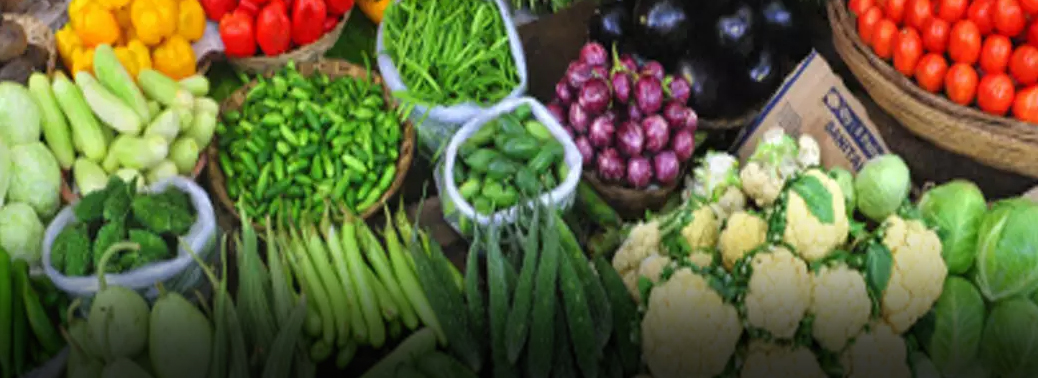
Why in News?
- Agricultural & Processed Food Products Export Development Authority (APEDA)in association with North Eastern Regional Agricultural Marketing Corporation (NERAMAC) organised the second Conference cum International Buyers-Sellers Meet in Imphal, Manipur.
APEDA:
- APEDA, under the Ministry of Commerce and Industries, promotes export of Agricultural and processed food products from India.
- To promote export of agricultural products from NER, APEDA has been organising various buyers- sellers meets to facilitate market linkages of the exporters with international buyers.
- The first international buyers – sellers meet for NER was organized by APEDA in Guwahati in March this year.
- APEDA is conducting regular promotional activities in the area of agriculture exports. It provides support to exporters to set up infrastructure like pack houses and cold storages.
- APEDA also helps exporters to exhibit their products in several national and international expos and exhibitions.
- The Imphal event of international buyers – sellers meet is part of the initiative of APEDA to bring the North-Eastern states of India on the export map of the country.
Technological Intervention in Agriculture
24, Jun 2019
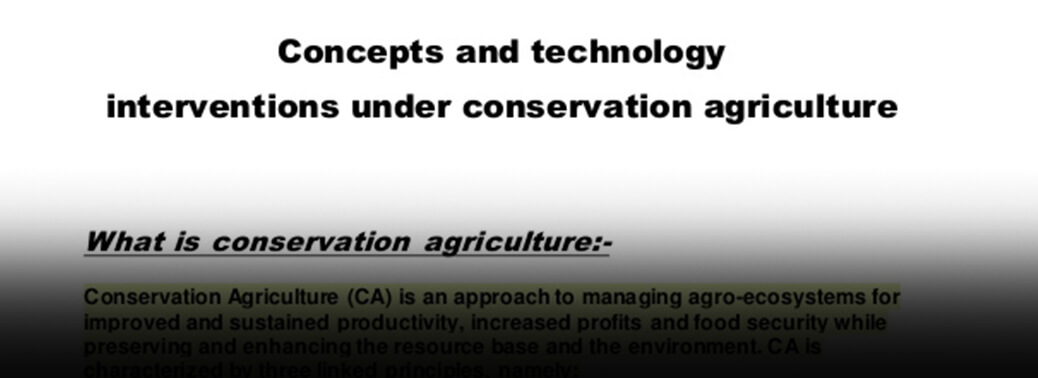
- Kisan Suvidha Mobile Application: To facilitate dissemination of information to farmers on the critical parameters viz., Weather; Market Prices; Plant Protection; input Dealers (Seed, Pesticide, Fertilizer) Farm Machinery; Soil Health Card; Cold Storages & Godowns, Veterinary Centres and Diagnostic Labs.
- Indian Council of Agriculture Research (ICAR) Mobile Apps: It has compiled more than 100 mobile apps developed by ICAR, State Agricultural Universities and Krishi Vigyan Kendras. These mobile apps developed in the areas of crops, horticulture, veterinary, dairy, poultry, fisheries, natural resources management and integrated subjects, offer valuable information to the farmers, including package of practices, market prices of various commodities, weather related information, advisory services, etc.
- Development of mKisan Portal for sending advisories on various crop related matter to the registered farmers through SMSs.
- Launching of e-National Agriculture Market initiative to provide farmers an electronic online trading platform.
- Implementation of Agricultural Marketing Infrastructure, sub-scheme of Integrated Scheme of Agricultural Marketing, in order to improve/create scientific storage capacity for storing farm produce, processed farm produce and to reduce post-harvest storage loss. Introduction of Soil Health Card Scheme to assist State Governments in providing Soil Health Cards to all farmers across the country once in a cycle of 2 years Soil health card provides information to the farmers on nutrient status of their soil along with recommendations on appropriate dosage of nutrients to be applied for improving crop productivity and soil fertility.
- Providing subsidies under National Food Security Mission (Oil Seeds and Oil Palm) to farmers on seed components, transfer of technologies, production inputs and water carrying devices. Financial assistance is also being provided under this scheme for block demonstration, frontline demonstration, farmers training to educate farmers to adopt modern techniques of farming to yield good crop economically.
- Use of space technology for various programmes/ areas such as Forecasting Agricultural Output using Space, Agro-meteorology and Land-based Observations project, Coordinated programme on Horticulture Assessment and Management using geo- informatics project, National Agricultural Drought Assessment and Monitoring System, Rice-Fallow Area Mapping and intensification, geo tagging of infrastructure and assets created under Rashtriya Krishi Vikas Yojana, and Crop Insurance.
- Using machine learning process along with different computer algorithm for crop classification and area estimation.
Organic Farming in India
24, Jun 2019
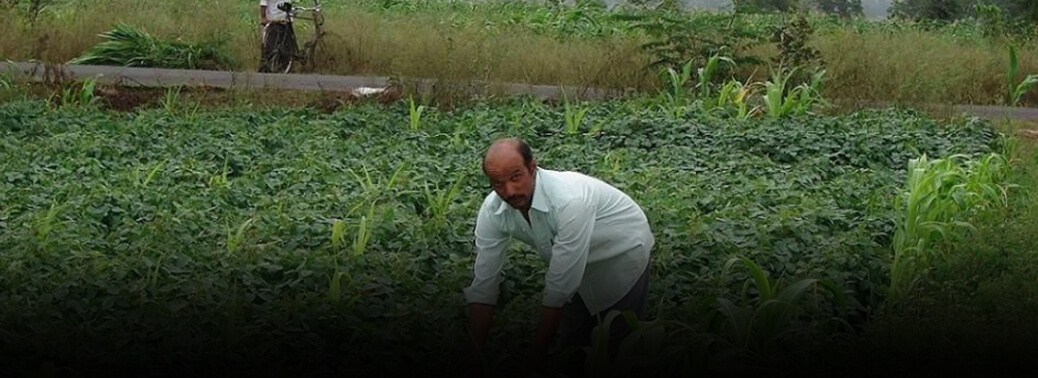
Why in News?
- Government of India has been promoting organic farming under two dedicated schemes namely Mission Organic Value Chain Development North Eastern Region (MOVCDNER) and Parampragat Krishi Vikas Yojana (PKVY) since 2015 through State Governments.
Organic Farming in India:
- Under these schemes, support has been provided for formation of farmers’ clusters/ Farmer Producer Organisation; incentives to farmers for input procurement, value addition including post-harvest infrastructure creation, packaging, branding, publicity, transportation, organic fairs etc..
- Organic Farming has also been supported under other schemes viz Rashtriya Krishi Vikas Yojana (RKVY) and Mission for Integrated Development of Horticulture (MIDH), Network Project on Organic Farming under ICAR.
- Third party certification of organic farming is promoted by Agriculture Processed Food and Export Development Authority (APEDA), Ministry of Commerce.
Mission Organic Value Chain Development for North East Region:
- Mission Organic Value Chain Development for North East Region (MOVCD-NER) is a Central Sector Scheme, a sub-mission under National Mission for Sustainable Agriculture (NMSA), launched by the Ministry of Agriculture and Farmers Welfare for implementation in the states of Arunachal Pradesh, Assam, Manipur, Meghalaya, Mizoram, Nagaland, Sikkim and Tripura, during the 12th plan period.
- The scheme aims development of certified organic production in a value chain mode to link growers with consumers and to support the development of entire value chain starting from inputs, seeds, certification, to the creation of facilities for collection, aggregation, processing, marketing and brand building initiative.
Paramparagat Krishi Vikas Yojana:
- Paramparagat Krishi Vikas Yojana is an elaborated component of Soil Health Management (SHM) of major project National Mission of Sustainable Agriculture (NMSA).
- Under PKVY Organic farming is promoted through adoption of organic village by cluster approach and PGS certification.
Scheme Envisages:
- Promotion of commercial organic production through certified organic farming.
- The produce will be pesticide residue free and will contribute to improve the health of consumer.
- It will raise farmer’s income and create potential market for traders.
- It will motivate the farmers for natural resource mobilization for input production.
INDIA HAS OVERLY RESTRICTIVE MARKET BARRIERS
08, May 2019

Why in News:
- U.S. is India’s largest export destination, India is only the 13th largest for the U.S. due to “overly restrictive market access barriers.Tariff and non-tariff barriers, multiple regulations put foreign firms at disadvantage
Details:
- India is already the world’s third largest economy, and by 2030, it will become the world’s largest consumer market because of the rapid growth of the middle class, India is only the U.S.’s 13th largest export market, due to overly restrictive market access barriers,”
- Meanwhile, the U.S. is India’s largest export market, accounting for something like 20% of the total. There is a real imbalance.”
- while American technology and expertise can play an important role to meet India’s
- developmental needs, U.S. companies faced significant market access barriers in India. These include both tariff and non-tariff barriers, as well as multiple practices and regulations that disadvantage foreign companies,”
- India’s average applied tariff rate of 13.8%, and that remains the highest of any major world economy
- goal is to eliminate barriers to U.S. companies, operating here, including data-localisation restrictions that actually weaken data security and increase the cost of doing business,
Price controls’
- “Other obstacles include price controls on medical devices and pharmaceuticals, and
- restrictive tariffs on electronics and telecommunications products
- U.S. would not be able to sell oil to India at lower rates because oil is owned by private players and the U.S. government would not be able to force them to offer concessionary rates.
Tariff or customs duty
- A tariff or customs duty is a financial charge in the form of a tax, imposed at the border on goods going from one customs territory to another.
- Tariffs applied to imports are usually collected by customs officials of the importing country when goods are cleared through customs for domestic consumption.
- Tariffs can also be imposed on exports also but the import tariffs are the most common type of tariffs and have been the main focus of attention of GATT/WTO negotiations.
Impact of Tariffs
- There are two main purpose of imposing tariffs by the Governments. To protect their domestic industries from the competition of imports. To collect revenue.
PEPSICO Proposes settlement to Potato farmers whom they SUED
27, Apr 2019

Why in News?
- Food and beverages giant PepsiCo on Friday offered to settle lawsuits against four farmers who it had dragged to court for allegedly illegally growing a variety of potatoes “registered” by the company.
Details:
- Nine farmers from Sabarkantha and Aravalli districts are being sued by PepsiCo for allegedly growing a variety of potatoes for which it has claimed Plant Variety Protection rights.
- During a hearing in the commercial court in Ahmedabad, the firm offered to settle the dispute if the farmers gave an undertaking to purchase this specific variety of seeds from the company and thereafter sell the potato produced to
- The multinational giant has sought damages of Rs 1 crore from each of the four farmers in its suit filed at the commercial court in Ahmedabad, and Rs 20 lakh from each of the farmers sued at a district court in Modasa town of Arvalli
- Over 190 activists came out in support of these farmers requesting the Union government
- to ask PepsiCo India to withdraw its “false” cases against Gujarat farmers.
- In a letter to the Ministry of Agriculture, the 194 signatories sought financial aid and protection of rights of farmers who have been sued for growing and selling a potato variety called FC-5 potato, for which PepsiCo India Holdings
- claimed to have obtained “exclusive rights in the country in 2016”.
The Protection of Plant Varieties and Farmers’ Rights (PPV&FR) Act, 2001:
- Enacted by India in 2001 adopting sui generis It is in conformity with International Union for the Protection of New Varieties of Plants (UPOV), 1978.
- The legislation recognizes the contributions of both commercial plant breeders and farmers in plant breeding activity and also provides to implement TRIPs in a way that supports the specific socio-economic interests of all the stakeholders including private, public sectors and research institutions, as well as resource-constrained
Objectives of the PPV & FR Act, 2001:
- To establish an effective system for the protection of plant varieties, the rights of farmers and plant breeders and to encourage the development of new varieties of
- To recognize and protect the rights of farmers in respect of their contributions made at any time in conserving, improving and making available plant genetic resources for the development of new plant
GI tag for Coorg Arabica Coffee, four others
30, Mar 2019
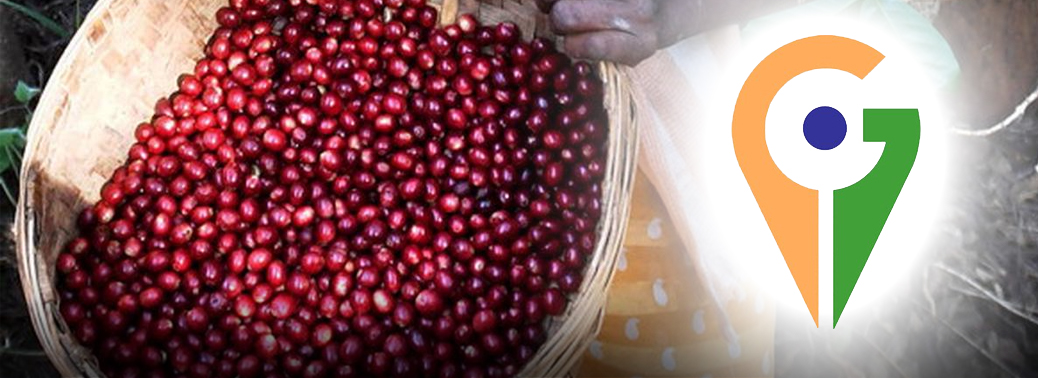
The Geographical Indications Registry has granted the Geographical Indication (GI) tag to
Coorg Arabica Coffee,
Wayanad Robusta Coffee,
Chikmagalur Arabica Coffee,
Araku Valley Arabica Coffee and
Bababudangiris Arabica Coffee.
The GI was granted
According to the GI application, Coorg Arabica Coffee is grown specifically in Kodagu district in Karnataka.
As per the GI application for Wayanad Robusta Coffee, the flora of Wayanad is characteristic of the Western Ghats and the plantation crops grown in the cool climate.
Coffee based farming system is a notable feature of Wayanad. Coffee is grown both as pure crop and as mixed crop along with pepper. Wayanad produces almost around 90% of the state’s Coffee produce which literally concludes that the coffee economy of Kerala is highly correlated with the coffee economy existing in Wayanad. Robusta coffee produce is more than 95% of the total coffee cultivation done in Wayanad.
Chikmagalur Arabica Coffee and Bababudangiris Arabica Coffee are both grown in Chikmagalur district, Karnataka which is also known as the birthplace of coffee in the country, as per the application petitions.
Coffee production in India
It is dominated in the hill tracts of South Indian states, with Karnataka accounting for 71%, followed by Kerala with 21% and Tamil Nadu (5% of overall production with 8,200 tonnes).
Indian coffee is said to be the finest coffee grown in the shade rather than direct sunlight anywhere in the world.
As of 2018, Indian coffee made up just 4.5% of the global production. Almost 80% of Indian coffee is exported; 70% is bound for Germany, Russia, Spain, Belgium, Slovenia, United States, Japan, Greece, Netherlands and France. Italy accounts for 29% of the exports. Most of the export is shipped through the Suez Canal.
Coffee is grown in three regions of India with Karnataka, Kerala and Tamil Nadu forming the traditional coffee growing region, followed by the new areas developed in the non-traditional areas of Andhra Pradesh and Orissa in the eastern coast of the country and with a third region comprising the states of Assam, Manipur, Meghalaya, Mizoram, Tripura, Nagaland and Arunachal Pradesh of Northeastern India, popularly known as “Seven Sister States of India.
GI Tag:
- Geographical Indication is a genre of Intellectual Property.
- GI tag is an insignia on products having a unique geographical origin and evolution over centuries with regards to its special quality or reputation attributes.
- The status to the products marks its authenticity and ensures that registered authorised users are allowed to use the popular product name.
- These could be naturally grown crops like Assam Chilies or manufactured products like Jaipur Pottery.
- GI tags are given on the basis of the Geographical Indications of Goods (Registration and Protection) Act, 1999.
- The registration of GI is valid for 10 years after which it needs to be renewed.
- Violation of GI tags is punishable offence under law.
Blockchain enabled marketplace app for coffee
30, Mar 2019
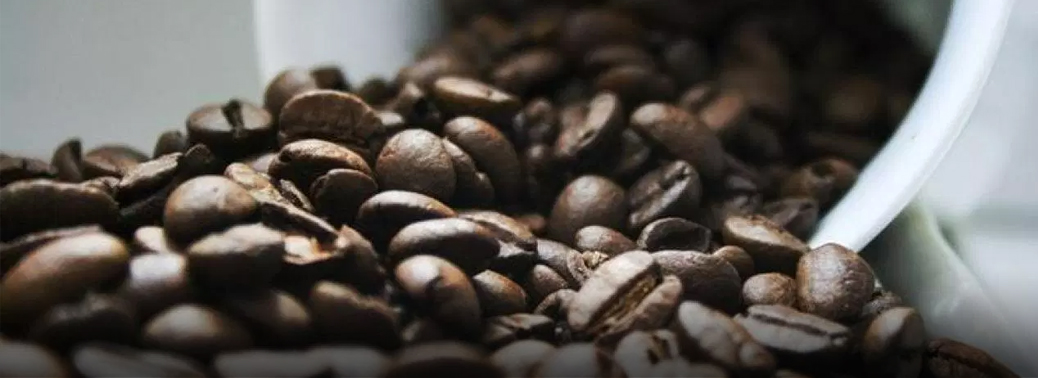
The commerce ministry Thursday launched a Blockchain based coffee e-marketplace to help farmers integrate with markets so that they can realise fair prices for the commodity.
The app is intended to bring in transparency in coffee trade and maintain the traceability of Indian coffee from bean to cup so as the consumer tastes real Indian coffee and the grower is paid fairly for his produce
The blockchain will also reduce the number of layers between coffee growers and buyers and help farmers increase their income
Anyone willing to participate in the marketplace will have to register on the app and will get a smart contract number. But, the pilot project has about 20 participants, including 14 coffee growers, and will run for four-to-six months.
India is the only country in the world where entire coffee is grown under shade, handpicked and sun dried.
About Blockchain:
- A blockchain is a database (is a growing list of records) that is shared across a network of computers. Once a record has been added to the chain it is very difficult to change. To ensure all the copies of the database are the same, the network makes constant checks.
- The idea was described in 1991 by Stuart Haber and W. Scott Stornetta.
- Unlike traditional ledgers, a blockchain database is decentralized and has no “master.”
There is a lot of hype about blockchain, but some promising uses are under development.
• When information is to be stored, the record lists the details, including a digital signature from each party.
• The accepted records are added to a block. Each block contains a unique code called a hash. It also contains the hash of the previous block in the chain.
• The block is added to the blockchain. The hash codes connect the blocks together in a specific order.
• Any change to the original input will generate a new hash. The changed hash breaks the chain.
• Cryptocurrency: Blockchains are the basis of bitcoin and other cryptocurrencies.
• Banking: Financial institutions have been investing in blockchains to simplify their record-keeping for payments.
• Supply chain: Recording trades on a blockchain offers a way to check the history of a product.
• Property records: Storing land records on a blockchain could cut down on costly title research and increase transparency
• Voting: Blockchain records could create tamper-proof election returns.
• Healthcare: With blockchain, medical history could be securely stored and controlled by patients.
India Eyes Alternative Markets For Exporting Tea Meant To Be Shipped To Pak
02, Mar 2019

In News:
- Amid the ongoing tensions between India and Pakistan, and India’s withdrawal of the most favoured nation (MFN) status to Pakistan, tea exporters and producers are looking at alternative markets such as the Commonwealth of Independent States (CIS) nations and West Asian countries to sell their produce.
Explained:
- Usually, Pakistan buys average quality tea from India, comprising mostly of dust and fanning, priced around $1.45 a kilo. Besides, tea is also routed to Pakistan via Dubai.
- The type of tea that goes to Pakistan can be routed and sold in Egypt, Russia, Kazakhstan, Ukraine and other east European nations.
- Exporters are unsure how Indo-Pak relations will play up in the near term, which might affect the payments from the sales.
CIS:
- The Commonwealth of Independent States (CIS) is a regional intergovernmental organization focused on cooperation on political, economic, environmental, humanitarian, cultural and other issues between a number of former Soviet Republics.
- On December 8, 1991 in Minsk the Agreement on the Establishment of the Commonwealth of Independent States was signed by the heads of Belarus, Russia and Ukraine. According to the CIS Charter, the Council of the Heads of State is the supreme body of the Commonwealth, which discusses and resolves fundamental issues related to the activities of member states in the field of their common interests.
- Meetings of the Council of the Heads of Government, the Council of Ministers of Foreign Affairs and the Economic Council of the CIS are also held on a regular basis to discuss issues of interstate cooperation within the framework of the CIS.
Membership:
- 12 States — Armenia, Azerbaijan, Belarus, Georgia, Kazakhstan, Kyrgyzstan, Moldova, Russia, Tajikistan, Turkmenistan, Ukraine, and Uzbekistan.
Farm SOP will be hard to implement
19, Feb 2019
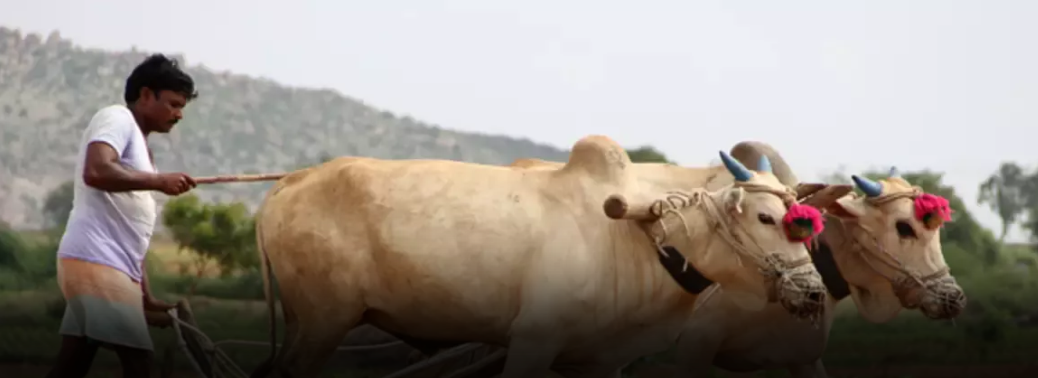
- The Pradhan Mantri Kisan Samman Nidhi scheme, announced in the Budget earlier this month, aims to give Rs. 6,000 a year to 12 crore farmer families who own up to two hectares of cultivable land.
What are the challenges?
- The number of beneficiaries comes from the number of land holdings of two hectares or less, according to the last agricultural land census. However, the guidelines say a single family may hold multiple land parcels, which will be pooled to determine their eligibility for the benefit. Similarly, even landholdings bigger than two hectares, if owned by multiple families, will make them eligible for the scheme.
- For example, if five brothers jointly own a single 10 hectare holding, each of them will be eligible for the scheme. However, if the members of a single-family unit each own three one-hectare holdings, they will not be eligible. It will be difficult to use existing land records to determine beneficiaries. “Land records are held individually.
- How do you know which family holds how much land?” For the purposes of this scheme, family units are being defined as a husband, wife and minor children. Local administrations are more familiar with the unit of the household — which is used by most other government surveys and schemes — defined as a group living together and eating meals from a common kitchen.
What is the status of land records?
- States have been implementing the Digital India Land Records Modernisation Programme for more than a decade. While several States claim to have completed computerisation of their land records, others have not even begun the process. However, digitisation does not mean the data have been updated. Experts say many land records are updated only when the land is sold and only if the transaction is legally registered. Inherited land may still be registered in a parent or grandparent’s name.
- Multiple government departments hold the documents required to establish land ownership — the Registration Department maintains sale deeds, but maps are kept by the Survey Department, while the Revenue Department keeps property tax receipts. Verifying ownership claims is thus a daunting task. States have been asked to overhaul their land databases immediately in preparation for the scheme, which aims to pay out its first instalment of Rs. 2,000 by March 31, before the Lok Sabha election.
What happened in Telangana?
- However, the example of Telangana shows this may be an unrealistic time line. Despite an advanced state of progress in digitisation, the State took over three months to update its databases before implementing its own farmer income support scheme before its Assembly election last year.
- Since its payout was given per acre owned, rather than per family unit, it was a simpler process to identify beneficiaries on the basis of land records. Yet, researchers say almost 10 lakh beneficiaries — of a total 54 lakh — were left out of the initial instalment, as the State scrambled to update records.
What about community farmers?
The scheme notes that land ownership rights are community-based in many northeastern States and promises that an alternative method of beneficiary identification will be developed.. However, many Adivasi communities in other States also cultivate land without individual rights, and may be left out of the scheme, although they are among the most vulnerable. Tenant farmers are also not included in the scheme, as they do not own the land they cultivate. With tenancy being as high as 60% in some areas, this could lead to resentment if absentee landlords receive benefits under the scheme.
Is payment infrastructure in place?
- The government intends to pay beneficiaries through a direct transfer to their bank accounts. From the second instalment, Aadhaar numbers will be compulsory to access benefits. Previous welfare schemes requiring Aadhaar verification have faced significant hurdles in some rural areas.
US Canada move WTO Against India on ‘UNDER REPORTING’ of MSP for Five Pulses
16, Feb 2019
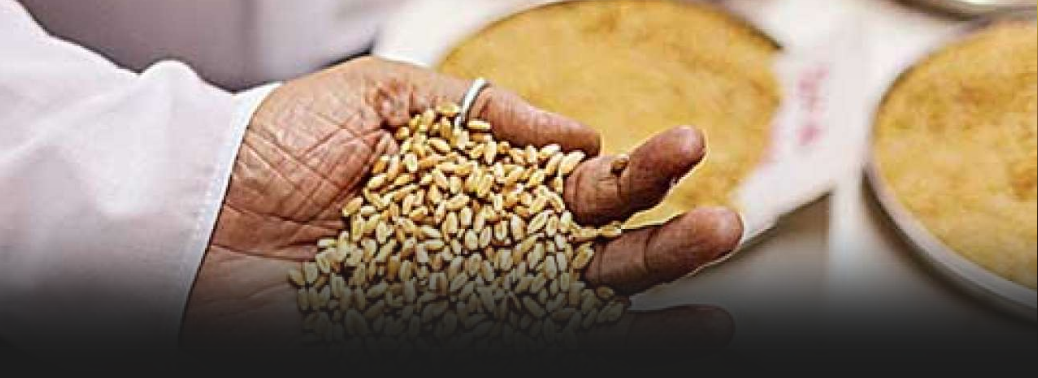
In News:
- The US and Canada on Friday said they have jointly approached the World Trade Organisation (WTO) against India for allegedly “under-reporting” market price support for five varieties of pulses and have submitted their own steeper calculations for scrutiny of members.
Explained:
- The two countries have taken issue with the quantity of production used in market price support calculations, the lack of information necessary to assess WTO compliance, problems with currency conversions and the prices used in the calculations.
- When calculated according to WTO Agreement on Agriculture methodology, India’s market price support for each of these pulses far exceeded its allowable levels of trade-distorting domestic support.Based on the United States/Canadian calculations, it appears that India has substantially underreported its market price support for chickpeas, pigeon peas, black matpe, mung beans and lentils
Govt. Subsidy Spend on the rise Again
06, Feb 2019

In News:
- Rising LPG prices and higher subscribers have resulted in the government’s subsidy expenditure over the last two years reversing a declining trend established in the previous six years, an analysis of Budget documents shows.
Explained:
- The data show that the government’s total expenditure on subsidies is expected to make up 9.83% of its total expenditure overall in 2019-20, according to the Budget estimate for the year, up from the 9.65% in the revised estimate for 2018-19.
- This increase might not seem significant by itself, but it becomes noteworthy when viewed against the backdrop of a consistent annual fall from 18.2% in 2012-13 to 8.15% in 2017-18.
Reason for the Rise:
- The sharp rise in food and petroleum subsidies over the last two budgets of 2018-19 and 2019-20. And also because of the increase in the Minimum Support Prices hiked across the board, the reason behind the increase in the petroleum subsidy has to do in particular with the government’s focus on LPG as a source of cleaner cooking fuel.
- The reason for the increase in the petroleum subsidy is because of an increased allocation for the Direct Benefit Transfer scheme for LPG,
- Because, LPG prices have been rising, and the number of subscribers has been increasing, so the subsidy amount will naturally increase.
- The price of an unsubsidised cylinder was Rs. 809.50 in December, which means the subsidy was Rs. 308 a cylinder. And the Centre subsidises 12 cylinders a year per customer. The government has two major schemes in the LPG sector. PAHAL scheme, the first, involves direct cash transfers to LPG consumers for 12 numbers of 14.2 kg cylinders per year. The second scheme, the Ujjwala Yojana, seeks to give free LPG connections to poor In terms of consumption, data with the Petroleum Planning and Analysis Cell show that LPG consumption has grown in tandem with the launch of the PAHAL scheme. While LPG consumption grew 1.6% and 4.4% in 2012-13 and 2013-14, respectively, the growth averaged 9.4% in the years since the scheme was launched in 2013.
- Food subsidies increased to Rs. 1,71,298 crores in 2018-19, up a whopping 70.8% over its allocation in the previous year.
- Similarly, petroleum subsidies have been budgeted to increase a significant 50.9% in 2019-20 to Rs. 37,478 crores.
PAHAL Scheme:
- PaHaL (Pratyaksha Hastaantarit Laabh) is the abbreviated alternate Hindi name for the Direct Benefit Transfer (DBT) Scheme existing in India for the direct cash transfer of subsidy for Liquefied Petroleum Gas (LPG) used in household cooking.
- As the name suggests, LPG consumers who join the PaHaL scheme will get their LPG cylinders at market price and receive LPG subsidy, as per their entitlement, directly into their bank accounts
- Launched by ministry of petroleum and natural gas
Ujjwala Yojana:
- Under the scheme, five crore LPG connections are to be provided to BPL households. The identification of eligible BPL families will be made in consultation with the State Governments and the Union Territories. BPL is a person/ household who suffers from at least one deprivation under the Socio-Economic Caste census (SECC) – 2011 Database. Under the scheme, five crore LPG connections are to be provided to BPL households. The Scheme provides a financial support of Rs 1600 for each LPG connection to the BPL households, interest free loan to purchase stove and refill by Oil Marketing Companies.
- The administrative cost of Rs. 1600 per connection, which includes a cylinder, pressure regulator, booklet, safety hose, etc. would be borne by the Government
- Launched by Ministry of Petroleum and Natural Gas (MoP&NG)
Agri Sector Should be boosted through Credit flows
26, Jan 2019
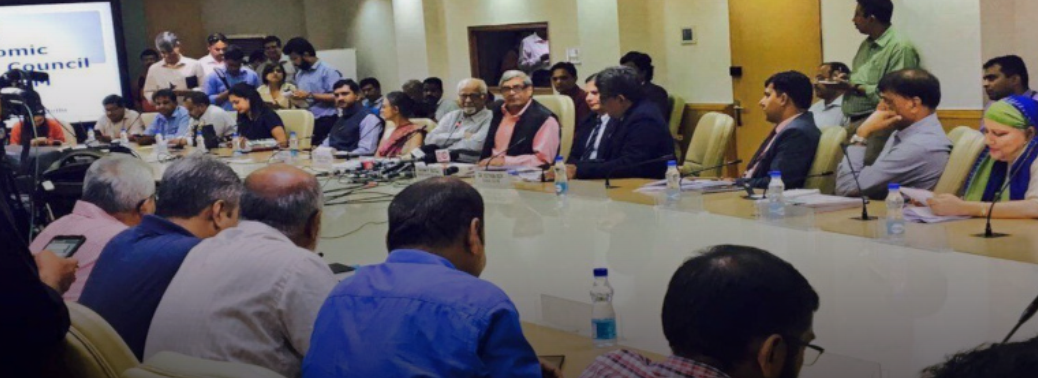
In News:
- The Prime Minister’s Economic Advisory Council (EAC-PM) said that the agriculture sector should be bolstered through increased credit flows and schemes such as the Mahatma Gandhi National Rural Employment Guarantee Scheme.
Major Highlights of the EAC-PM Observation:
- Among the issues discussed by the EAC-PM were agricultural problems, investment trends (including investments by States consequent to the 14th Finance Commission devolution), fiscal consolidation, interest rate management and credit and financial market issues.
Agriculture:
- The challenges in the agricultural sector should be addressed by looking at credit flows and support to employment programmes such MNREGA,
Externality:
- The Council felt that the exchange rate management of the rupee by the RBI has been sound despite the volatility in the price of crude oil
- The good news is that oil intensity (use of fossil as a percentage of GDP) is showing a declining trend
- The EAC-PM said that it felt that the challenge of insularity being seen in external trade should be reversed through supportive policy interventions because there is a positive turn in exports that is now visible.
Domestic:
- The Council also added that it strongly felt that the government should not deviate from its fiscal consolidation
- India is not insulated from global developments. Nevertheless, India’s growth is expected to be in the 7-7.5% range in the next few years; one of the fastest in the world
- However, it added that with reforms designed to address the structural problems, growth rates can “easily be enhanced by at least 1%”.
- There are indications that financial savings have started going up and there is credit up tick through private banks to the services sector .The reforms in the financial sector should be strengthened further building upon what the Government is already doing
- The EAC-PM strongly feels that there should be no deviation from the fiscal consolidation target and but there must be continued emphasis on social sector intervention
- Among the challenges that need to be addressed are reforms in the agricultural sector, the MSME sector, skill development, credit issues, digital payments and the banking sector reforms. The government and the RBI should be complimented for sound macroeconomic management, and this trend should be continued with.
Background on EAC-PM:
- Economic Advisory Council to the Prime Minister (PMEAC) is a non-constitutional, non-permanent and independent body constituted to give economic advice to the Government of India, specifically the Prime Minister.
- The council serves to highlight key economic issues facing the country to the government of India from a neutral viewpoint. It advises the Prime Minister on economic issues like inflation, microfinance, and industrial output.
- For administrative, logistic, planning and budgeting purposes, the NITI Aayog serves as the Nodal Agency for the PMEAC.
Terms of Reference of the EAC-PM:
- Analyze any issue, economic or otherwise, referred to it by the Prime Minister and advising him thereon.
- Addressing issues of macroeconomic importance and presenting views thereon to the Prime Minister. This could be either suo-motu or on reference from the Prime Minister or anyone else.
- Attending to any other task as may be desired by the Prime Minister from time to time.
Periodic Reports of the PMEAC:
- Annual Economic Outlook
- Review of the Economy
India For Afghanistan Led peace Talks
14, Jan 2019

What’s in the news?
- Swaraj’s statement goes against Army chief’s suggestion for talks with Taliban
- India supports the efforts of the government and the people of Afghanistan to build an inclusive nation, External Affairs Minister Sushma Swaraj said at a meeting with the Foreign Ministers of Central Asian countries and Afghanistan on Sunday.
- “India supports the people and the Government of Afghanistan in their efforts to build a united, sovereign, democratic, peaceful, stable, prosperous and inclusive nation. India supports all efforts for peace and reconciliation in Afghanistan which are inclusive and Afghan-led, Afghan-owned and Afghan-controlled,” Ms. Swaraj said at the India-Central Asia Dialogue at Samarkand, Uzbekistan.
Support for process:
- The statement indicated India’s support for a peace process that will help end the war that has haunted the country for decades.
- “The violence and terror imposed on Afghan people should end. It should strengthen unity, sovereignty and territorial integrity of the country,” Ms. Swaraj said in her speech at the Samarkhand event.
- The ministerial statement indicates India’s unchanged position regarding peace building in Afghanistan.
- Last week, the Chief of the Army Staff, General Bipin Rawat, had urged India to begin talks with the Taliban in Afghanistan, which did not receive support from the government with the External Affairs Ministry saying that India wanted the peace process in Afghanistan to be “Afghan-led, Afghan-owned, and Afghan-controlled”.
Land link
- A joint statement issued after the Samarkand meeting highlighted the opportunities that the collaborative platform would provide for the people of Afghanistan and asked for Kabul’s participation.
- The regional Ministers described Afghanistan as a “land link” in the region that will help in connectivity among the nations.
- About Afghanistan war: A historical Perspective
- During the time that the Taliban controlled Afghanistan, they allowed an organisation called al-Qaeda to have training camps there.
- In September 2001, nearly 3,000 people were killed in the 9/11 terrorist attacks. The United States believed that Osama Bin Laden – who was the head of al-Qaeda – was the man behind these attacks.
- There was a lot of international pressure on the Afghan leaders to hand over Osama Bin Laden. When the Taliban didn’t do this, the United States decided they would use their armed forces.
- In October 2001, the USA began bombing Afghanistan. They targeted bin Laden’s al-Qaeda fighters and also the Taliban.
- In November 2001, the Northern Alliance took control of the Afghan capital Kabul. They were being helped by the US and other countries that agreed with it, including the UK.
- The Taliban were quickly driven out of the capital city, Kabul, but even today Afghanistan remains a dangerous place.
- It was in 2011, ten years after the war in Afghanistan began that Osama bin Laden was eventually found by American soldiers in Pakistan, where he was shot and killed.
- British troops and forces from other countries are still in Afghanistan, trying to help the government build a stable nation.
- The UK government plans to take all troops out of Afghanistan by the end of 2014.
What’s driving the war?
- There are five major factors responsible for the intensification of the Afghanistan conflict.
- Both sides are trying to break the stalemate in their favour. Each side wants to increase its influence and seize more territory.
- There are questions about the effectiveness of the US strategy and the lack of policy clarity since 2001. Tens of thousands of Taliban fighters have been killed, injured or captured since 2001, but their insurgency is not showing any signs of weakness. A decade ago, the US and Afghan governments estimated that there were around 15,000 insurgents in Afghanistan. Today, the estimated number of militants exceeds 60,000.
- The emergence of the Islamic State’s Khorasan branch in Afghanistan and Pakistan has taken the level of violence and brutality to new heights. The new group has claimed some of the deadliest attacks, mostly on civilian targets in urban centres.
- As the idea of peace talks has gained momentum, the Taliban want to maximise their leverage and speak from a position of strength at the negotiating table.
- The increasing tension between the US and regional players – especially Pakistan, Russia and Iran – is also having a negative impact. American and Afghan officials have accused these three countries of supporting the Taliban, which they deny.
Irrigation Projects Delayed to Jump in Costs: CAG
09, Jan 2019

Context:
- Tardy implementation of projects under the Accelerated Irrigation Benefit Programme (AIBP) between 2008-2017 led to an almost threefold jump in the cost of these projects to ₹20 lakh crore, according to a report by the Comptroller and Auditor General (CAG), tabled in Parliament on Tuesday.
Data points revealed by the Report:
- From 2008-2017, of the 201 major and medium (M&M) projects approved, only 62 were completed.
- Of the 11,291 minor irrigation (MI) schemes sanctioned, only 8,014 were completed.
- As a result, only about 35% of India’s irrigation potential was utilised.
- Of the 118 major projects surveyed by the CAG, 105 suffered from a “time overrun” with some projects being delayed by more than 18 years.
Implications of the report:
- The audit of the AIBP revealed lacunae in the planning, implementation and monitoring of the programme.
- Projects and schemes were included under AIBP in violation of the programme’s guidelines, resulting in irregular release of ₹3,718.71 crore.
- There were also deficiencies in the preparation and processing of Detailed Project Reports such as inadequate surveys, inaccurate assessment of water availability, Irrigation Potential and Command Area and the lack of activity-wise construction plans.
- The CAG also pointed out “financial irregularities” such as diversion of funds amounting to ₹1,578.55 crore, parking of funds totalling ₹1,112.56 crore and “fictitious and fraudulent expenditure” of ₹58 crore.
- There were also instances of short/non-realisation of revenue amounting to ₹1,251.39 crore.
- The CAG report also mentioned that the monitoring by Central and State agencies was lax.
- And there were shortfalls in number of monitoring visits by Central Water Commission (CWC) and reports were not prepared in all projects evaluated.
- Further, compliance to issues highlighted in the CWC reports were also pending.
About Accelerated Irrigation Benefits Programme:
- The Union Government launched Accelerated Irrigation Benefits Programme (AIBP) in 1996-97 for providing financial assistance to States, with an objective of expediting completion of ongoing Major/Medium including Extension, Renovation and Modernization (ERM) irrigation projects and Surface Minor Irrigation schemes.
- Currently, this scheme has been subsumed as a component of Pradhan Mantri Krishi Sinchayee Yojana (PMKSY).
About PMKSY:
- The major objective of PMKSY is to achieve convergence of investments in irrigation at the field level, expand cultivable area under assured irrigation, improve on-farm water use efficiency to reduce wastage of water, enhance the adoption of precision-irrigation and other water saving technologies (More crop per drop), enhance recharge of aquifers and introduce sustainable water conservation practices by exploring the feasibility of reusing treated municipal waste water for peri-urban agriculture and attract greater private investment in precision irrigation system.
- PMKSY has been conceived amalgamating ongoing schemes viz. Accelerated Irrigation Benefit Programme (AIBP) of the Ministry of Water Resources, River Development & Ganga Rejuvenation (MoWR,RD&GR), Integrated Watershed Management Programme (IWMP) of Department of Land Resources (DoLR) and the On Farm Water Management (OFWM) of Department of Agriculture and Cooperation (DAC).
- The scheme will be implemented by Ministries of Agriculture, Water Resources and Rural Development.
- Ministry of Rural Development is to mainly undertake rain water conservation, construction of farm pond, water harvesting structures, small check dams and contour bunding etc.
- MoWR, RD &GR, is to undertake various measures for creation of assured irrigation source, construction of diversion canals, field channels, water diversion/lift irrigation, including development of water distribution systems.
- Ministry of Agriculture will promote efficient water conveyance and precision water application devices like drips, sprinklers, pivots, rain-guns in the farm “(Jal Sinchan)”, construction of micro-irrigation structures to supplement source creation activities, extension activities for promotion of scientific moisture conservation and agronomic measures.
- Programme architecture of PMKSY will be to adopt a ‘decentralized State level planning and projectised execution’ structure that will allow States to draw up their own irrigation development plans based on District Irrigation Plan (DIP) and State Irrigation Plan (SIP).
- It will be operative as convergence platform for all water sector activities including drinking water & sanitation, MGNREGA, application of science & technology etc. through comprehensive plan.
- State Level Sanctioning Committee (SLSC) chaired by the Chief Secretary of the State will be vested with the authority to oversee its implementation and sanction projects.
- The programme will be supervised and monitored by an Inter-Ministerial National Steering Committee (NSC) will be constituted under the Chairmanship of Prime Minister with Union Ministers from concerned Ministries.
- A National Executive Committee (NEC) will be constituted under the Chairmanship of Vice Chairman, NITI Aayog to oversee programme implementation, allocation of resources, inter-ministerial coordination, monitoring & performance assessment, addressing administrative issues etc.
LPG scheme to cover poor people
18, Dec 2018

Context:
- The Union Cabinet on Monday approved the expansion of the Pradhan Mantri Ujjwala Yojana, which aims to provide deposit-free LPG connections to all poor households.
Details:
- Earlier, the scheme has targeted the poor and underprivileged based on the Socio-Economic and Caste Census, 2011.
- Following this decision by the Union Cabinet, poor people will be able to opt for the scheme even if they so far were not eligible, after furnishing the required identification documents
- The scheme has reached to provide LPG connections to six crore people by 2018.
About Pradhan Mantri Ujjwala Yojna
- Pradhan Mantri Ujjwala Yojna is a scheme of the Ministry of Petroleum & Natural Gas for providing LPG connections to women from Below Poverty Line (BPL) households.
- It aims to replace unclean cooking fuels used in the most underprivileged households with clean and more efficient LPG (Liquefied Petroleum Gas)
- Families below the poverty line are to be provided with LPG connections with a support of Rs. 1,600 per connection.
- Oil Marketing Companies would provide an option for the new consumer to opt for loan to cover the cost of a cooking stove and first refill.
- The LPG connections will be issued in the name of the women of the households.
- Initially the target was installation of 5 crore new LPG connections by 2019
- Target revised to 8 crore- to be achieved by 2019-20
- LPG Panchayats:
- LPG Panchayat serves as platform for interaction between those who received LPG cylinders under PMUY.
- It aims to raise awareness among LPG users about proper use of clean fuel and its advantages
Beneficiaries:
- BPL households identified through Socio-Economic Caste Census data
- All SC/STs households beneficiaries of Pradhan Mantri Awas Yojana(PMAY) (Gramin)
- Beneficiaries of Antyoday Anna Yojana (AAY)
- Forest dwellers
- Most Backward Classes (MBC)
- Tea & Ex-Tea Garden Tribes
- People residing in Islands
- People residing in river island
- Now, it has been extended to all poor households
Flood hit Plantations Look for Rescue Act
18, Oct 2018

In news:
- The United Planters’ Association of Southern India (UPASI) has estimated the plantation crop loss in the recent floods, mainly in Kerala, parts of Tamil Nadu and Karnataka, to be ₹5,543 crore with the highest loss in rubber at ₹1,662 crore followed by coffee at ₹1,360 crore, pepper at ₹1,200 crore and cardamom at ₹1,250 crore.
- This is said to be one of the largest losses suffered by the sector in south India due to natural calamities in the last five to six decades.
Plantation crops:
- The major plantation crops include coconut, arecanut, oil palm, cashew, tea, coffee and rubber; the minor plantation crops include cocoa
The Economic Importance of these Crops are:
- They contribute to national economy by way of export earnings. These crops occupy less than 2 per cent of the total cultivated area (i.e. 3.82 per cent of total crop land) but gives about 12.72 per cent of the total export earnings of all commodities or 75 per cent of total earnings from the export of agricultural produces
- India is the leading country in the total production of certain plantation crops in the world. For instance, our production meets the share of 47 per cent in tea and 66 per cent in each of cashew and arecanut,
- Plantation industry provides direct as well as indirect employment lo many millions of people. For instance, tea industry offers direct employment to 10 lakhs and indirect employment to 10 lakh people, while-cashew processing factories alone provide employment to 3 lakhs people besides 2 lakhs farmers are employed in cashew cultivation.
- Plantation industry supports many by-product industries and also many rural industries. For example, coconut husk is used to produce coir fiber annually to a tune of 2,19,600 tones in India.
- These crops help to conserve the soil and ecosystem. Tea planted in hill slopes and cashew in barrel and waste lands protect the land from soil erosion during the rainy season or due to heavy winds
Revenue Insurance Scheme for plantation crops:
- It was introduced by commerce ministry not agriculture ministry
- RISPC was approved on September 16, 2016 and will be implemented on a pilot basis for two years covering tea, coffee, rubber, cardamom and tobacco in eight districts in West Bengal, Kerala, Karnataka, Andhra Pradesh, Assam, Sikkim and Tamil Nadu by the commodity boards.
- It also covers protecting growers of plantation crops from the twin risks of yield loss due to adverse weather parameters, pest attacks, drought, dry spells, flood, inundation, storm, hailstorm, cyclone, natural fire, lightning, hailstorm and income loss caused by fall in international/domestic prices
Problems of this sector:
- The planation industry in India is mainly suffering from the problem of rising production costs and labor costs along with low price realization. Because of the higher production costs in India and overproduction by other countries like Kenya, the Indian industry is unable to compete with the world producers.
- Frequent man animal conflicts in the estates are a rising concern. Diseases and pests are creating major problem in sustaining the profitability of the industry
- Small holdings of the rubber, cardamom, spice etc. are a major hurdle in adopting modern technology in large scale.
- Availability of all-weather connectivity from farm gate to market is not available in monsoon times due to frequent landslides
- Difficulties of clearing and maintenance, dense vegetative cover is difficult to clear to make way for plantations and a sound communication network. It is even more expensive to prevent forest shrubs and trees encroaching on such clearings.
- Large sums of money are needed annually for the repair of estate roads and railways.
- Under tropical conditions of heavy rainfall, mineral nutrients in the soil are carried downwards with the rain water as it sinks into the ground.
- This leaching process proceeds very rapidly and magnesium, potassium and calcium are removed. MSP for coffee, tea, etc. is not available.
Conclusion:
- The plantation crop sector is a major determinant of growth of the agricultural sector in the country.
- While the challenges faced by this sector are numerous, these are, however, not insurmountable.
- A well-reasoned and cohesive application of cutting-edge research, institutional support for development and creative policy initiatives can ensure a vibrant plantation crop sector in the country.
National Taskforce on Land Reforms
17, Oct 2018
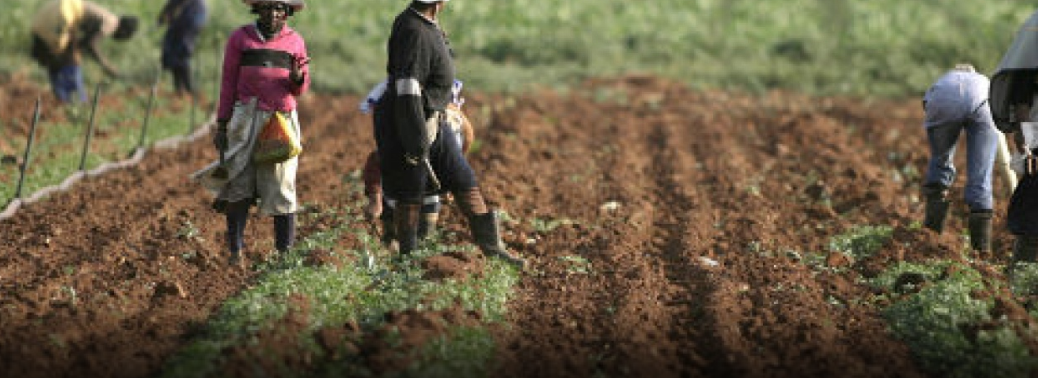
In News:
- • The people’s movement Ekta Parishad cut short its march of 25,000 landless and tribal people from Gwalior to Delhi last Saturday after the Centre promised to reconstitute the National Taskforce on Land Reforms. The march had been launched on October 2.
About- time line of EKTA Parishad:
- Ekta Parishad’s 2007 padayatra, which resulted in the setting up of the National Land Reforms Council, chaired by the Prime Minister. But the Council has not even met once.
- Six years ago, in October 2012, the movement had mobilized more than 60,000 landless people from across the country for a similar padayatra from Gwalior to Delhi.
- They disbanded at Agra after then Rural Development Minister Jairam Ramesh promised homestead land of ten cents for all landless rural poor households and a draft National Land Reform Policy, as part of a ten-point Agra agreement.
- To enforce the agreement, the Centre set up a 15-member task force on land reforms
- The government set up a task force headed by the rural development minister Jairam Ramesh and Tribal Affairs minister V Kishore Chandra Deo.
- The constitution of the 15-member task force on land reforms was one of the decisions of the Agra agreement.
Land reforms Policy,2013.
- At last the land reforms policy of government of India was brought out
Five goals:
- Distribute land to all rural landless poor
- Restore land unjustly taken from vulnerable communities such as the Dalit’s (untouchables) and Tribal
- Protect the land of the Dalit’s and Tribal including the Commons that they depend on going forward
- Liberalize leasing laws
- Improve land rights of women
Reason for land Reforms:
- The main characteristics of the agrarian structure which independent India inherited were:
- Absentee land ownership;
- Exploitation of tenants through high rents and insecurity of tenure;
- Unequal distribution of land;
- Tiny and fragmented holdings; and
- Lack of adequate institutional finance to agriculture.
Fines Fail to Deter Stubble Burning
16, Oct 2018
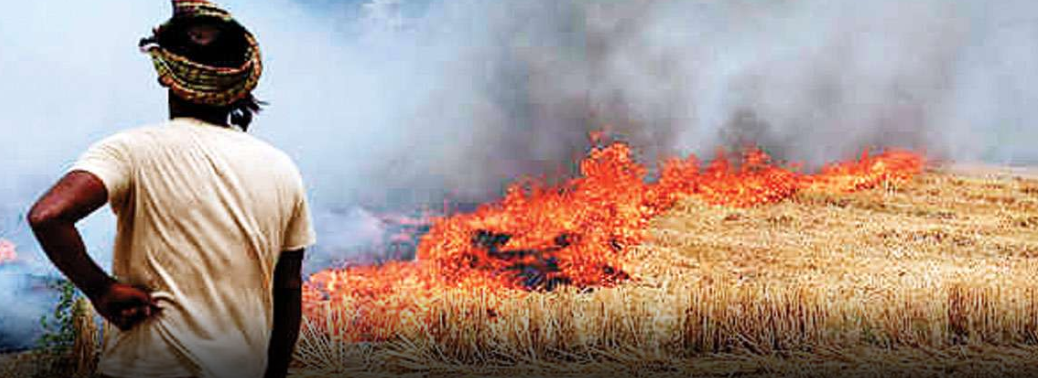
Why in News?
- The Centre and the States — Punjab, Haryana and Uttar Pradesh — have in several meetings through the year declared a “zero tolerance” policy on the burning of stubble for farmers.
Background:
- Between September 27 and October 14, the Punjab Pollution Control Board (PPCB) imposed ₹8,92,500 as fines — or “environmental compensation cess” as it is officially called — on farmers burning paddy stubble. However, they collected only ₹3,05,000, according to figures from the organisation.
Reason for the Fail:
- The fines are collected over time frequently the farmers don’t have money to immediately pay them. The Centre and the States — Punjab, Haryana and Uttar Pradesh — have in several meetings through the year declared a “zero tolerance” policy on the burning of stubble for farmers, which, according to various studies, contributes anywhere from 17% to 78% to the particulate matter-emission load in the city during winter.
- To discourage farmers in Punjab and Haryana — who are responsible for the bulk of such fires — the government has also disbursed ₹591 crore to these States to sell subsidised farm implements that can do away with stubble without having to burn them.
- Sometimes, due to farmers protest, sometimes they plead innocence and sometimes poverty made them failed to collect the fine.
- Despite a vigorous focus by governments on making mechanised farm implements — combine harvesters-cum-straw management system, seed drillers, rotary harvesters — available to farmers, it’s still inaccessible to many farmers with landholdings less than 5 acres or those not rich enough to invest in such machines.
- Delayed rains have shrunk the window further and different regions in Punjab have different harvesting times, in keeping with subtle weather differences.
- Then there’s the spike in diesel prices. Deploying the machines uses up nearly 5 litres of diesel per acre.
Punjab to Post Nodal Officers to Curb Stubbling Burning
16, Oct 2018
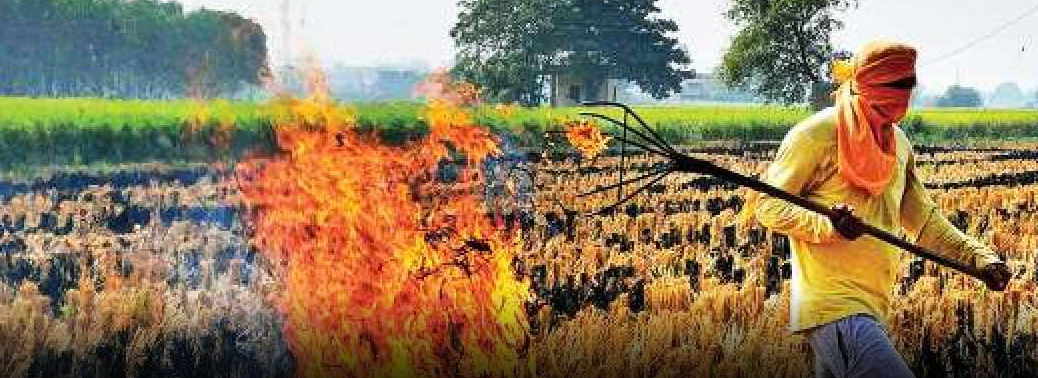
Why in News?
- To curb the menace of stubble burning, the State has decided to appoint nodal officers in 8,000 paddy growing villages.
- The villages have been identified by the Agriculture Department as those where paddy stubble is traditionally burnt.
1. What is Stubble Burning?
- Stubble burning is, quite simply, the act of removing paddy crop residue from the field to sow wheat. It’s usually required in areas that use the ‘Combine harvesting’ method which leaves crop residue behind. Now, what is combine harvesting?
- Combines are machines that harvest, thresh i.e separate the grain, and also clean the separated grain, all at once. The problem, however, is that the machine doesn’t cut close enough to the ground, leaving stubble behind that the farmer has no use for. There is pressure on the farmer to sow the next crop in time for it to achieve a full yield. The Quickest and cheapest solution, therefore, is to clear the field by Burning the stubble.
2. But is Burning the only solution?
- Not really, but it is the easiest and cheapest method available to farmers as of now. But the situation isn’t so grim after all. There are other options we can look at.
- The Most efficient technology to counter crop burning at the moment, seems to be the Turbo Happy seeder (THS). The THS is basically a machine mounted on a tractor that not only cuts and uproots the stubble, but can also drill wheat seeds on the soil that has just been cleared up. The straw is simultaneously thrown over the sown seeds to form a mulch cover. The THS can also be fitted with the super – straw management system (S-SMS) that spreads the straw evenly.
3. Can we Find other use for the stubble?
- Ideally, we should, traditionally, crop residue had a lot of benefits like thatching, or making beds for livestock and cattle. However, growing technology has found more efficient alternatives to this.
- ‘The First step to curb crop burning is to find uses for the stubble,” said Anumita Roychowdhury of Centre for science and Environment (CSE) to down to earth. One Option is to produce biomass with the residue to generate power. The straw can similarly be used to make pellets that serve as the sub – strata for mushroom cultivation, but the problem is not in finding alternatives to paddy straw, as there are many.
- The real issue is who cuts and collects the crop residue, and then takes responsibility for transporting them? As of now, the farmers have no incentive to take the pains of extracting crop residue from the earth, down to earth reports.
4. But Surely All these Alternatives come at a cost, Right?
- The THS costs approximately Rs 1.3 Lakh and the S-SMS is about Rs 1.2 Lakh. Then there is the cost of the combine, which is upwards of Rs 18 lakh, but the farmer does not have to own them. Just as combines are, these machines can also be used on a custom – hiring basis.
- Other alternatives, like residue incorporation costs 20 percent more than simply burning the stubble, while fully removing the residue costs 34 percent more than burning, according to Express tribune.
5. But Why is this only a problem in the Northern States?
- India Relies on its northern states of Punjab, Haryana, western Uttar Pradesh and Uttarakhand for wheat.Now, states in the south use combine harvesting too. But the clinching difference is that they don’t have the urgency to remove the stubble to make it ready for the next crop.
- To sow wheat right after paddy, the field has to be harvested and readied for the next crop. In the Punjab – Haryana – UP belt, the crucial time for the wheat crop to mature is in mid – April, when the temperature is about to cross 35 degree Celsius. For the wheat crop to reach full maturity and give maximum yield by then, the farmer has no option but to sow the crop latest, sot that it grows for a full 140 – 150-day duration.
- Add to this complication the Punjab preservation of subsoil Water Act 2009- Punjab’s water – saving law – which bans sowing of paddy before 15 may and transplanting it before 15 June. This leaves the farmer with very little time to sow and reap paddy, and then ready the field for wheat in just about 20 days.
6. So Won’t Reducing Paddy production Reduce stubble Too?
- Yes, that is simple math, but given that rice is a lucrative crop, how do we go doing this? The answer is to give incentive to farmers to grow other crops.
- The Centre and state governments could adopt methods to incentivise farmers, rather then penalising them. If Production of other crops, like maize, are made more lucrative, then farmers will switch to growing those. Ajay Vir Jakhar, chairman of the Punjab state Farmers commission in an article for The Print, suggests that the government allow production of ethanol from maize.
- Then paddy farmers have a reason to switch to maize, or at least devote half of their time to cultivating maize.
7. So Can we Really Blame the Farmers?
- Clearly farmers have little choice but to burn the stubble, given the pressure under which they have to sow the next crop. The National Green Tribune recommends penalising farmers who burn stubble. Punjab has attempted this, but to no avail. Stubble burning continues, and disgruntled farmers – who are already under debt – refuse to pay fines in the state. Up till the April – May wheat harvesting season this year, farmers in Punjab owed the Punjab Pollution Control Board (PPCB) Fines up to 61.32 lakh. Of this, Only Rs 18 lakh was recovered, the Indian Express reported. Now, another harvest season is upon us, but not much seems to have changed.
Fall Army worm
09, Aug 2018
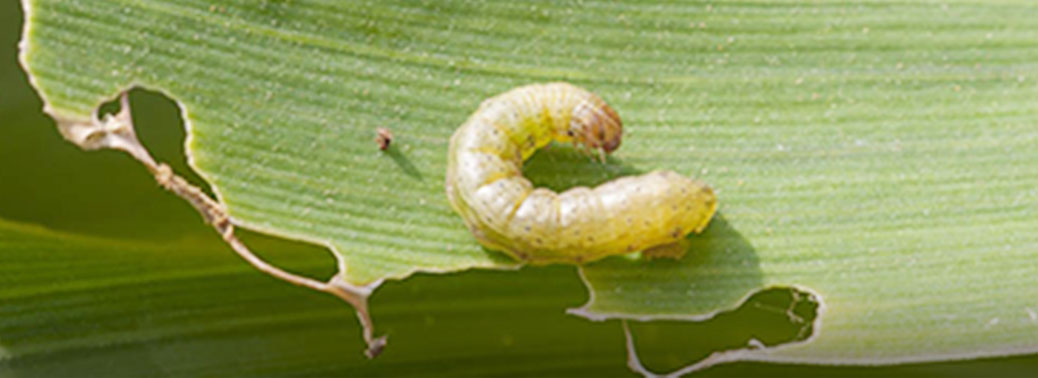
- A large-scale outbreak of a new pest named Fall armyworm is devastating maize crop throughout Karnataka.
- The finding is the first report of this pest in Asia.
- The study has confirmed the identity of the pest as Spodopte frugiperda, a native of the Western Hemisphere.
- The pest was first reported from the São Tomé and Príncipe islands and Nigeria in 2016 and spread across sub-Saharan Africa and established in 38 countries within two years.
- It has caused huge losses to staple cereals, especially maize and sorghum, affecting food security and trade.
- Present outbreak of the new pest will only add to the miseries of maize farmers, who have to bear the additional cost of plant protection.
About Fall Armyworm:
- Fall Armyworm is an insect native to tropical and subtropical regions of the Americas
- In the African continent, it was first detected in Central and Western Africa in early 2016
- In the larval stage, the insect causes damage to crops, feeding on more than 80 plant species.
- FAW primarily affects maize, but also rice and sorghum as well as cotton and some vegetables
- The moth can fly up to 100 km per night
- The female moth can lay up to a total of 1000 eggs in her lifetime
Study on Agriculture Policy in INDIA – ICRIER & OECD
23, Jul 2018
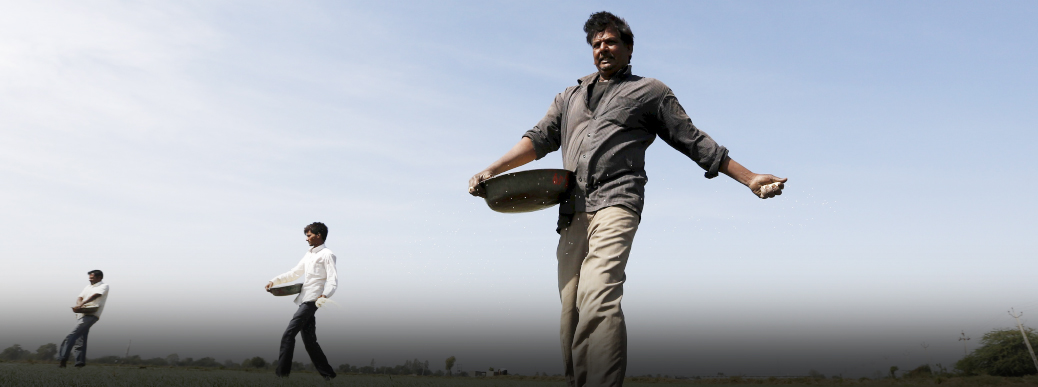
Agriculture Policies in India – proposes a set of policy measures that, taken together, would improve the incomes of farm households, improve nutrition outcomes for the most vulnerable members of Indian society, enable the farm and food sector to grow sustainably, and strengthen India’s competitiveness in global food markets.
The Report Highlights :
1. Notable progress made by the country’s agricultural sector over the past two decades.
2. The important challenges confronting the sector.
3. Declining but still persistent food insecurity and nutrition deficiencies, large numbers of small and resource poor farms
4. Increasing water scarcity, low productivity growth, and the uncertain impacts of climate change.
Findings:
1. There is no sufficiently strong mechanism exists to bring state and central level policy makers together to discuss problems, design solutions, and monitor performance for agriculture and allied sector.
2. Farmers in India are impacted by a combination of complex domestic market regulations and by import and export trade restrictions, which together often lead to producer prices that are below comparable international market levels.
3. Despite large subsidies to fertilisers, power, and irrigation, which offset somewhat the price-depressing effect of market interventions, the overall effect is that policy intervention actually reduces gross farm revenues by over 6% per year.
4. This is partly policy-induced and partly related to other inefficiencies in the marketing chain.
5. The report finds that consumers pay on average 25% less on all commodities as the result of policy interventions.
MSP Hiked
23, Jul 2018
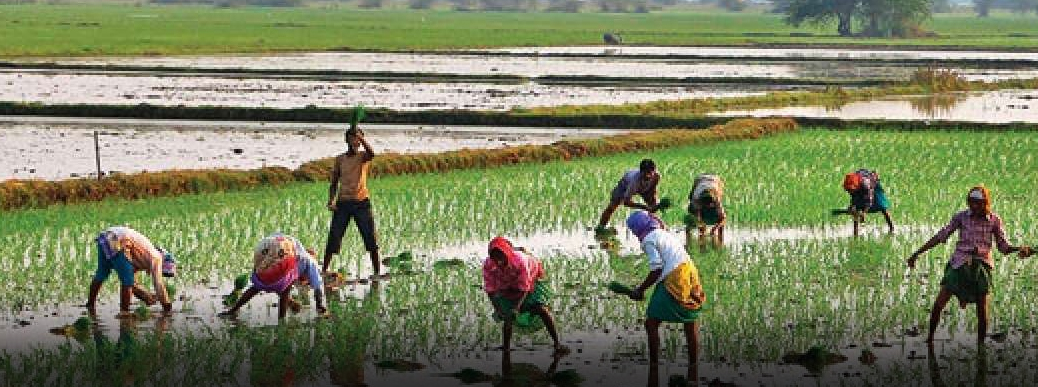
Union government hiked MSP for 15 kharif crops including paddy and pulses.
MSP:
What:
Minimum Support Price (MSP) is a form of market intervention by the Government of India to insure agricultural producers against any sharp fall in farm prices. It is a price at which the government buys crops from farmers, irrespective of its price.
When:
The minimum support prices are announced by the Government of India at the beginning of the sowing season for certain crops on the basis of the recommendations of the Commission for Agricultural Costs and Prices (CACP).
How:
CACP takes into account a comprehensive view of the entire structure of the economy of a particular commodity or group of commodities and include cost of production, changes in input prices, input-output price parity, trends in market prices, demand and supply, inter-crop price parity, effect on industrial cost structure, effect on cost of living, effect on general price level, international price situation, parity between prices paid and prices received by the farmers and effect on issue prices and implications for subsidy.
Different Ministries and Departments help the Commission to arrive at the MSP.
The lowest base A2- the one at which the minimum support price of most crops is at now, calculates only the cost of inputs for the farmer.
- The second base A2+FL-includes the imputed cost of unpaid family labour.
- The highest base C2- all of this and the imputed value of fixed capital assets and rental value.
Commodities covered:
- The MSP covers 23 crops that includes Cereals-paddy, wheat, barley, jowar, bajra, maize and ragi. Pulses-gram, arhar/tur, moong, urad and lentil.
- Oilseeds – groundnut, rapeseed/mustard, toria, soybeans, sunflower seed, sesamum, safflower seed and Niger seed. Others-copra, raw cotton, raw jute and Virginia flu cured (VFC) tobacco.
OR -
Khari crops:
Paddy, Bajra, Jowar, Maize, Ragi, Arhar, Moong, Urad, Cotton, Groundnut, Sunflower seed, soyabean black, Sesamum, Nigerseed.
-
Rabi crops:
Wheat, Barely, Gram, Masur, Rapseed, Safflower, Toria.
-
Other crops:
Copra, cotton, Jute, Sugarcane, Tobacco.
How it helps:
- MSP provide guarantee market for agriculture produce.
- The MSP helps to incentivize the framers and thus ensures adequate food grains production in the country.
- Support prices generally affect farmers decisions indirectly, regarding land allocation to crops, quantity of the crops to be produced etc. It is in this angle that the MSP becomes a big incentive for the farmers to produce more quantity.
- I gives sufficient remuneration to the farmers, provides food grains supply to buffer stocks and supports the food security programme through PDS and other programmes.
Problems in MSP:
- A rise in the MSP will lead to increase in food inflation.
- The Government of India has an MSP for 25 crops, but official procurement at the MSP is effectively limited to rice and wheat, and that too concentrated in a few States only.
- The procurement price will be announced soon after the harvest. Normally, the procurement price will be higher than the MSP, but lower than the market price.
- National Sample Survey’s (NSS) Situation Assessment Survey of Agricultural Households 2013, even for paddy and wheat, less than one-third of farmers were aware of the MSP; for other crops, such awareness was negligible.






